Forums
- Forums
- Axis And Allies Forum
- General Discussion
- Aviation News
Aviation News
Post a reply
- Go to Previous topic
- Go to Next topic
- Go to Welcome
- Go to Introduce Yourself
- Go to General Discussion
- Go to Screenshots, Images and Videos
- Go to Off topic
- Go to Works in Progress
- Go to Skinning Tips / Tutorials
- Go to Skin Requests
- Go to IJAAF Library
- Go to Luftwaffe Library
- Go to RAF Library
- Go to USAAF / USN Library
- Go to Misc Library
- Go to The Ops Room
- Go to Made in Germany
- Go to Campaigns and Missions
- Go to Works in Progress
- Go to Juri's Air-Raid Shelter
- Go to Campaigns and Missions
- Go to Works in Progress
- Go to Skinpacks
- Go to External Projects Discussion
- Go to Books & Resources
-
 Main AdminCapt. Andrew ?Dojo? Olson, F-35A Lightning II Demo Team commander and pilot, practices the F-35 demonstration, Jan. 23, 2019 at Luke Air Force Base, Ariz. Olson was conducting evasive tactical movements at low altitudes to showcase the F-35?s capabilities. (U.S. Air Force photo by Airman 1st Class Aspen Reid)
Main AdminCapt. Andrew ?Dojo? Olson, F-35A Lightning II Demo Team commander and pilot, practices the F-35 demonstration, Jan. 23, 2019 at Luke Air Force Base, Ariz. Olson was conducting evasive tactical movements at low altitudes to showcase the F-35?s capabilities. (U.S. Air Force photo by Airman 1st Class Aspen Reid)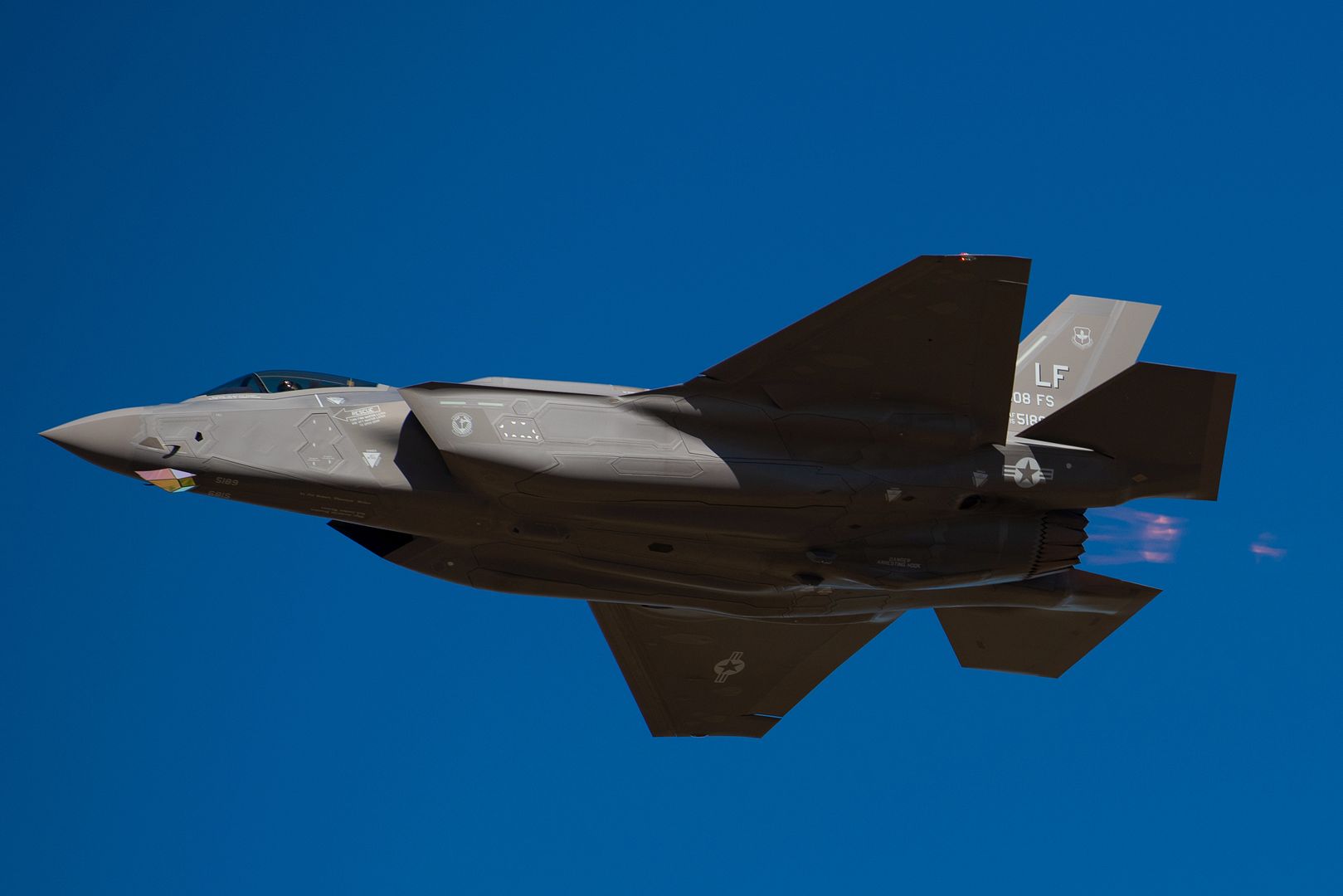
Capt. Andrew ?Dojo? Olson, F-35A Lightning II Demo Team commander and pilot, taxis after a demonstration practice, Jan. 23, 2019 at Luke Air Force Base, Ariz. The F-35A Lightning II?s mounted helmet display system is the most advanced system of its kind, displaying all the intelligence and targeting information the pilot needs. (U.S. Air Force photo by Airman 1st Class Aspen Reid)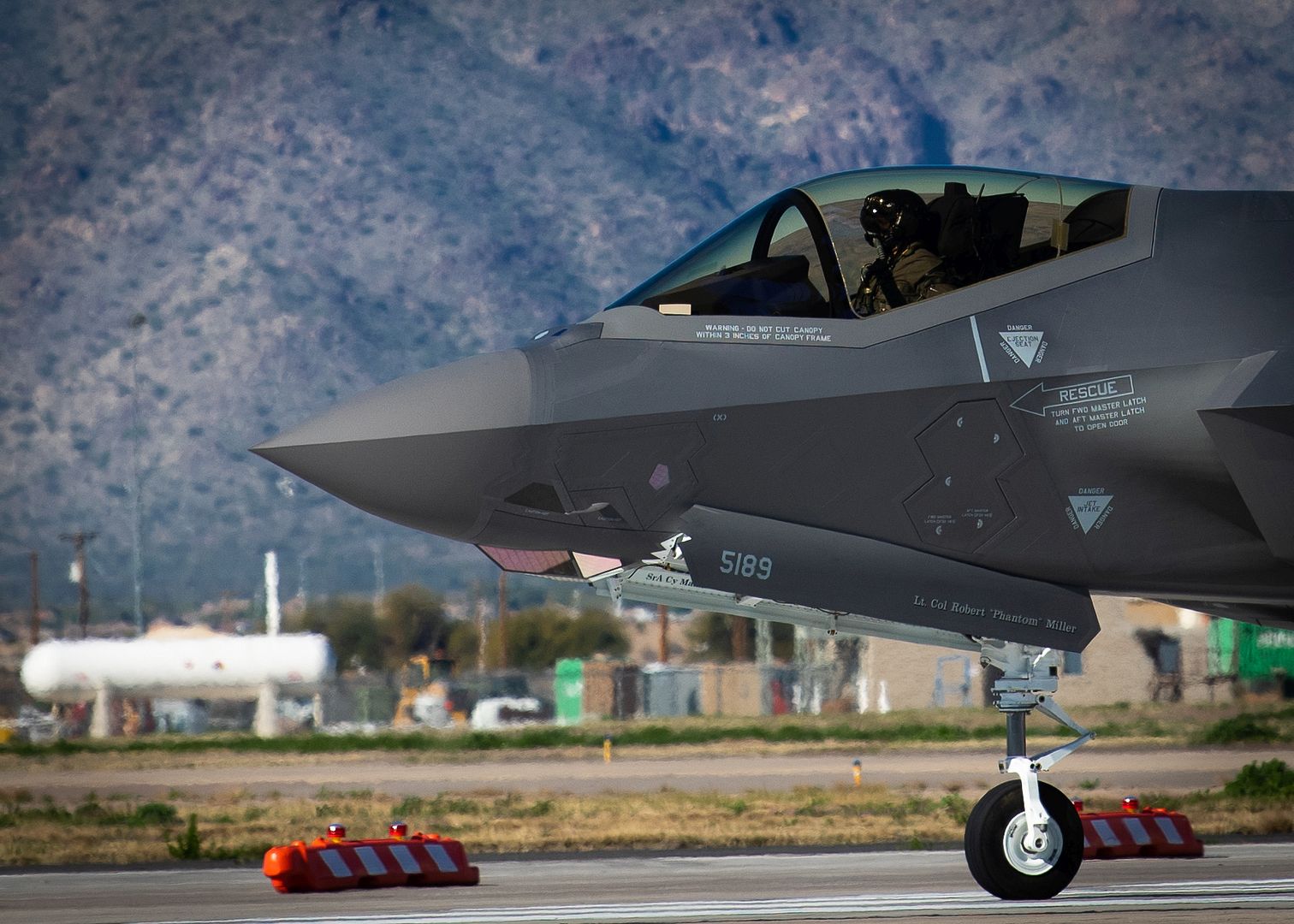
A C-5 Super Galaxy assigned to Dover Air Force Base takes off from Marine Corps Base Hawaii, January 24, 2019 during Exercise Patriot Palm. Exercise Patriot Palm is a joint-service exercise coordinated by the Air Force Reserve, designed to integrate first responders from federal, state, and local agencies and the military by providing quick response training in the event of a regional emergency or natural disaster. (U.S. Air Force photo by Tech. Sgt. Nicholas A. Priest)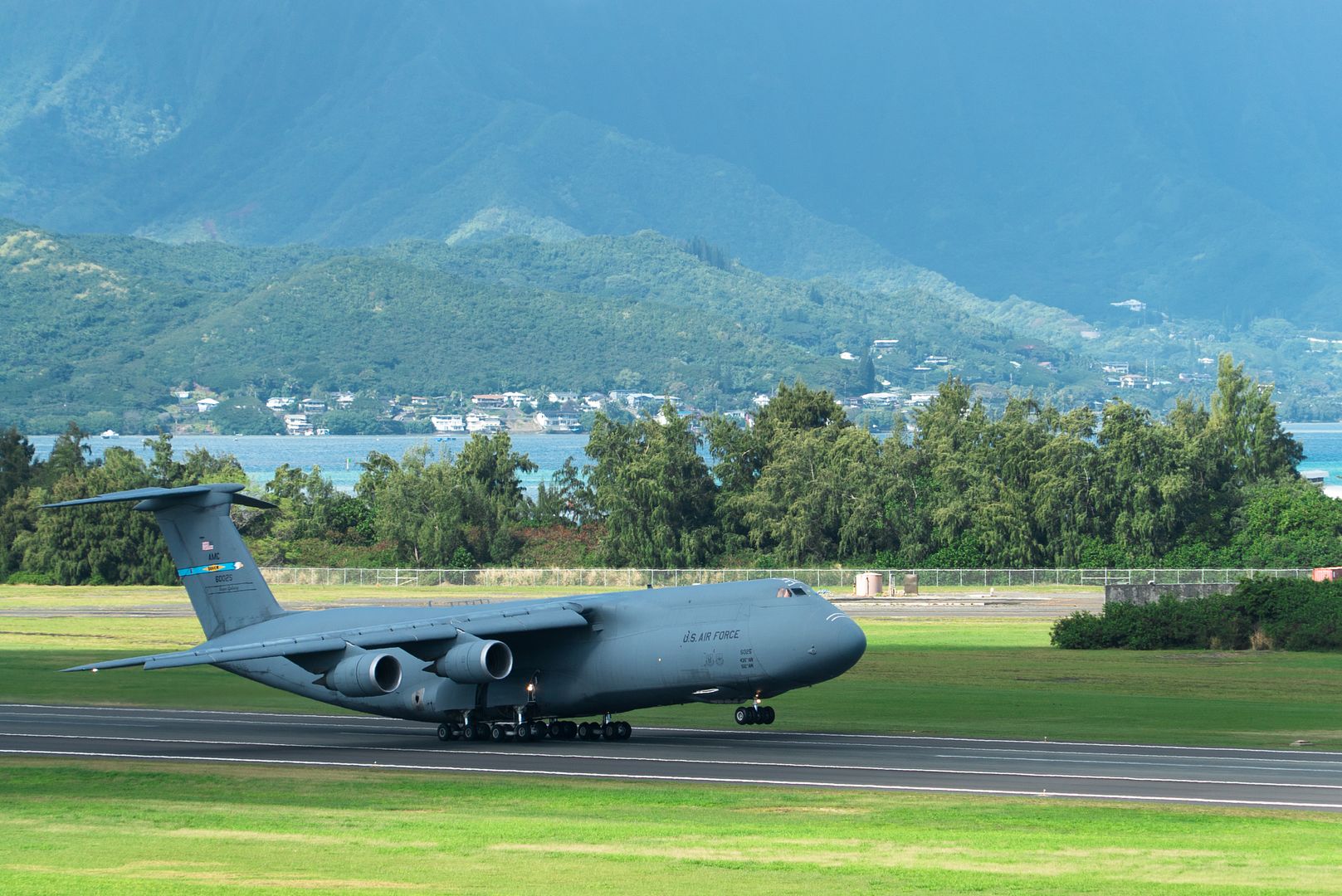
An F-35B Lightning II attack jet prepares to land aboard the amphibious assault ship USS Wasp (LHD 1) during flight operations underway in the East China Sea, Jan. 24, 2019. Naval aviators with Marine Fighter Attack Squadron 121, the fixed-wing component of the 31st Marine Expeditionary Unit's Aviation Combat Element, conduct take-off and landings during fixed-wing flight operations in the Marine Corps? newest, most advanced multi-role fighter, the F-35B. The 31st MEU, the Marine Corps? only continuously forward-deployed MEU partnering with the Wasp Amphibious Ready Group, provides a flexible and lethal force ready to perform a wide range of military operations as the premier crisis response force in the Indo-Pacific region. (U.S. Marine Corps photo by Gunnery Sgt. T. T. Parish/Released)
A U.S. Navy MH-60S Seahawk helicopter belonging to Helicopter Sea Combat Squadron 25 prepares to land during flight operations aboard the amphibious assault ship USS Wasp (LHD 1), underway in the East China Sea, Jan. 24, 2019. Naval aviators with HSC-25, along with their crew of rescue swimmers, fly constantly during flight operations aboard the Wasp ? Marine Medium Tiltrotor Squadron 262 (Reinforced) and Marine Fighter Attack Squadron 121 comprise the Aviation Combat Element for the 31st Marine Expeditionary Unit. Its naval aviators fly the MV-22B Osprey tiltrotor aircraft and the F-35B Lightning II attack jet. The 31st MEU, the Marine Corps? only continuously forward-deployed MEU partnering with the Wasp Amphibious Ready Group, provides a flexible and lethal force ready to perform a wide range of military operations as the premier crisis response force in the Indo-Pacific region. (U.S. Marine Corps photo by Gunnery Sgt. T. T. Parish/Released)
EAST CHINA SEA (Jan. 25, 2019) - An F-35B Lightning II jet belonging to Marine Fighter Attack Squadron 121, the fixed wing component of 31st Marine Expeditionary Unit's (MEU) Aviation Combat Element, takes off to participate in a joint defense exercise with U.S. Air Force aircraft. Wasp, flagship of the Wasp Amphibious Ready Group, with embarked 31st MEU, is operating in the Indo-Pacific region to enhance interoperability with partners and serve as a ready-response force for any type of contingency. (U.S. Navy photo by Mass Communication Specialist 3rd Class Benjamin F. Davella III)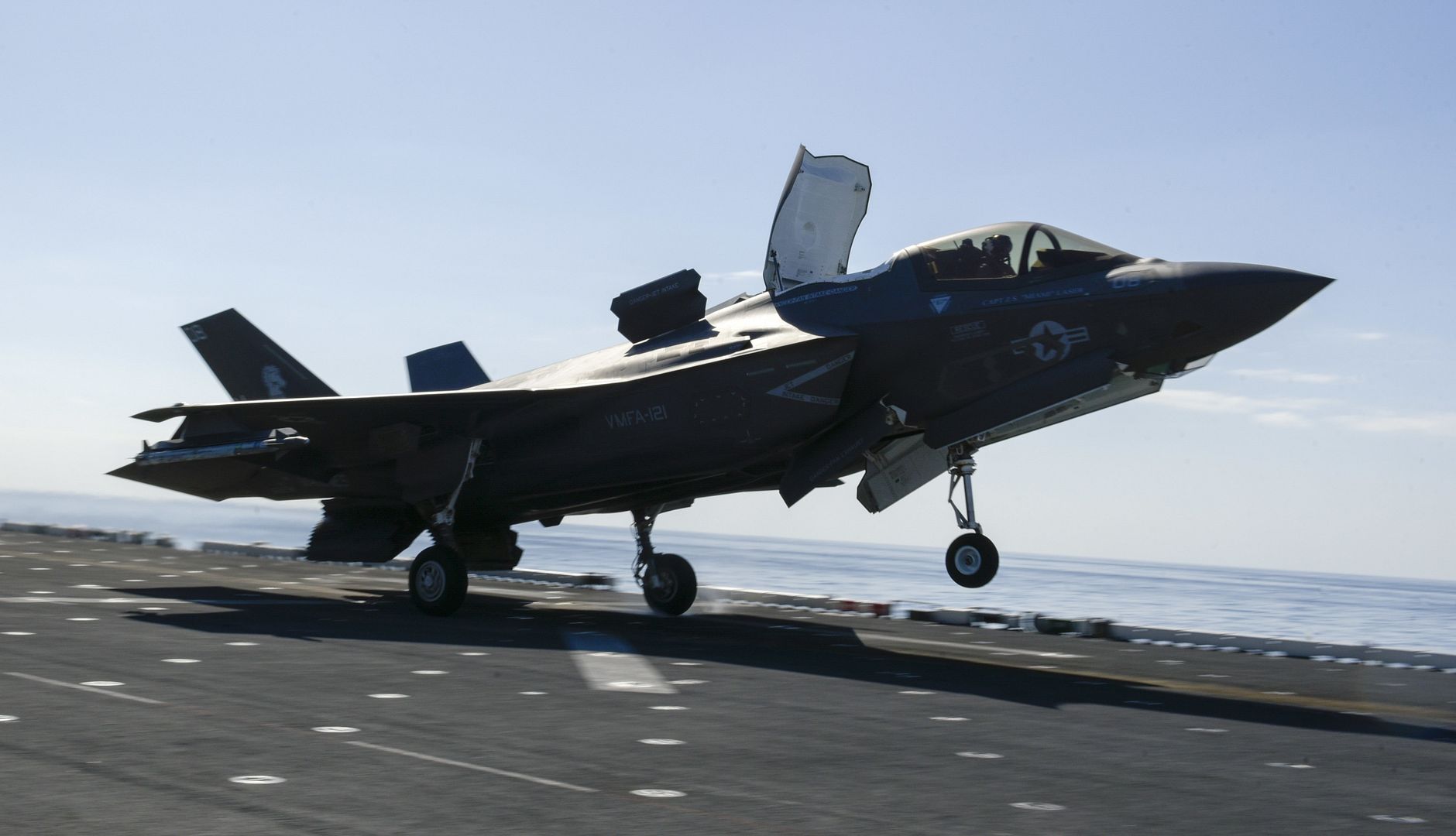
EVERETT, Wash., Jan. 25, 2019 ? The first two Boeing [NYSE: BA] KC-46 Pegasus aircraft departed Everett?s Paine Field this morning for McConnell Air Force Base, where the 22nd Air Refueling Wing will be the first unit to have the world?s newest air refueling tankers.
McConnell, in Wichita, Kan., will receive two more tankers in the weeks ahead. Then Oklahoma?s Altus Air Force Base will receive four planes to support aircrew training.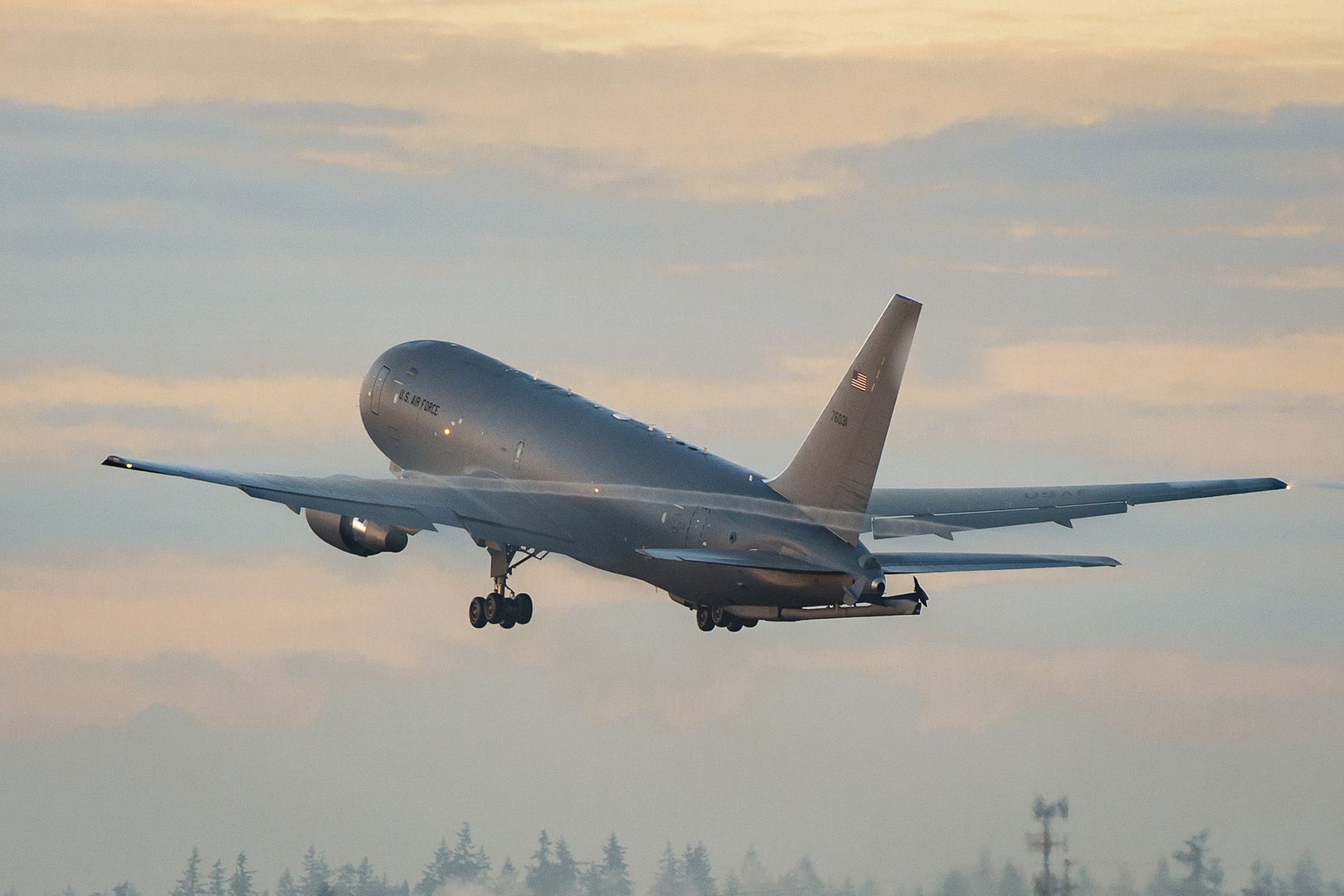
The Air Force will soon begin evaluating the KC-46?s systems in operationally realistic scenarios, which is required before the aircraft can be used in combat. It will also continue validating the KC-46?s refueling capabilities, with aircraft including the B-2 bomber, C-5 cargo plane, and F-35 fighter. Prior testing involved the B-52 bomber, C-17 cargo plane, and F-15E and F/A-18 fighters, among others.
The Bell V-280 Valor successfully achieved its namesake optimal cruise speed of 280 knots on Wednesday, 23 January 2019 at our Flight Research Center in Arlington, TX.
Building on a full year?s worth of testing and more than 85 hours of flight time, Bell?s V-280 Valor reached its namesake cruising speed of 280 knots true airspeed this week.
Bell and Team Valor continue to methodically and very successfully expand the flight envelope. The aircraft continues to prove its performance is well beyond legacy rotorcraft and will deliver revolutionary capability for warfighters as part of the Future of Vertical Lift (FVL) program.
It is a remarkable achievement to hit this airspeed for the V-280 Valor in just over a year of flight testing. Beyond the exemplary speed and agility of this aircraft, this significant milestone is yet another proof point that the V-280 is mature technology, and the future is now for FVL capability set 3.
Keith Flail, vice president of Advanced Vertical Lift Systems at Bell
Purpose-built to conduct long range assault at twice the speed and range of existing medium lift helicopters, the V-280?s technical maturity demonstrates that close collaboration between government and industry can deliver transformational capabilities in a rapid and sustainable process.
Cruising at twice the speed of legacy helicopters, with double the range, really changes the way the U.S. military can enable multi-domain operations. By eliminating forward refueling points alone, leaders can focus on operational goals while minimizing logistical burdens.
Ryan Ehinger, V-280 program manager at Bell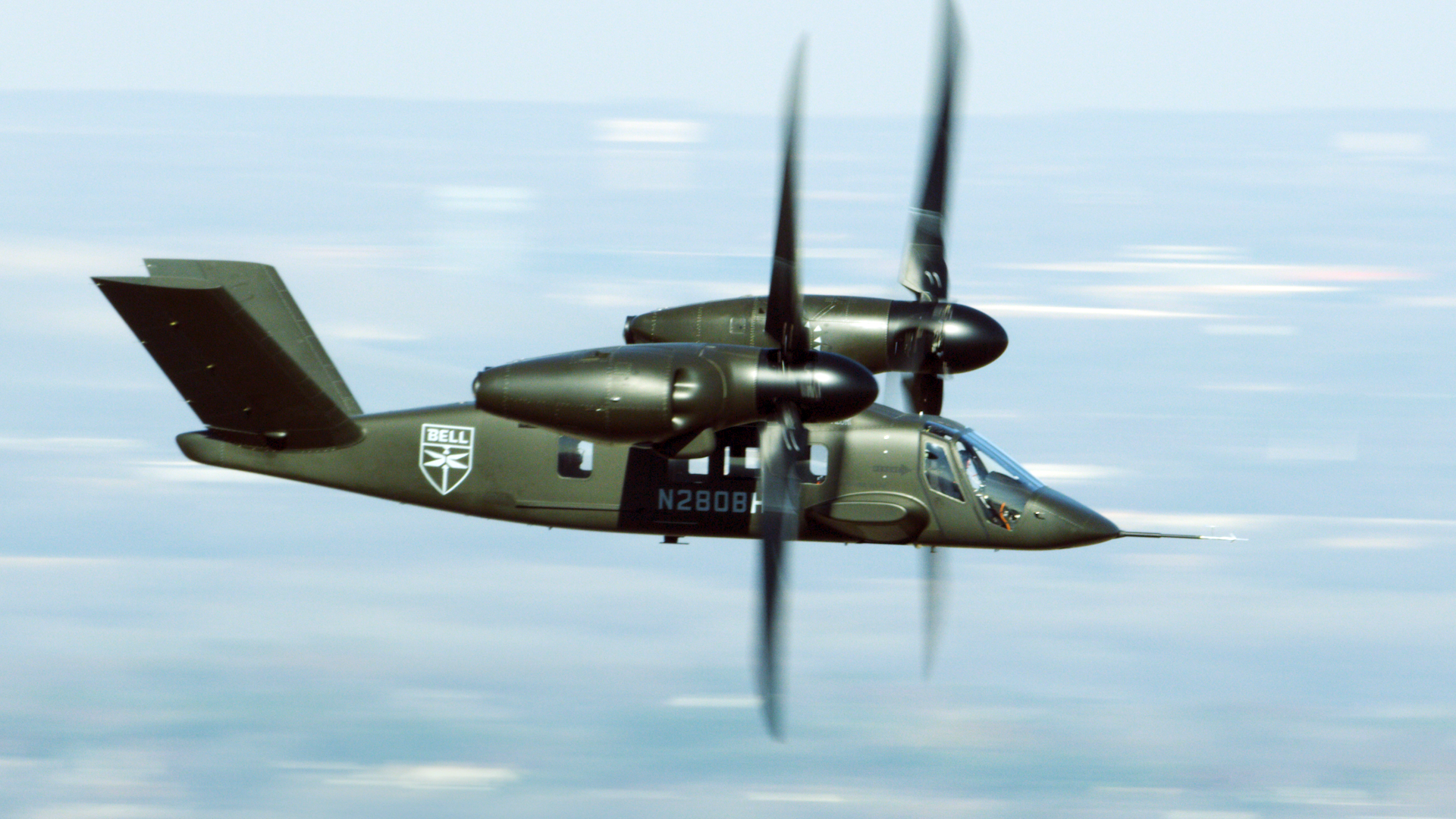
Date: 25 Jan 2019
The Royal Air Force has released stunning images of a unique aircraft formation to celebrate forty years of service by the Tornado GR4 fast jet.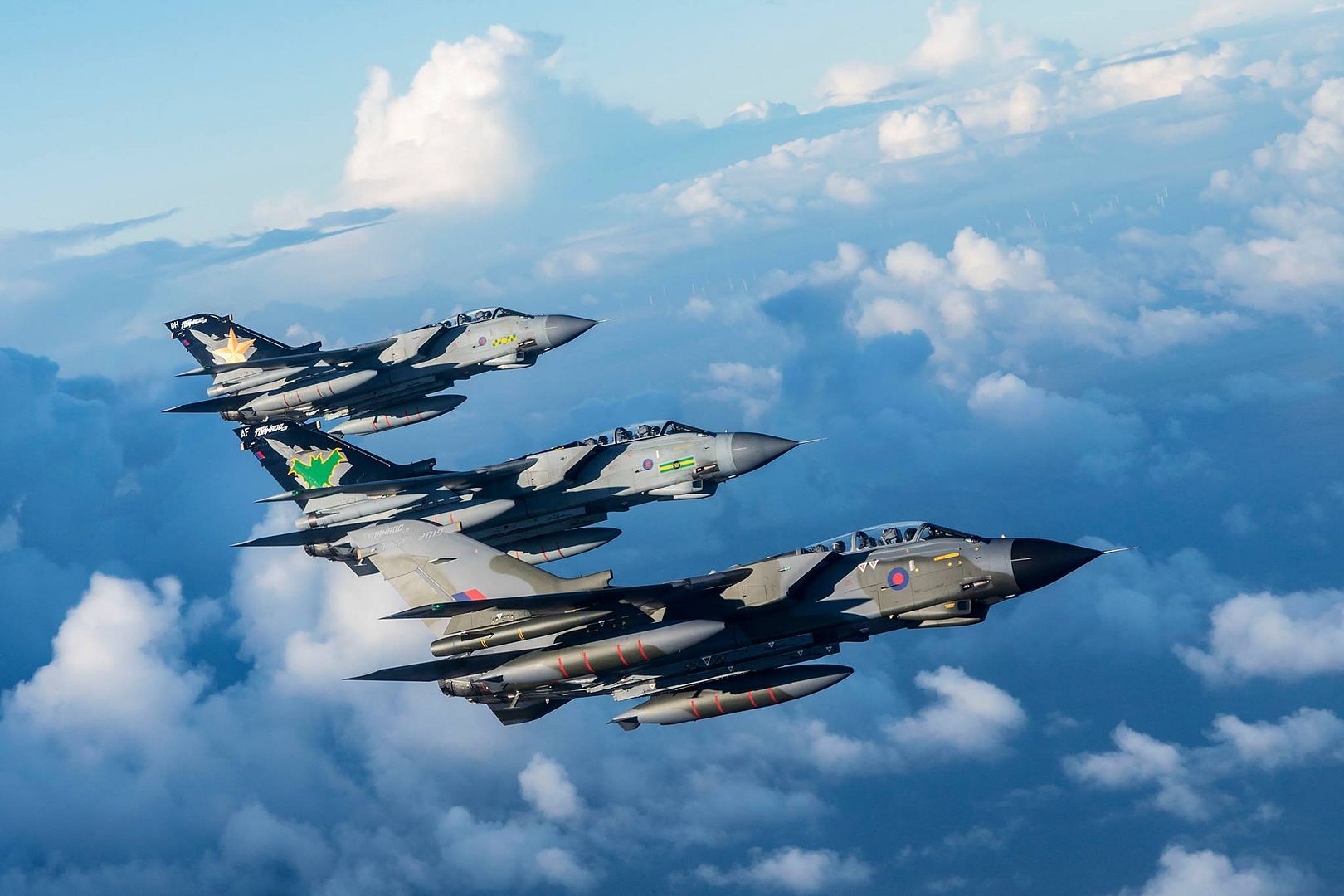
When the Tornado is withdrawn from service on 31st March 2019 it will bring to an end four decades of service during which the aircraft has formed the backbone of UK airpower. Three training variants of the Tornado have received special markings including a camouflage scheme which the Tornado sported in its early career.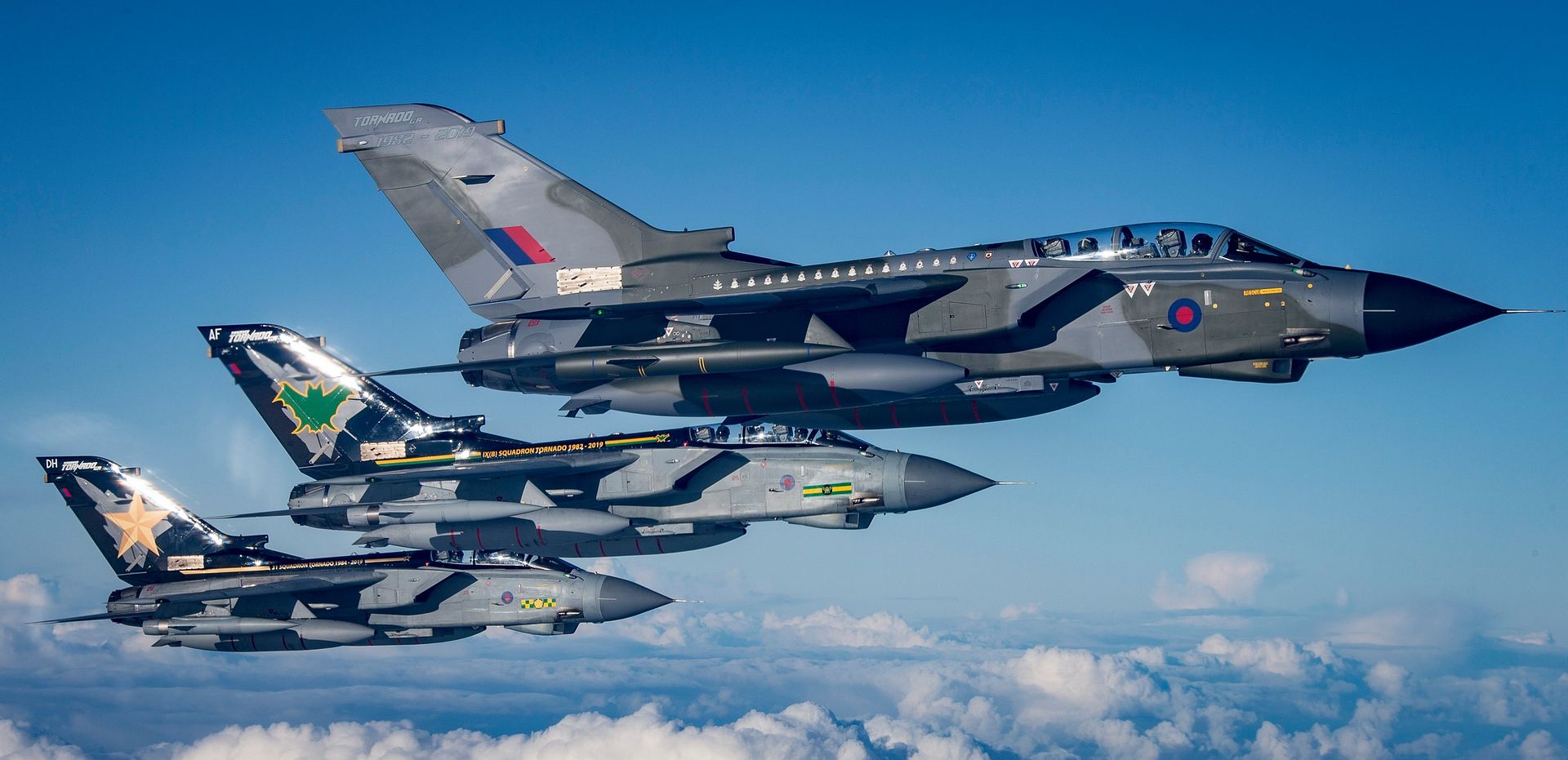
The Tornado first entered RAF service in 1979, principally in the Cold War nuclear strike and interdiction role. Its combat debut in the 1991 Gulf War heralded a period of near continuous operations which continue to this date.
Some 28 years after those first missions to help liberate Kuwait the RAF?s two remaining Tornado squadrons, IX(B) and 31 Squadrons, remain on operations in the Middle East fully committed to the fight against Daesh as part of the Global Coalition effort.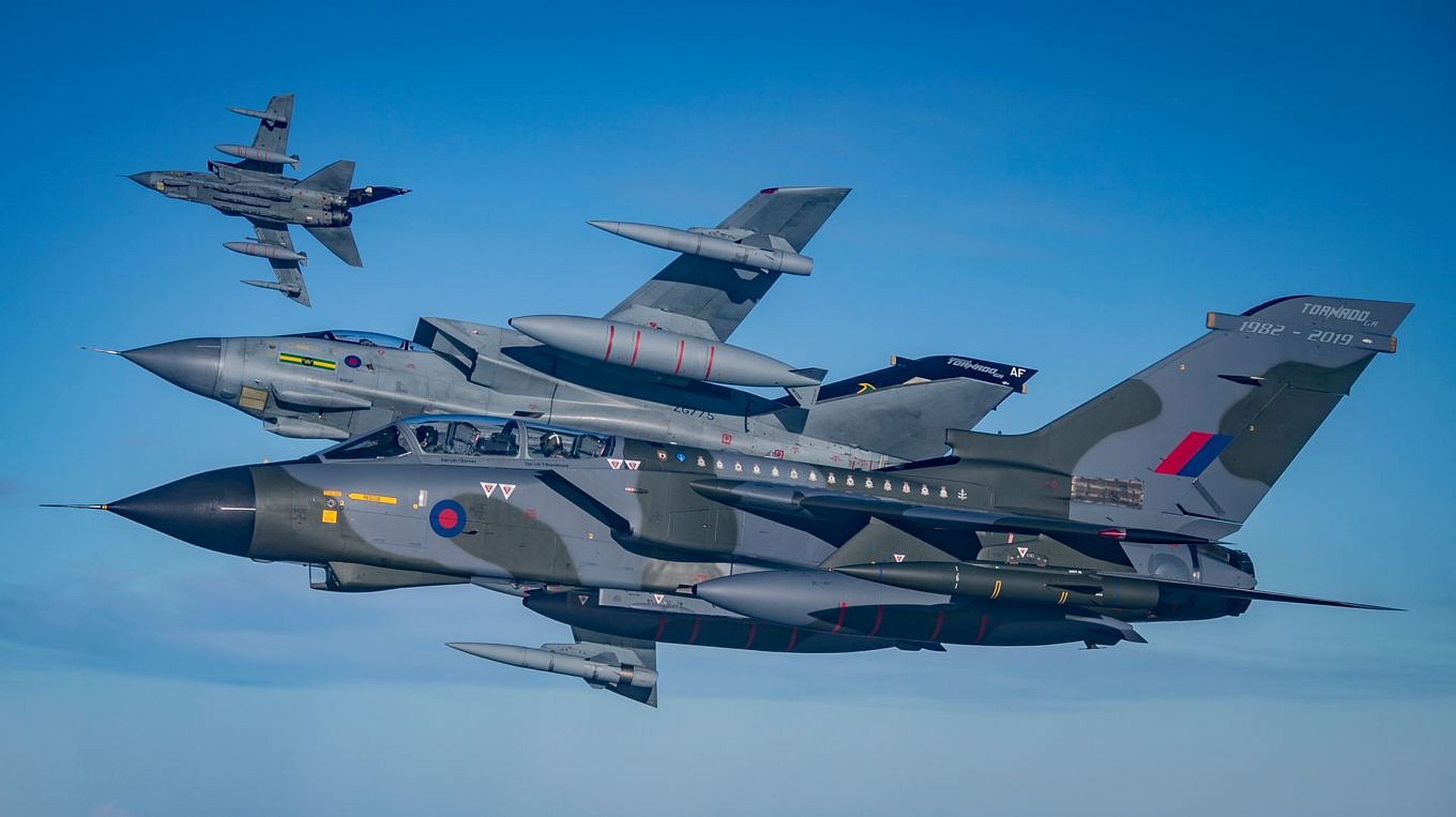
-
 Main AdminA KC-46A Pegasus flies over McConnell prior to landing Jan. 25, 2019, at McConnell Air Force Base, Kansas. Team McConnell crews delivered the first two KC-46A Pegasus aircraft from Seattle. (U.S. Air Force photo by Airman 1st Class Michaela R. Slanchik)
Main AdminA KC-46A Pegasus flies over McConnell prior to landing Jan. 25, 2019, at McConnell Air Force Base, Kansas. Team McConnell crews delivered the first two KC-46A Pegasus aircraft from Seattle. (U.S. Air Force photo by Airman 1st Class Michaela R. Slanchik)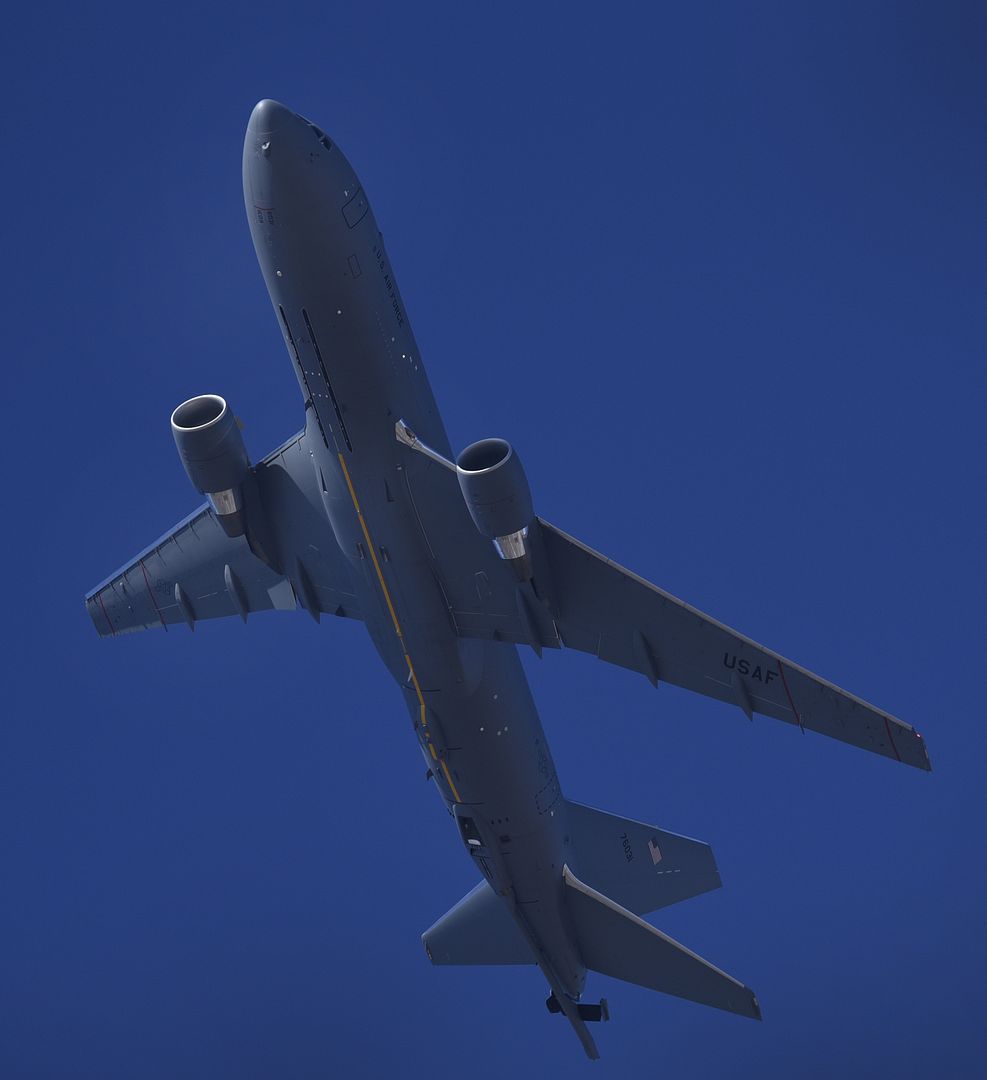
The first KC-46A Pegasus touches down Jan. 25, 2019, at McConnell Air Force Base, Kan. The KC-46?s new technologies and capabilities will equip the 344th and 924th Air Refueling Squadrons with the most advanced air refueling platform in the Air Force. (U.S. Air Force photo by Airman 1st Class Skyler Combs)
The first KC-46A Pegasus delivered to Team McConnell, sits on the flightline with a KC-135 Stratotanker close behind it, Jan. 25, 2019, McConnell Air Force Base, Kan. McConnell received two KC-46As, the next generation in air refueling aircraft. The KC-46A joined the ranks of Team McConnell today, and with its arrival, a new era of aerial refueling and mobility capabilities has dawned.(U.S. Air Force photo by Tech. Sgt. Abigail Klein)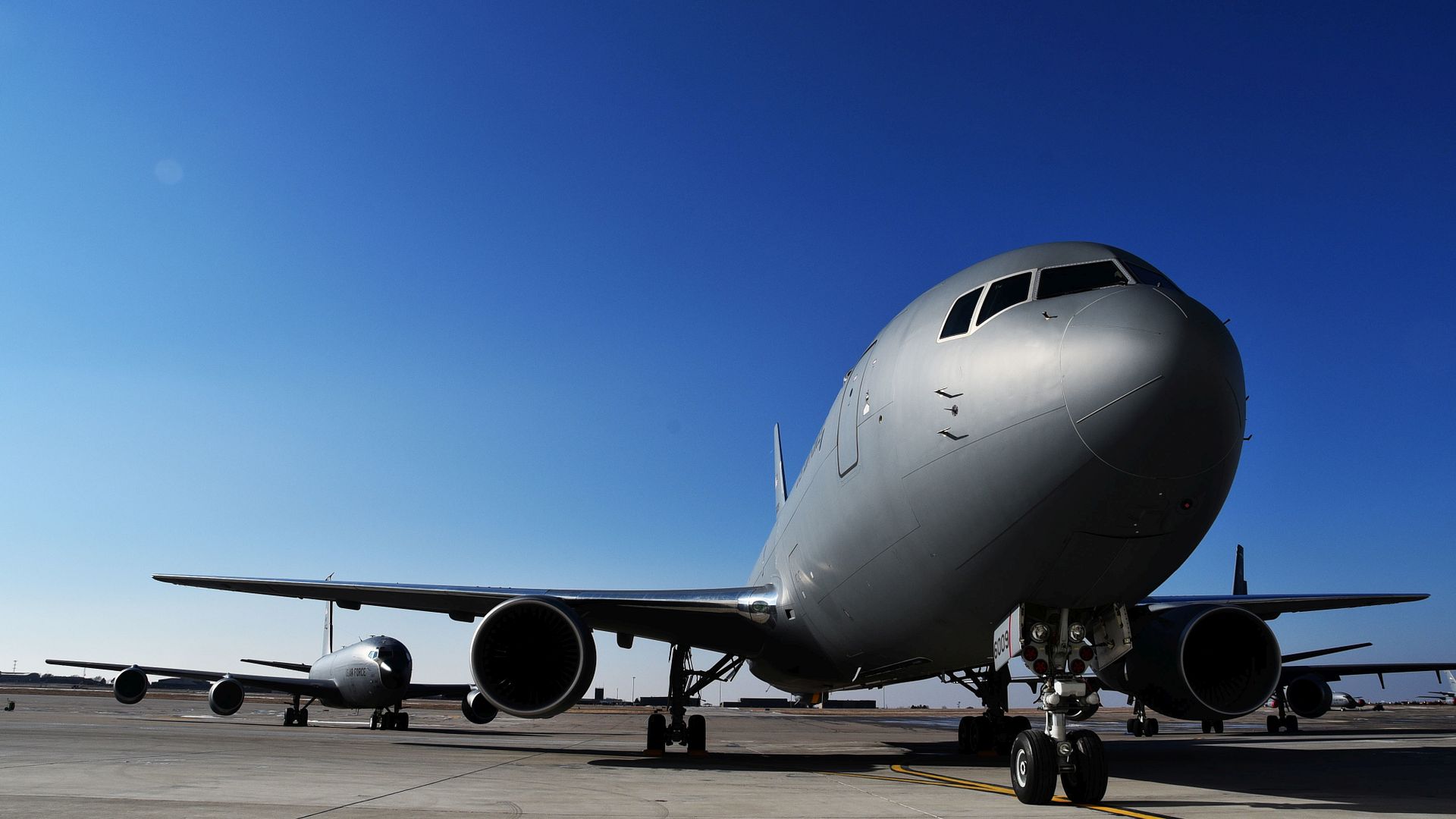
A U.S. Air Force C-5M Super Galaxy assigned to Dover Air Force Base departs Marine Corps Base Hawaii, Hawaii, January 27, 2019, during Exercise Patriot Palm. Exercise Patriot Palm is a joint-service exercise coordinated by the Air Force Reserve, designed to integrate first responders from federal, state, and local agencies and the military by providing quick response training in the event of a regional emergency or natural disaster. (U.S. Air Force photo by Tech. Sgt. Nicholas A. Priest)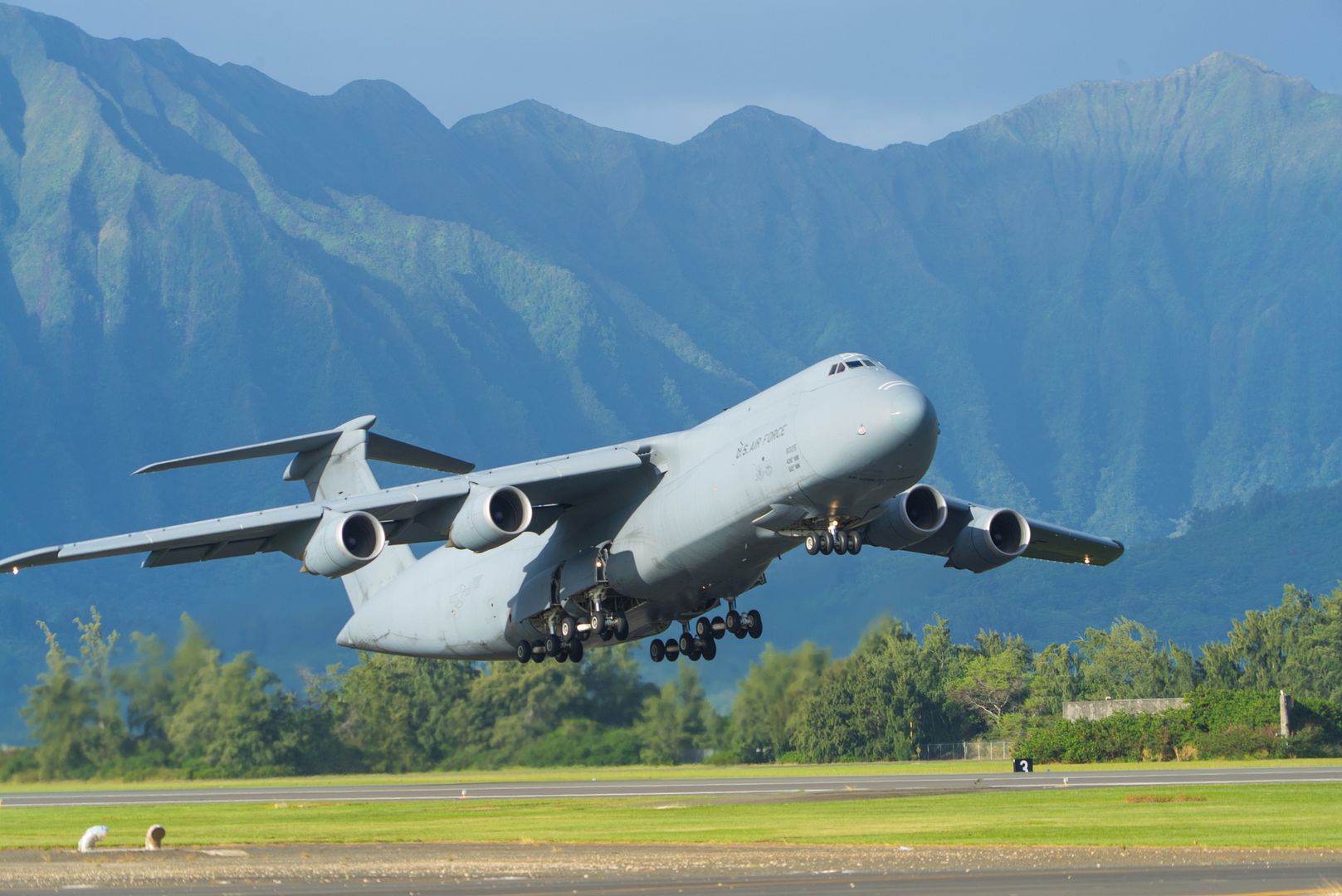
Aircraft maintainers assigned to the 180th Fighter Wing, Ohio Air National Guard, prepare F-16 Fighting Falcons for a training sortie at Patrick Air Force Base, Jan. 28, 2019. The Patrick AFB deployment will be a mutually beneficial exercise that brings together two ANG units with dissimilar fighter aircraft to conduct a variety of air-to-air operations and sharing of best practices. (Air National Guard photo by Senior Airman Hope Geiger)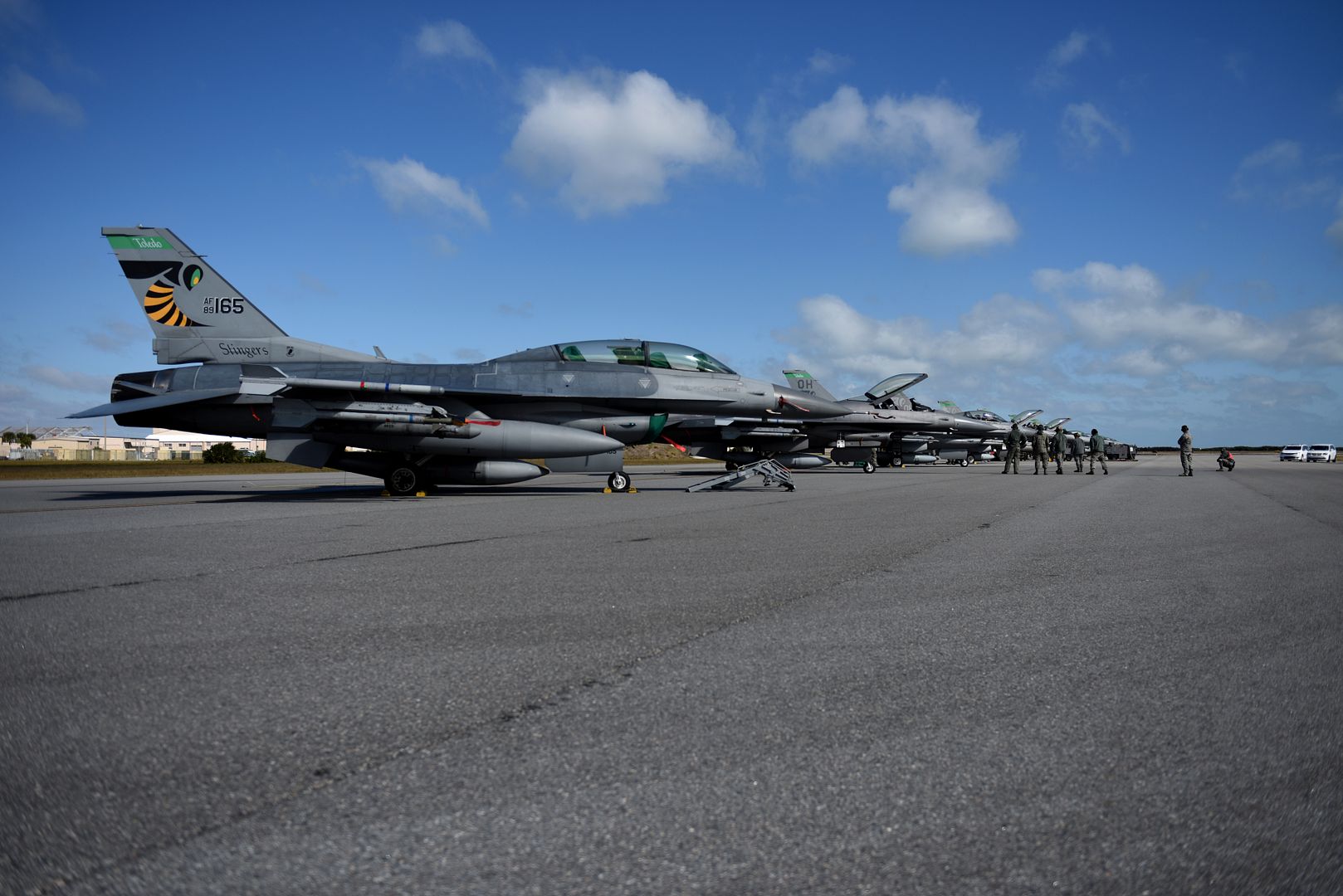
A U.S. Marine Corps MV-22B Osprey tiltrotor aircraft, assigned to Marine Medium Tiltrotor Squadron (VMM) 262 (Reinforced), with the embarked 31st Marine Expeditionary Unit (MEU), takes off from the flight deck of the amphibious assault ship USS Wasp (LHD 1) during night flight operations in the Philippine Sea Jan. 28, 2019. The Wasp, flagship of the Wasp Amphibious Ready Group, with embarked 31st MEU, is operating in the Indo-Pacific region to enhance interoperability with partners and serve as a ready-response force for any type of contingency. (U.S. Navy photo's by Mass Communication Specialist 2nd Class Sarah Myers)
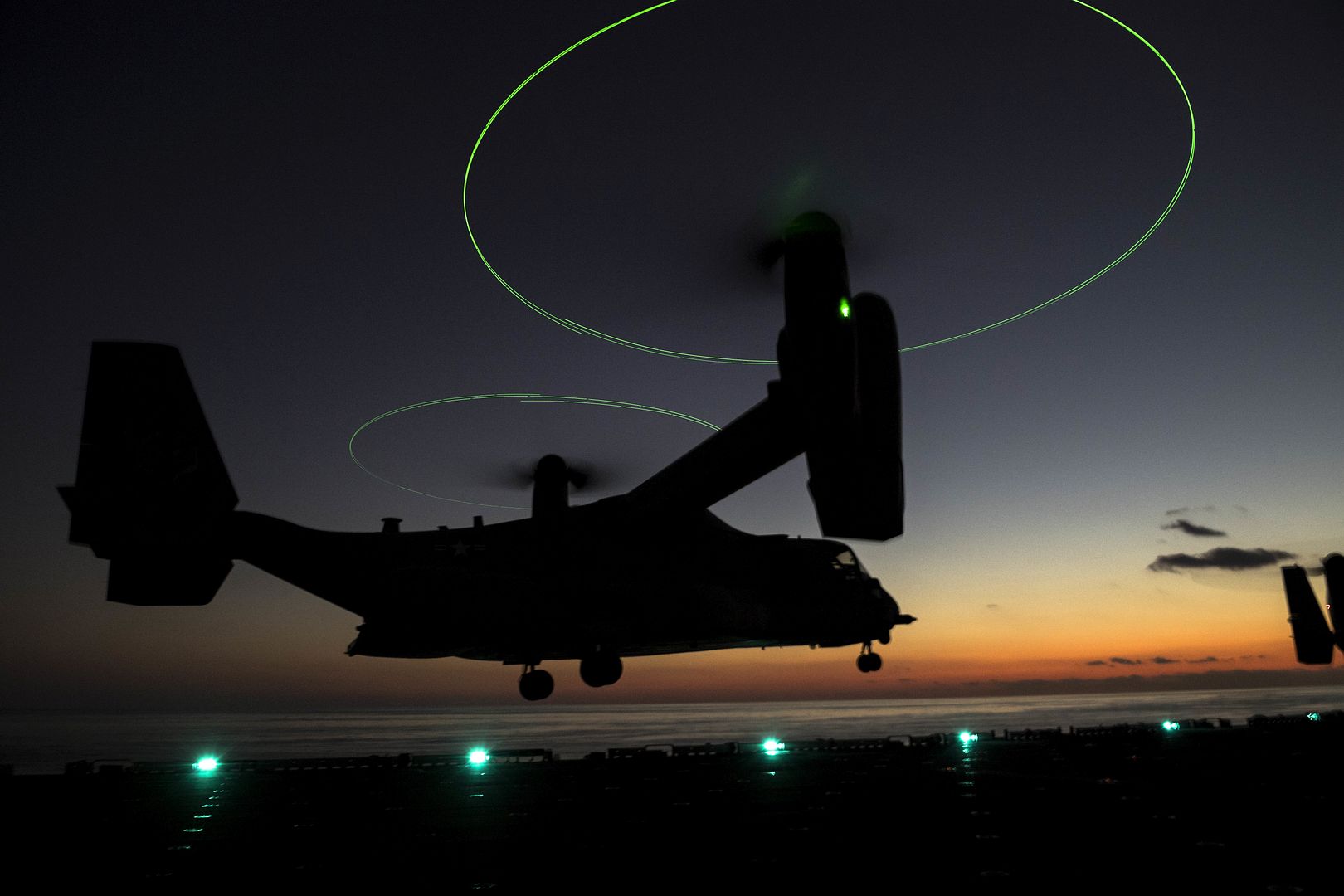
PHILIPPINE SEA (Jan. 28, 2019) - An F-35B Lightning II aircraft belonging to Marine Fighter Attack Squadron 121, the fixed wing component of 31st Marine Expeditionary Unit's Aviation Combat Element, takes off from the amphibious assault ship USS Wasp (LHD 1). Wasp, flagship of the Wasp Amphibious Ready Group, with embarked 31st Marine Expeditionary Unit, is operating in the Indo-Pacific region to enhance interoperability with partners and serve as a ready-response force for any type of contingency. (U.S. Navy photo by Mass Communication Specialist 3rd Class Benjamin F. Davella III)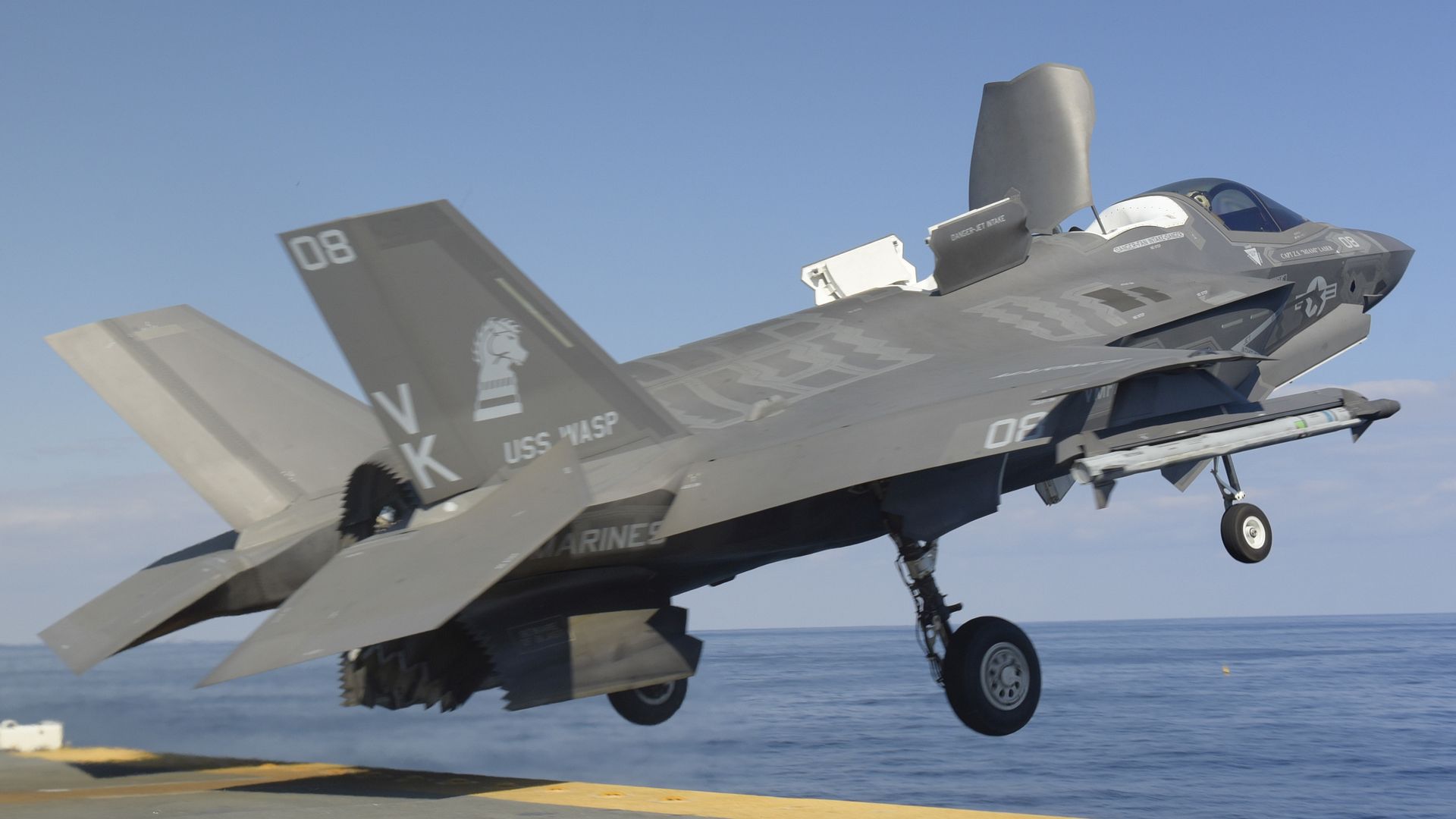
E-8C Joint STARS (JSTARS) pilots assigned to the 16th Airborne Command and Control Squadron at Robins Air Force Base, Georgia, prepare to take off Jan. 24, 2019 at Nellis Air Force Base, Nevada. JSTARS, Joint Surveillance Target Attack Radar System, is a battle management and command and control aircraft capable of airborne ground surveillance. (U.S. Air Force photo's by Airman 1st Class Bailee A. Darbasie)
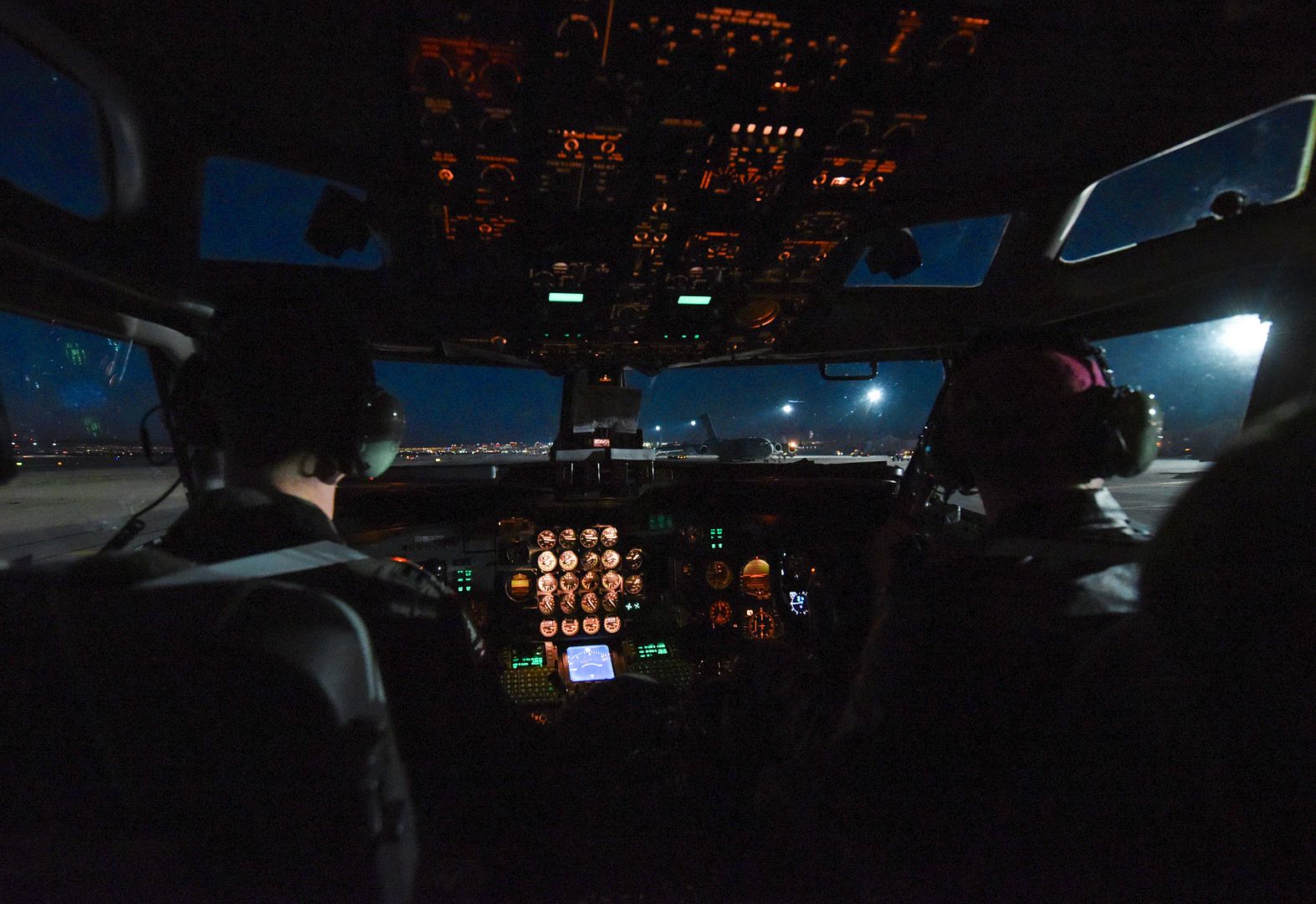
An E-8C Joint STARS (JSTARS) assigned to Robins Air Force Base, Georgia, prepares to take off Jan. 24, 2019 at Nellis Air Force Base, Nevada. JSTARS, Joint Surveillance Target Attack Radar System, participated in several Green Flag exercises. (U.S. Air Force photo by Airman 1st Class Bailee A. Darbasie)
ARLINGTON, Va., Jan. 28, 2019 ? The U.S. Navy has awarded Boeing [NYSE: BA] a $2.4 billion production contract for the next 19 P-8A Poseidon aircraft. The contract includes 10 aircraft to add to the current inventory of P-8As in the U.S. Navy fleet, all five jets currently under contract for Norway and the four aircraft remaining for the existing United Kingdom contract, bringing the total United Kingdom acquisition to nine aircraft.
The United Kingdom and Norway are acquiring the Boeing aircraft through the Foreign Military Sales process and will receive a variant designed and produced for the U.S. Navy called the P-8A Poseidon. The United Kingdom will receive their first aircraft in 2019 and Norway will begin receiving aircraft in 2021.
The P-8 is a long-range multi-mission maritime patrol aircraft capable of broad-area, maritime and littoral operations. A military derivative of the Boeing Commercial Next-Generation 737 airplane, the P-8 combines superior performance and reliability with an advanced mission system that ensures maximum interoperability in the battle space.
The P-8 is militarized with maritime weapons, a modern open mission system architecture, and commercial-like support for affordability. The aircraft has been modified to include a bomb bay and pylons for weapons ? two weapons stations on each wing ? and can carry 129 sonobuoys. The aircraft is also fitted with an in-flight refueling system. With more than 180,000 flight hours to date, P-8 variants, the P-8A Poseidon and the P-8I, patrol the globe performing anti-submarine and anti-surface warfare; intelligence, surveillance and reconnaissance; humanitarian; and search and rescue missions.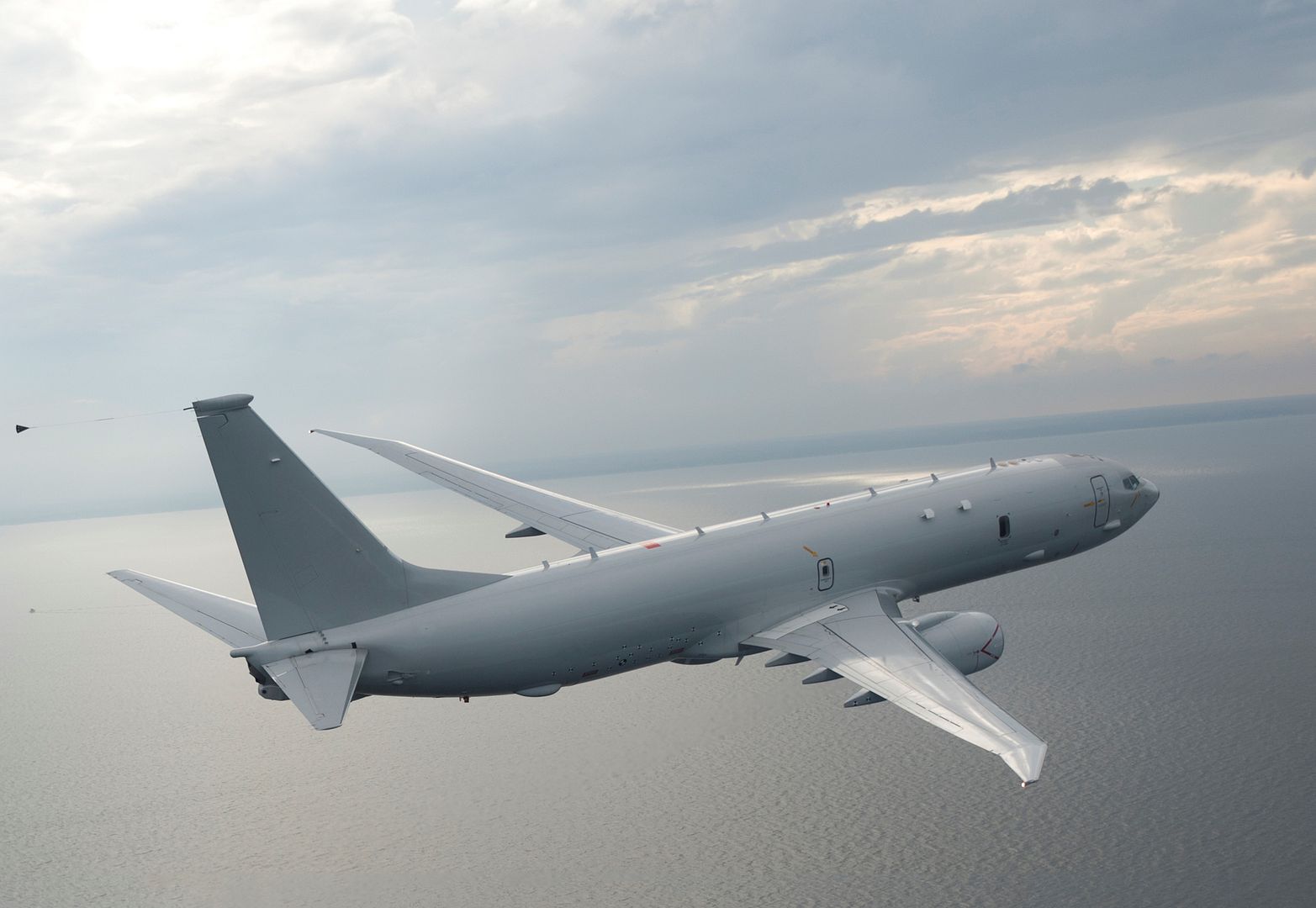
Press release
25 January 2019
Supported by Sweden, Saab has today submitted its proposal for the Swiss New Fighter Aircraft procurement to armasuisse, the Swiss defence procurement agency. Saab offers Gripen E and a comprehensive industrial participation programme for Swiss industry corresponding to 100 percent of the contract value.
The proposal consisting of options for 30, and 40, new build Gripen E fighter aircraft is a response to the Request for Proposal (RFP), which armasuisse issued 6 July 2018. Switzerland has a need to replace its fighter fleet of F/A-18 Hornet and F-5 E/F Tiger aircraft.
?The proposed Gripen E solution features the latest available technology and low acquisition, operation and support costs that will give Switzerland an optimal fleet size, with the best total operational effect over the coming decades,? says Jonas Hjelm, head of Saab business area Aeronautics.
As part of the proposal to Switzerland, Saab offers Swiss industrial participation worth 100 percent of the contract value. The co-operation with Swiss industry, across all regions of the country, in manufacturing, maintenance and technology will improve competence and capabilities aimed at the sustainment and further development of the Gripen E system in Switzerland. Saab has a historical, strong and broad supplier base in Switzerland, which this programme will further expand to assure cost efficient through-life co-operation.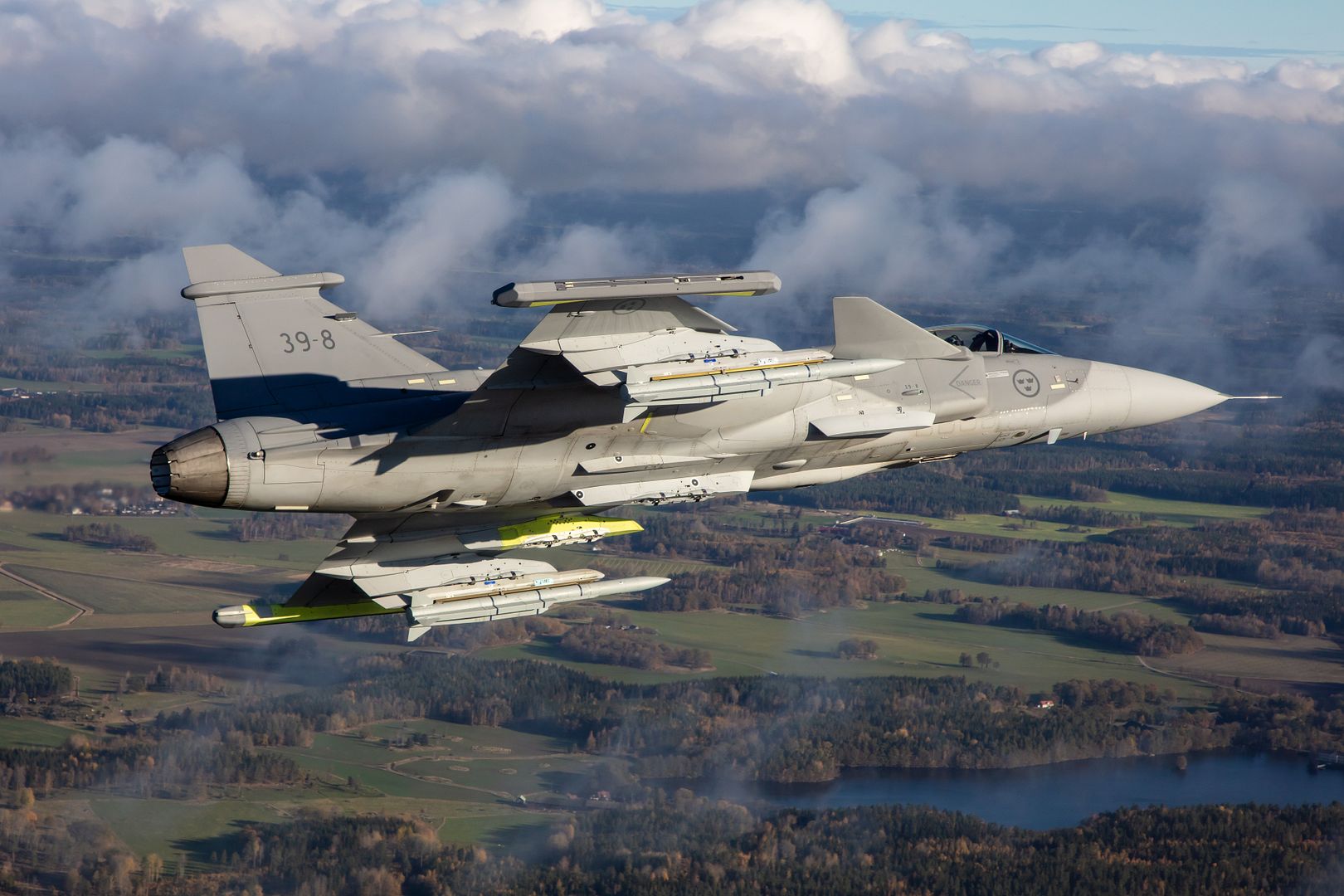
The Gripen E programme is progressing according to plan, with production on-going and customer deliveries starting this year. The very latest technologies are being incorporated to provide air forces with operational capabilities designed to defeat the threats of today, but also the future. Key milestones achieved during the past six months include flights with IRIS-T and METEOR, as well as the second Gripen E aircraft taking flight.
Five nations currently operate Gripen: Sweden, South Africa, Czech Republic, Hungary and Thailand. Sweden and Brazil have ordered Gripen E. Additionally, the UK Empire Test Pilots? School (ETPS) uses Gripen as platform for test pilot training.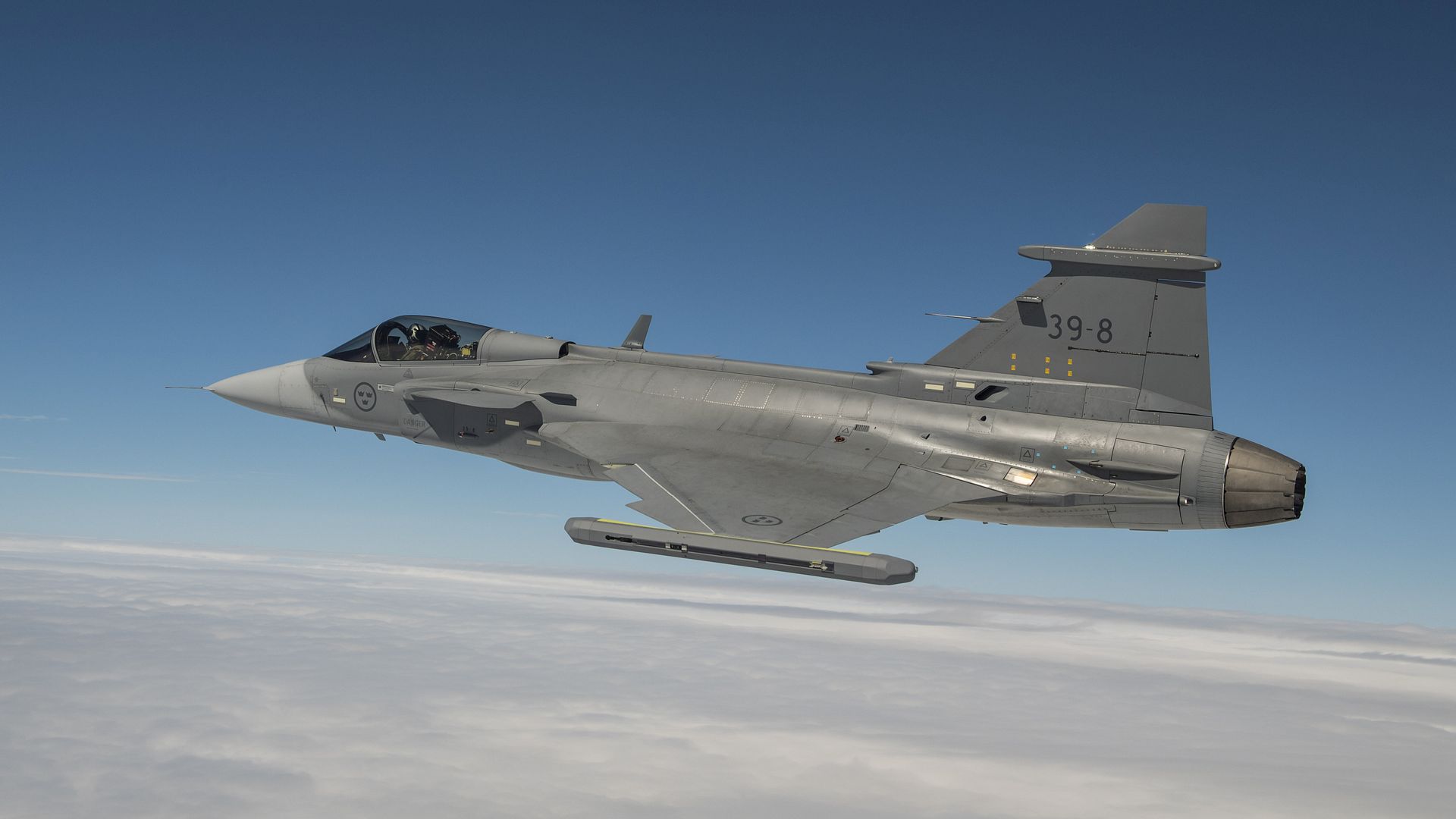
The European Aviation Safety Agency (EASA) has approved the A330-900 for ETOPS (Extended-range Twin engine aircraft Operations) ?beyond 180 minutes? diversion time. This significant achievement means that operators of the A330neo, which is powered by Rolls-Royce Trent 7000 engines, will benefit from the most efficient, reliable and direct long-range routings.
The approval, which includes ETOPS 180 min. capability in the aircraft?s basic specification, now also includes the option for ?ETOPS 285 min.? This extends the potential air diversion distance to around 2,000nm. The U.S. FAA?s respective ETOPS certification is expected soon.
A330neo operators which choose the ETOPS 285 min. option will be able to serve new direct ?non-limiting? routings. Meanwhile, operators flying on existing routes (currently flown with up to 180-minute diversion time) will be able to traverse a straighter, quicker and more fuel efficient path, and also have access to more ? and possibly better equipped ? en-route diversion airports if needed.
The granting of this ETOPS capability is a testimony to the aircraft?s design and systems maturity, which has been demonstrated to be as good as its predecessor ? the versatile and extremely reliable A330-200/A330-300 family, proven over many millions of flights.
The A330neo is a true new-generation aircraft family comprising the A330-900 and the smaller A330-800. The A330-900 in particular is the lowest seat-mile cost 300-seater which incorporates highly efficient Rolls-Royce Trent 7000 engines, a new 3D-optimised wing with greater span and lighter composite materials, plus new wingtip Sharklets. Together, these advances bring greater range (around 7,200 nm with a three-class cabin) and 25% lower fuel consumption compared with older generation aircraft of similar size.
The A330 is one of the most popular widebody families ever, having received over 1,700 orders to date from 120 customers. More than 1,400 A330s are flying with over 120 operators worldwide. The A330neo is the latest addition to the leading Airbus twin-engine widebody family, which alongside the A350 XWB, offer unmatched space and comfort combined with unprecedented efficiency levels and long-range capability.
In 2009, the Airbus A330-200/-300 became the first airliner family to gain an ETOPS ?Beyond 180min? certification, which was granted by EASA. Airbus twin-engine airliners have accumulated over 20 million ETOPS flight hours, most of which have been accumulated by the A330 Family.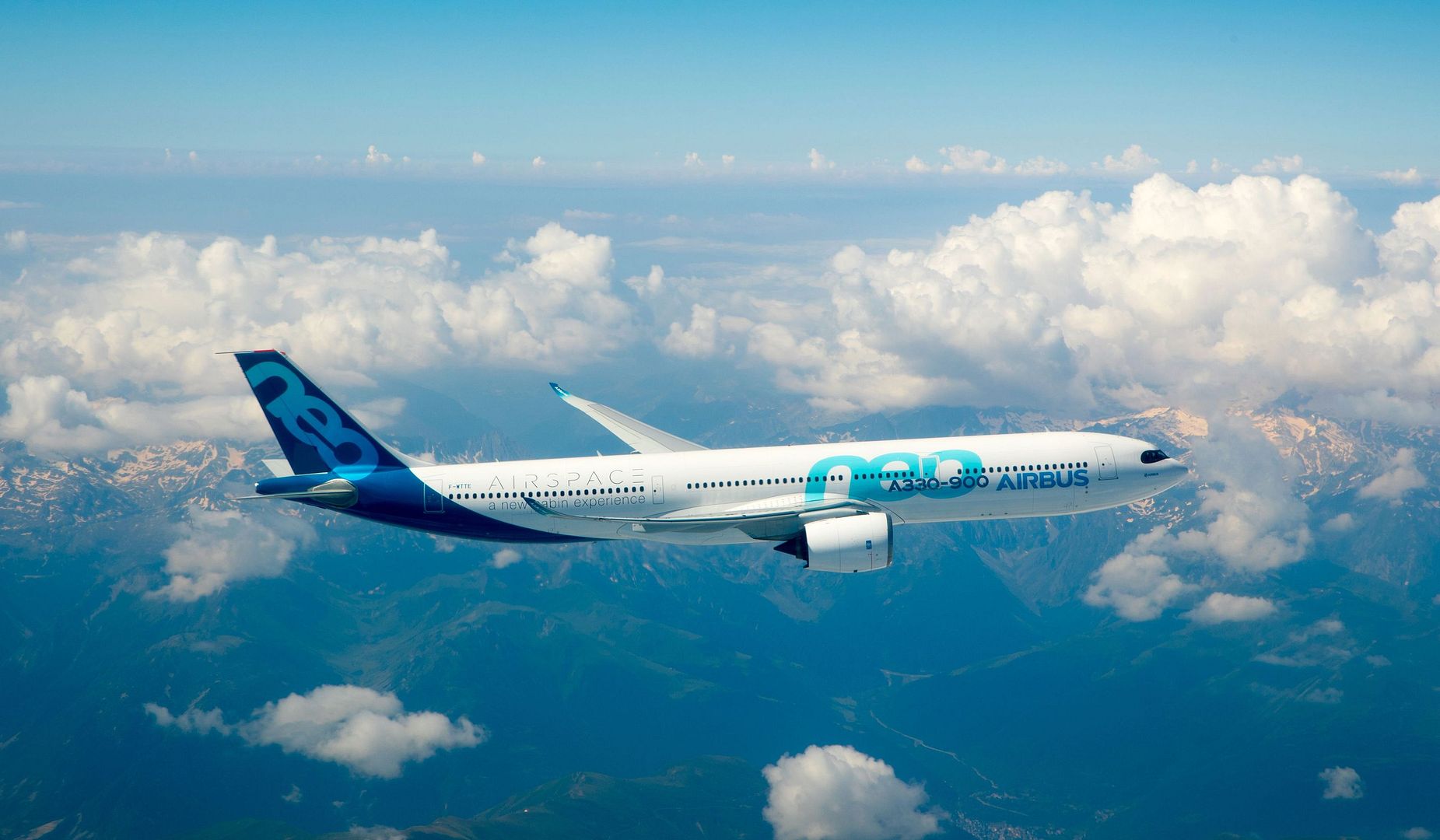
News Article / January 28, 2019
8 Wing Trenton, Ontario, welcomed the return of a CC-150 Polaris aircraft, crew, and support personnel from 437 Transport Squadron, who had been deployed on Operation Impact, during a ceremony at 8 Wing?s passenger terminal on January 28, 2019.
This marks the official end of 437 Transport Squadron?s air-to-air refueling contribution to Operation Impact in Iraq and Syria. The CC-150 Polaris aircraft supported the operation by continuously providing air-to-air refuelling for the Global Coalition against Daesh in Iraq and Syria since October 2014.
?I am incredibly proud of the efforts the 437 Transport Squadron members and their families positively contributed to Op Impact,? said Lieutenant-Colonel Diane Baldasaro, the commanding officer of 437 Transport Squadron. ?Our squadron motto is ?Omnia Passim? (Anything, Anywhere?), and for the nearly five years that we served in this mission, we certainly lived up to those words.?
The ceremony also included the presentation of General Service Medals ? Expeditionary to the civilian employees of L3 MAS, in recognition of their work supporting the CC-150 Polaris while it was deployed.
The CC-150 Polaris is a multi-purpose, twin-engine, long-range jet aircraft. It can be used for passenger, freight or medical transport and air-to-air refueling. The Polaris can reach a speed of up to 1,029 km/h carrying a load of up to 32,000 kilograms. It can carry up to 194 passengers, depending on the particular aircraft tail number and configuration.
As part of the Air Force Multi-Role Tanker Transport (MRTT) program, two CC-150 Polaris aircraft were converted to strategic air-to-air refuellers for Canada?s fleet of CF-188 Hornets. The Polaris MRTT is capable of transferring 36,000 kilograms of fuel to receiving aircraft over a journey of 4,630 kilometres. One Polaris tanker can ferry a flight of four Hornets non-stop across the Atlantic Ocean.
The CC-150 Polaris flew a total of 1,166 sorties, flew for more than 7,050 hours and delivered more than 65 million pounds [29.5 million kilograms] of fuel in support of Operation Impact.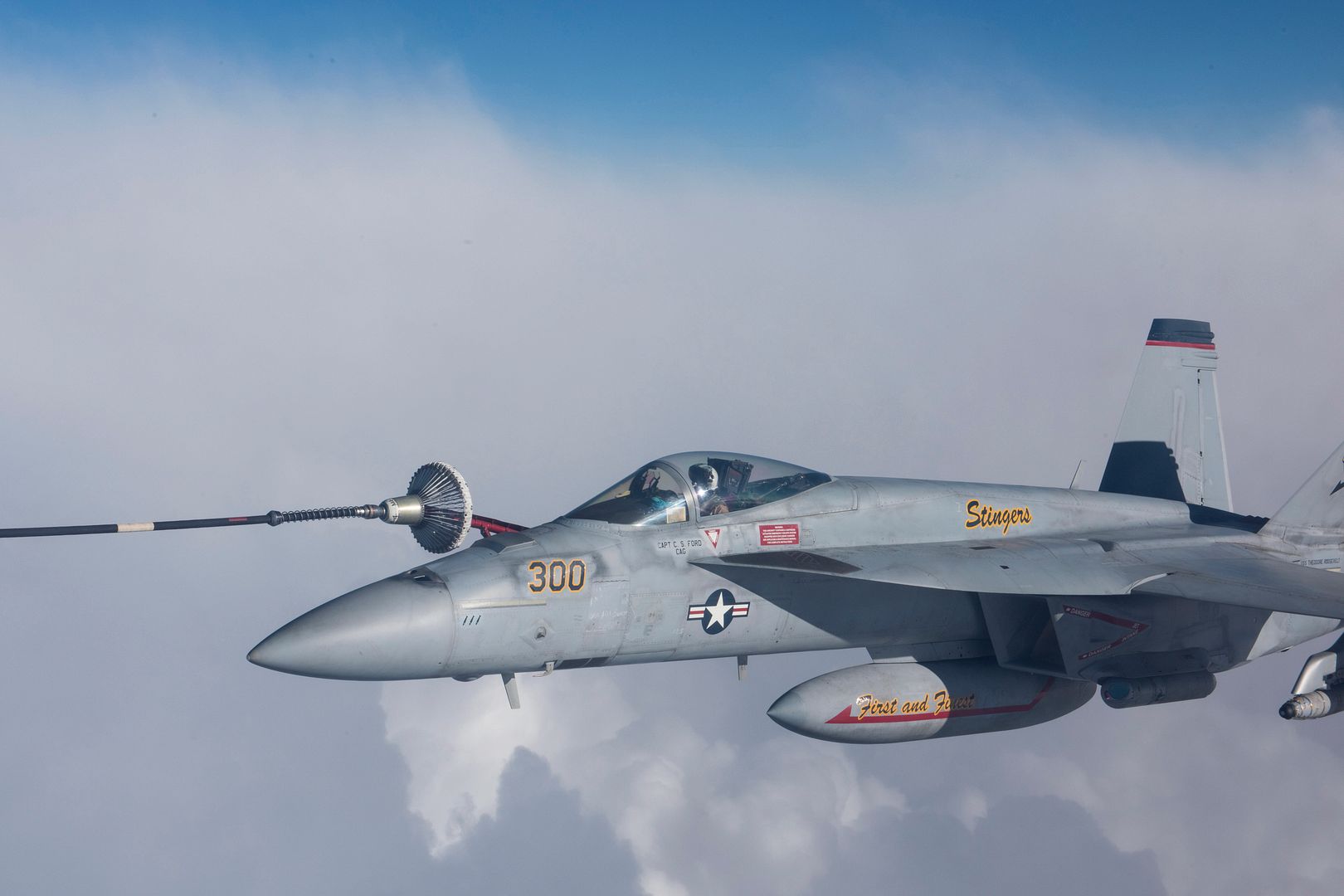
?We are extremely proud of the women and men of 437 Transport Squadron, L3 MAS, and all of the personnel at 8 Wing who supported Operation Impact in the Middle East over the last four years,? said Colonel Mark Goulden, 8 Wing commander. ?Their dedication and commitment enabled the Coalition Forces by providing an important air-to-air refueling capability, which contributed to support of the security forces on the ground.?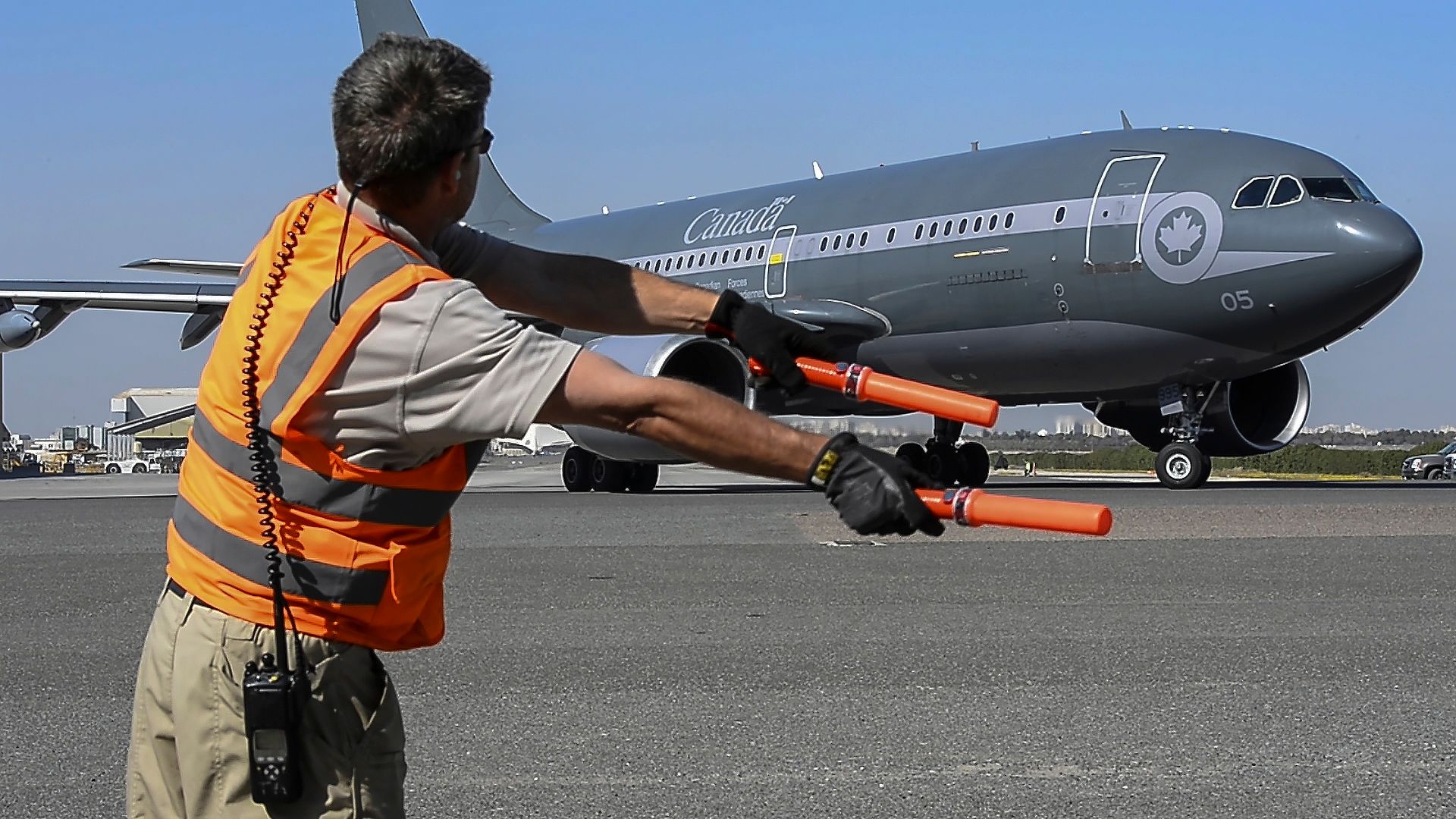
Operation Impact began as the Canadian Armed Forces support to the Global Coalition to degrade and ultimately defeat Daesh in Iraq and Syria. The coalition has been effective. The Canadian Armed Forces continue to work with partners in the region to set the conditions for stability and security.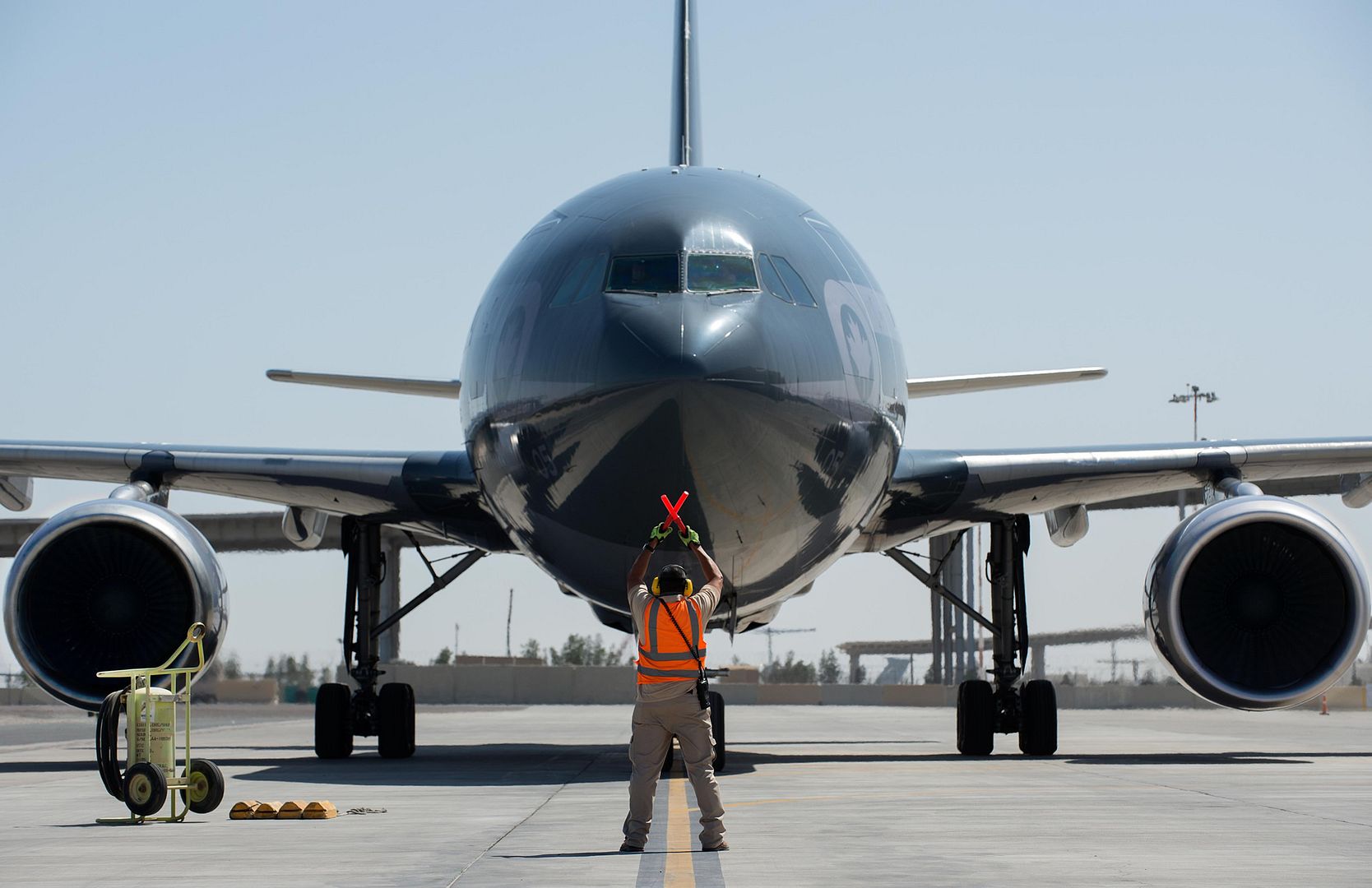
-
 Main AdminA U.S. Air Force F-16 Fighting Falcon takes off from Aviano Air Base, Italy, Jan. 28, 2019. The 31st Fighter Wing boasts a diverse combat mission set including the 555th and 510th Fighter Squadrons, 56th and 57th Rescue Squadrons and the 606th Air Control Squadron. (U.S. Air Force photo by Airman 1st Class Caleb House)
Main AdminA U.S. Air Force F-16 Fighting Falcon takes off from Aviano Air Base, Italy, Jan. 28, 2019. The 31st Fighter Wing boasts a diverse combat mission set including the 555th and 510th Fighter Squadrons, 56th and 57th Rescue Squadrons and the 606th Air Control Squadron. (U.S. Air Force photo by Airman 1st Class Caleb House)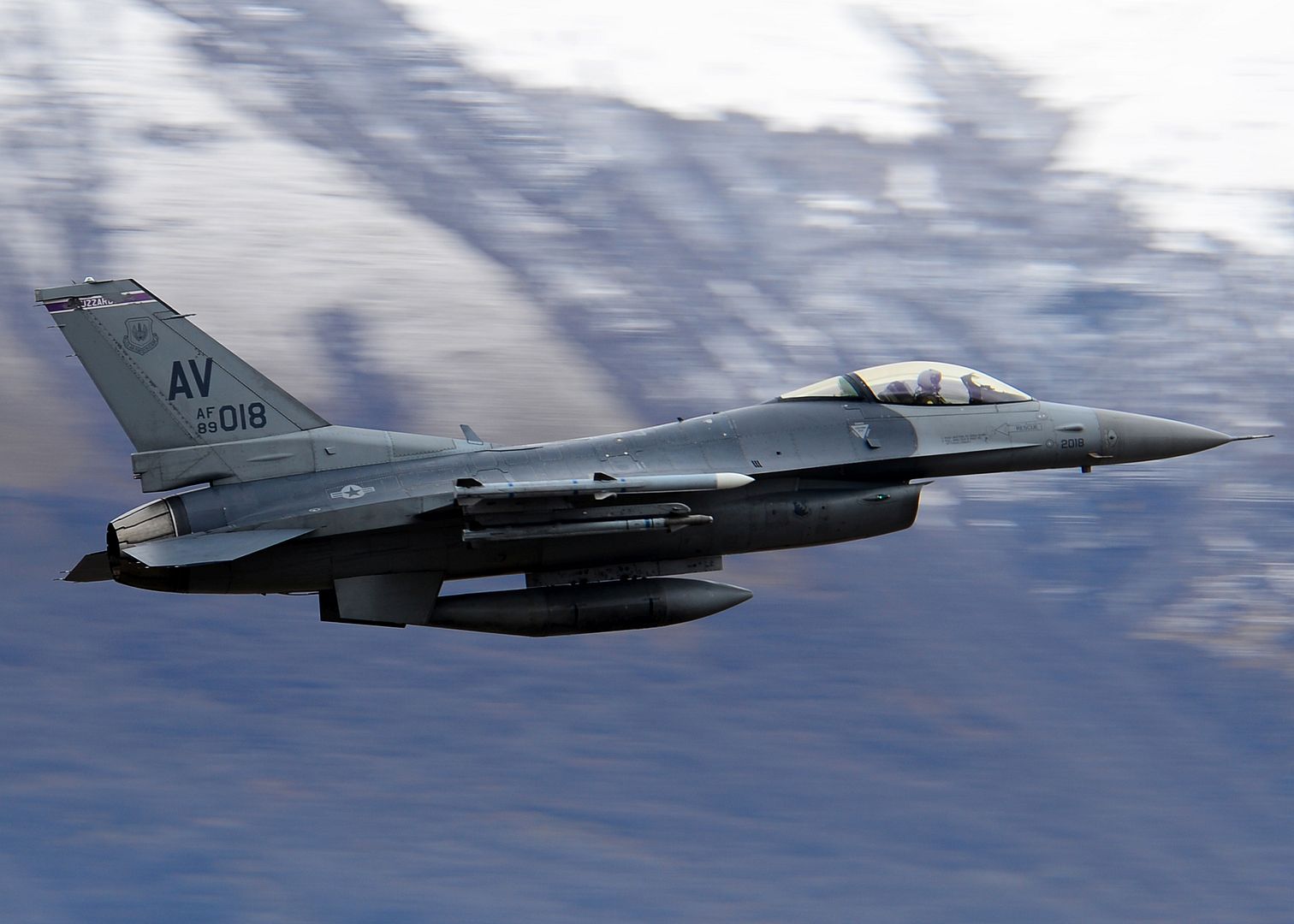
An F-16 Fighting Falcon, assigned to the 180th Fighter Wing, Ohio Air National Guard, sit on the flightline of Patrick Air Force Base, Florida, before morning training sorties Jan. 29, 2019. The 180FW deployed more than 130 Airmen and 10 F-16s to Patrick, Jan. 25 through Feb. 9, 2019, in an effort to enhance flying operations and readiness capabilities that can often be hindered by harsh winter weather at home-station in Northwest Ohio. (Air National Guard photo by Senior Master Sgt. Beth Holliker).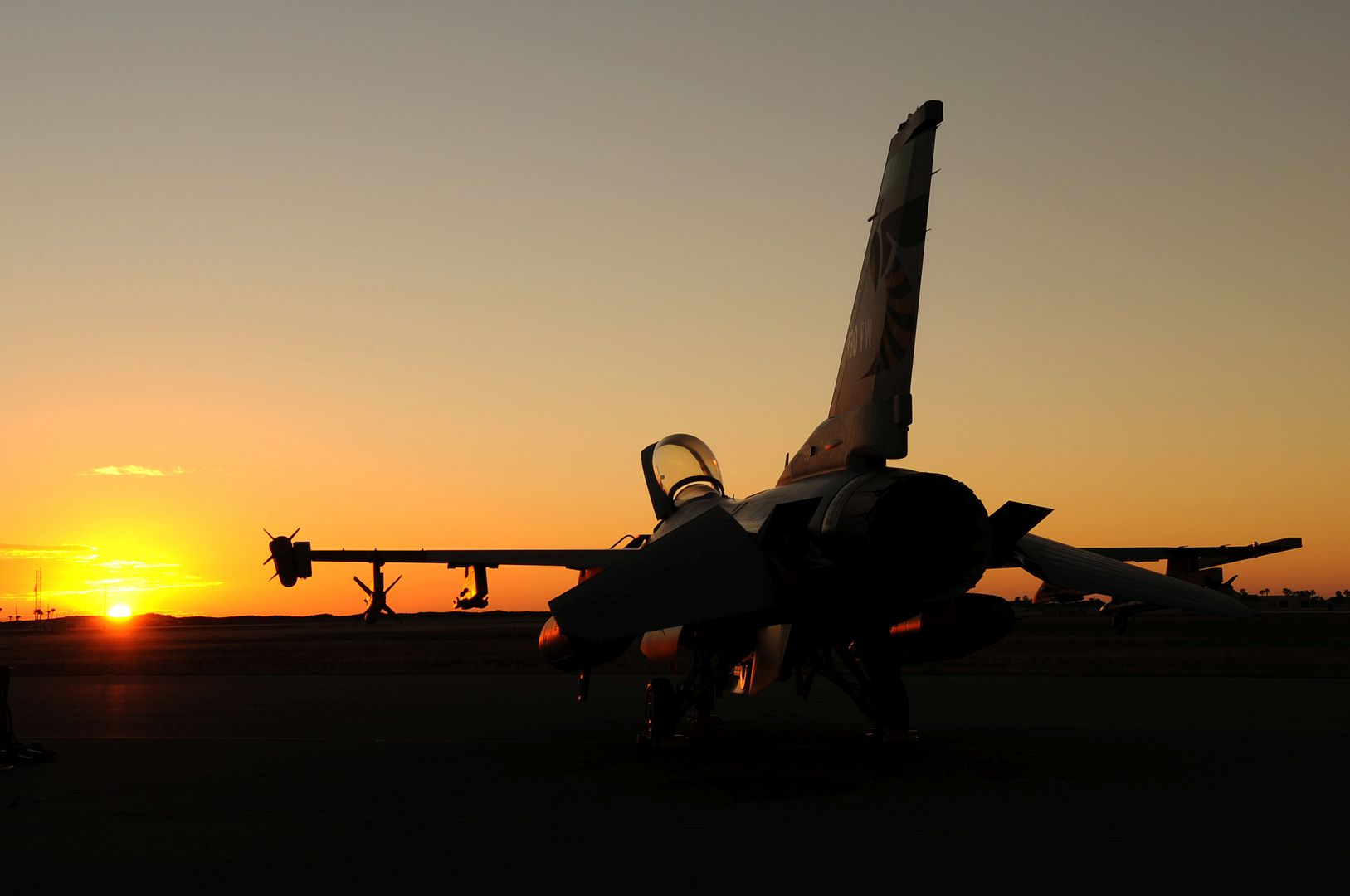
U.S. 5TH FLEET AREA OF OPERATIONS (Jan. 27, 2019) An AV-8B Harrier takes off from the flight deck of the Wasp-class amphibious assault ship USS Kearsarge (LHD 3). Kearsarge is the flagship for the Kearsarge Amphibious Ready Group and, with the embarked 22nd Marine Expeditionary Unit, is deployed to the U.S. 5th Fleet area of operations in support of naval operations to ensure maritime stability and security in the Central Region, connecting the Mediterranean and the Pacific through the western Indian Ocean and three strategic choke points. (U.S. Navy photo by Mass Communication Specialist 3rd Class Kaitlyn E. Eads/Released)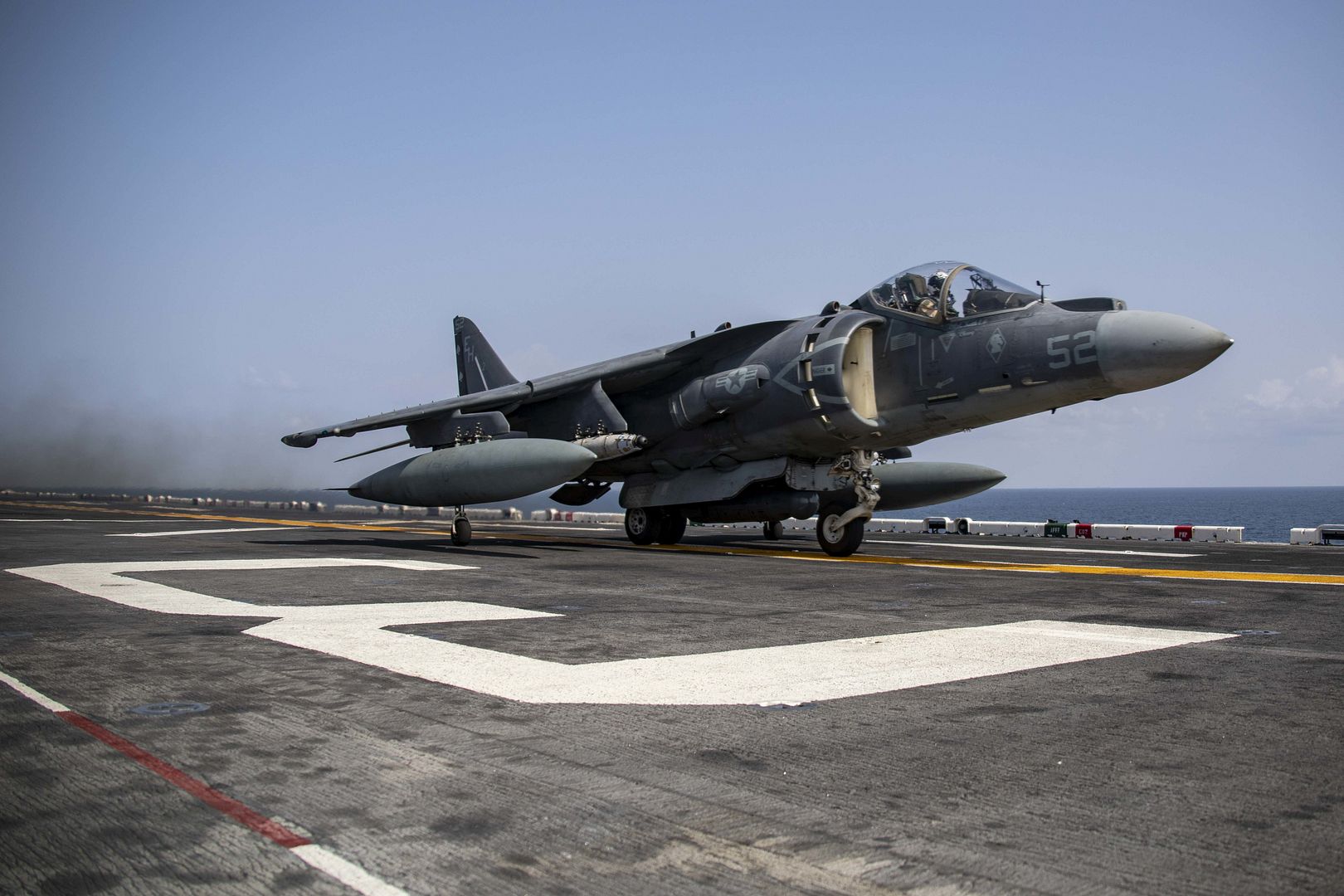
U.S. 5TH FLEET AREA OF OPERATIONS (Jan. 27, 2019) Sailors approach an AV-8B Harrier on the flight deck of the Wasp-class amphibious assault ship USS Kearsarge (LHD 3) to remove chocks and chains prior to flight operations. Kearsarge is the flagship for the Kearsarge Amphibious Ready Group and, with the embarked 22nd Marine Expeditionary Unit, is deployed to the U.S. 5th Fleet area of operations in support of naval operations to ensure maritime stability and security in the Central Region, connecting the Mediterranean and the Pacific through the western Indian Ocean and three strategic choke points. (U.S. Navy photo by Mass Communication Specialist 2nd Class Ryre Arciaga/Released)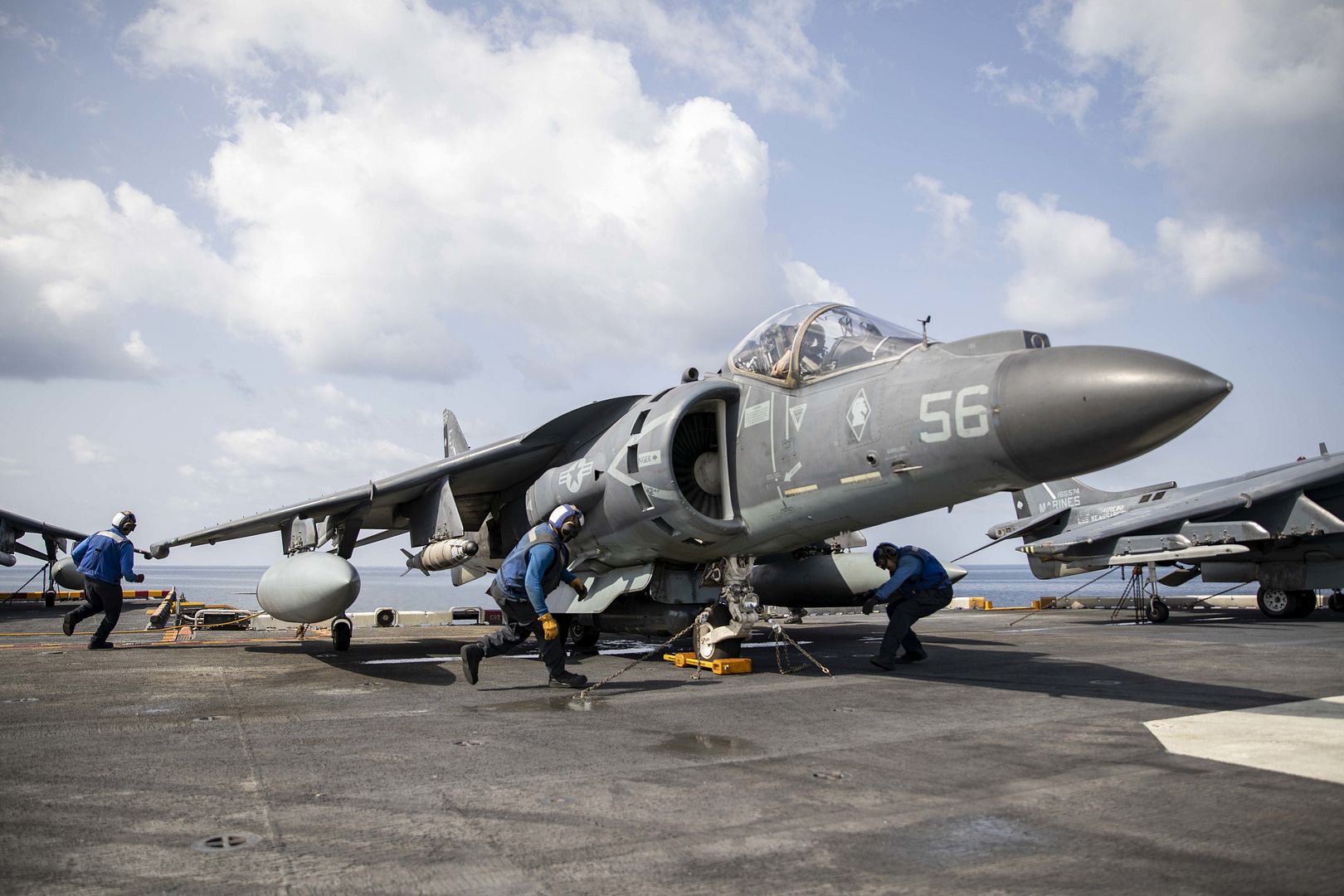
U.S. 5TH FLEET AREA OF OPERATIONS (Jan. 27, 2019) Lt. Col. Eric Keith, assigned to Marine Medium Tiltrotor Squadron 264, conducts pre-flight checks in an AV-8B Harrier on the flight deck of the Wasp-class amphibious assault ship USS Kearsarge (LHD 3). Kearsarge is the flagship for the Kearsarge Amphibious Ready Group and, with the embarked 22nd Marine Expeditionary Unit, is deployed to the U.S. 5th Fleet area of operations in support of naval operations to ensure maritime stability and security in the Central Region, connecting the Mediterranean and the Pacific through the western Indian Ocean and three strategic choke points. (U.S. Navy photo by Mass Communication Specialist 2nd Class Ryre Arciaga/Released)
Aviation Boatswain?s Mate (Equipment) 3rd Class Layton Prado, from Dallas, waits for a signal after using a holdback bar to couple an EA-18G Growler, assigned to Electronic Attack Squadron (VAQ) 133, to a steam-powered catapult on the flight deck of the aircraft carrier USS John C. Stennis (CVN 74) in the Indian Ocean, Jan. 28, 2019. The John C. Stennis is deployed to the U.S. 7th Fleet area of operations in support of security and stability in the Indo-Pacific region. (U.S. Navy photo by Mass Communication Specialist 3rd Class Grant G. Grady)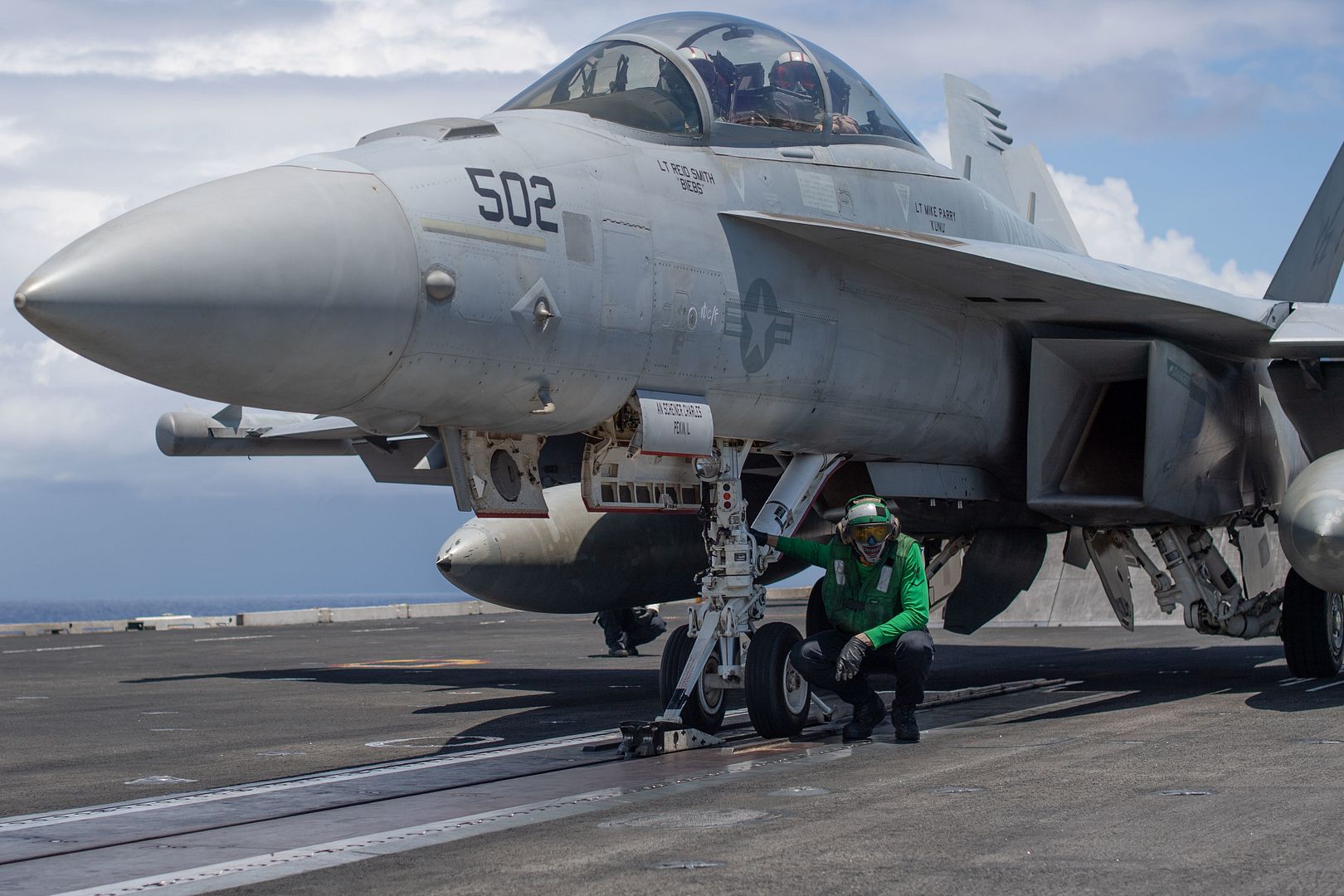
An F/A-18E Super Hornet, assigned to Strike Fighter Squadron (VFA) 151, launches from the flight deck of the aircraft carrier USS John C. Stennis (CVN 74) in the Indian Ocean, Jan. 24, 2019. The John C. Stennis is deployed to the U.S. 7th Fleet area of operations in support of security and stability in the Indo-Pacific region. (U.S. Navy photo by Mass Communication Specialist 3rd Class Skyler Okerman)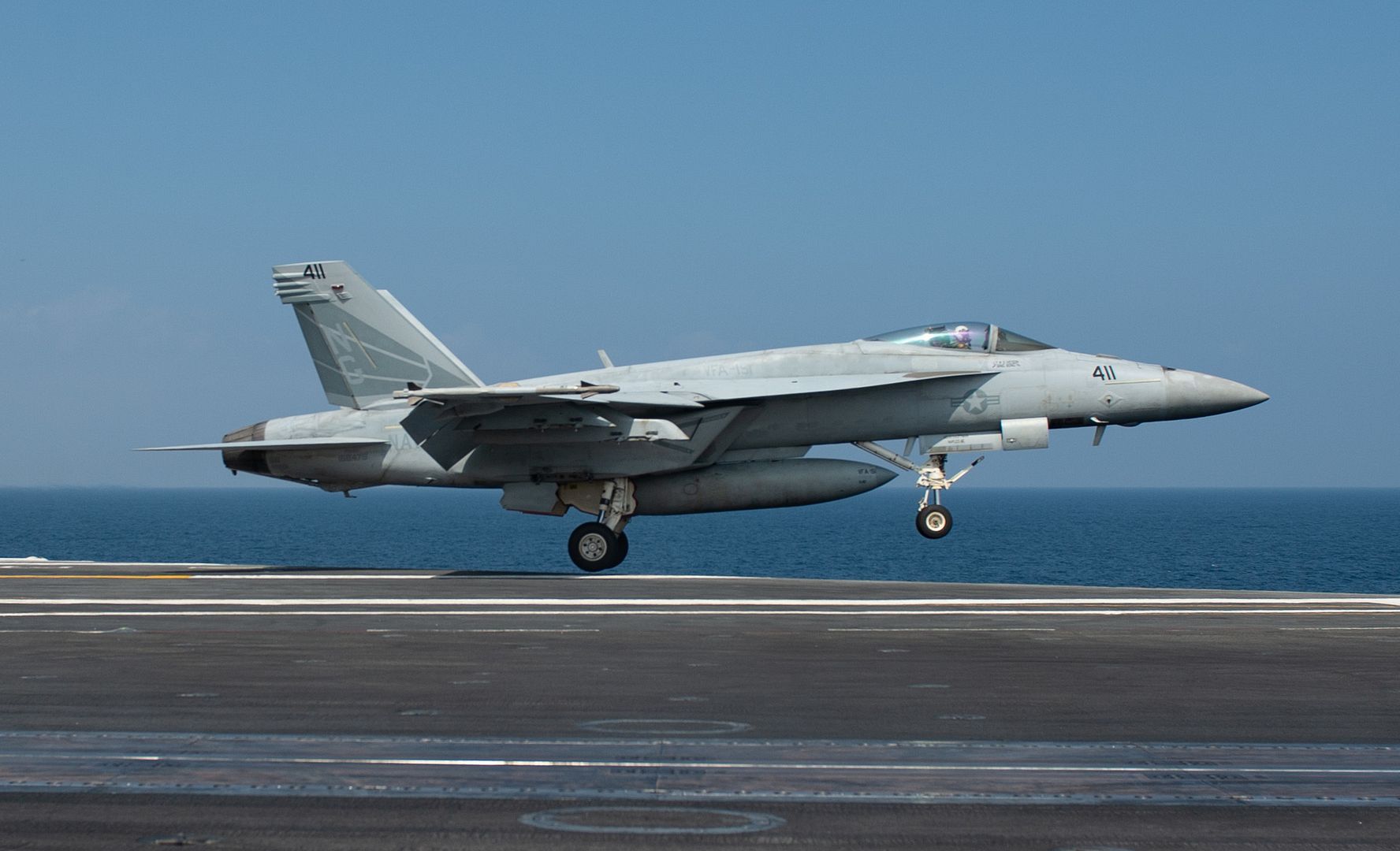
January 29, 2019 Montr?al Business Aircraft, Press Release
Bombardier announced today that Learjet 70 and Learjet 75 aircraft operators now benefit from lengthened intervals between recurring major powerplant inspections, which have been extended from 3,000 to 3,500 engine hours. This interval extension directly benefits the bottom lines of operators by reducing the number of repeat inspections over the lifecycle of the engine, thereby decreasing operating costs over the lifecycle of the aircraft. This announcement comes as Bombardier?s fleet of trailblazing Learjet aircraft has surpassed the 25 million flight-hour mark, adding yet another achievement to an impressive string of Learjet milestones and firsts. The first Learjet business aircraft entered service in 1964, creating the experience and defining the industry of private flight.
?This is a significant milestone for our pace-setting Learjet aircraft family and for the industry. The Learjet platform is designed to deliver immediate returns as a business productivity tool. Reliability and longevity are two of the reasons customers among Fortune 500 companies continue to choose Learjet as the most trusted light jet platform,? said Peter Likoray, Senior Vice President, Worldwide Sales and Marketing, Bombardier Business Aircraft.
As the best-equipped and best-performing aircraft within the light category, the Learjet 70 and the Learjet 75 aircraft bring the features of a much larger jet to a light aircraft platform. Both aircraft are certified to Part 25 airworthiness standards, the industry?s highest safety standards, applicable to transport category aircraft and commercial airliners.
Bombardier is continuing to invest to support its in-service fleet and the Learjet family. Bombardier recently announced a comprehensive Garmin G5000 avionics upgrade, which will allow customers to optimize their routes and will pave the way for future technological enhancements. The upgrade will be offered as forward and retrofit for in-service Learjet aircraft.
Since acquiring the Learjet Corporation in 1990, Bombardier has introduced an impressive eight new models, including the best-selling Learjet 75 aircraft, which entered service in 2013.
Red Flag, the largest and most complex air war-fighting exercise of the year, is underway at Nellis Air Force Base in the USA.
6 Squadron, based at RAF Lossiemouth, are among the RAF units taking part in the three-week exercise.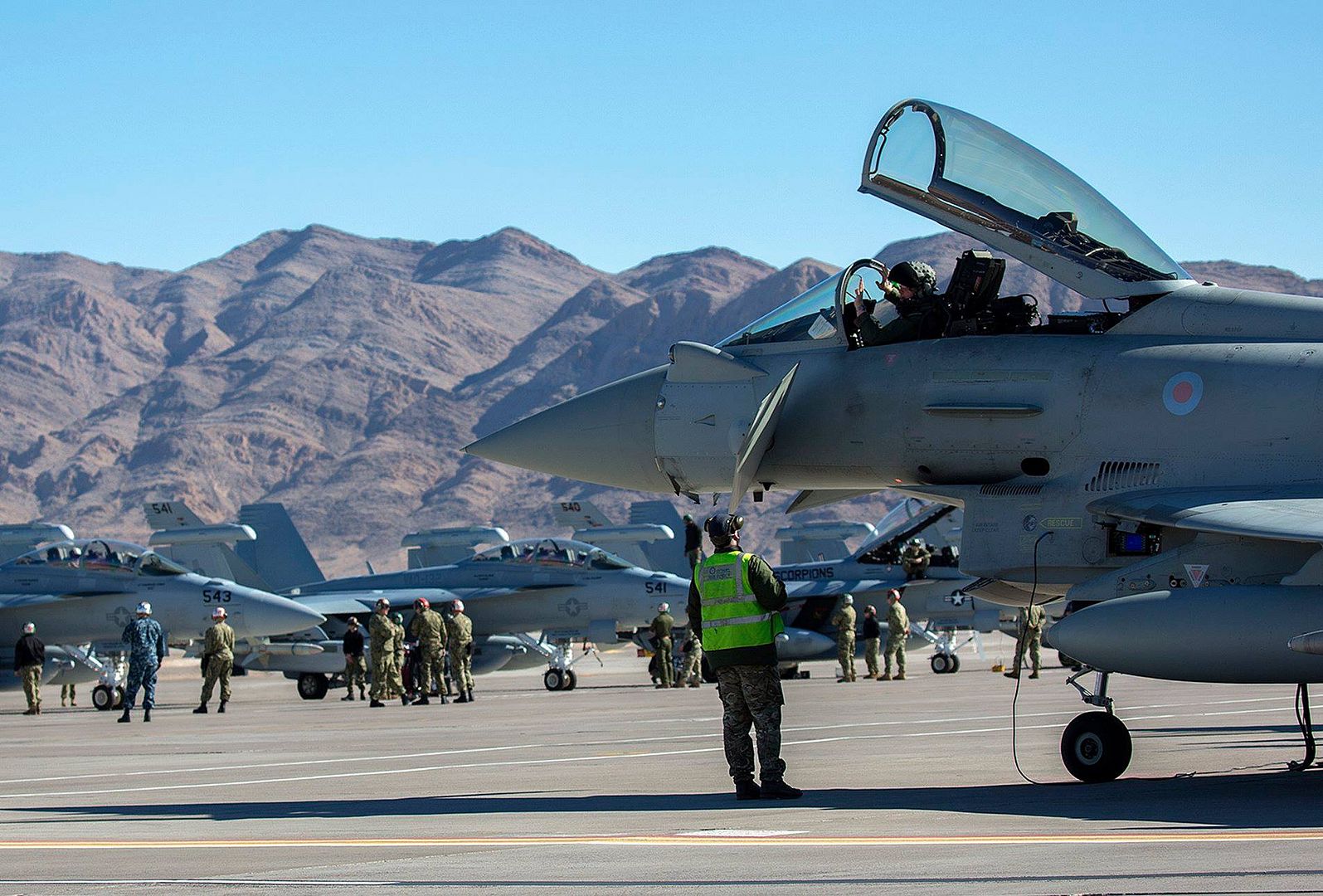
-
 Main AdminF-16 Fighting Falcons, assigned to the Ohio Air National Guard?s 180th Fighter Wing, sit on the flightline at Patrick Air Force Base, Florida, before morning training sorties Jan. 30, 2019. During the cold winter months in Ohio, the 180FW is able to maintain its mission ready capabilities by traveling to locations such as Patrick AFB, taking advantage of nicer weather to develop and enhance interoperability, force integration and understanding of our sister service units. (Air National Guard photo's by Senior Airman Hope Geiger)
Main AdminF-16 Fighting Falcons, assigned to the Ohio Air National Guard?s 180th Fighter Wing, sit on the flightline at Patrick Air Force Base, Florida, before morning training sorties Jan. 30, 2019. During the cold winter months in Ohio, the 180FW is able to maintain its mission ready capabilities by traveling to locations such as Patrick AFB, taking advantage of nicer weather to develop and enhance interoperability, force integration and understanding of our sister service units. (Air National Guard photo's by Senior Airman Hope Geiger)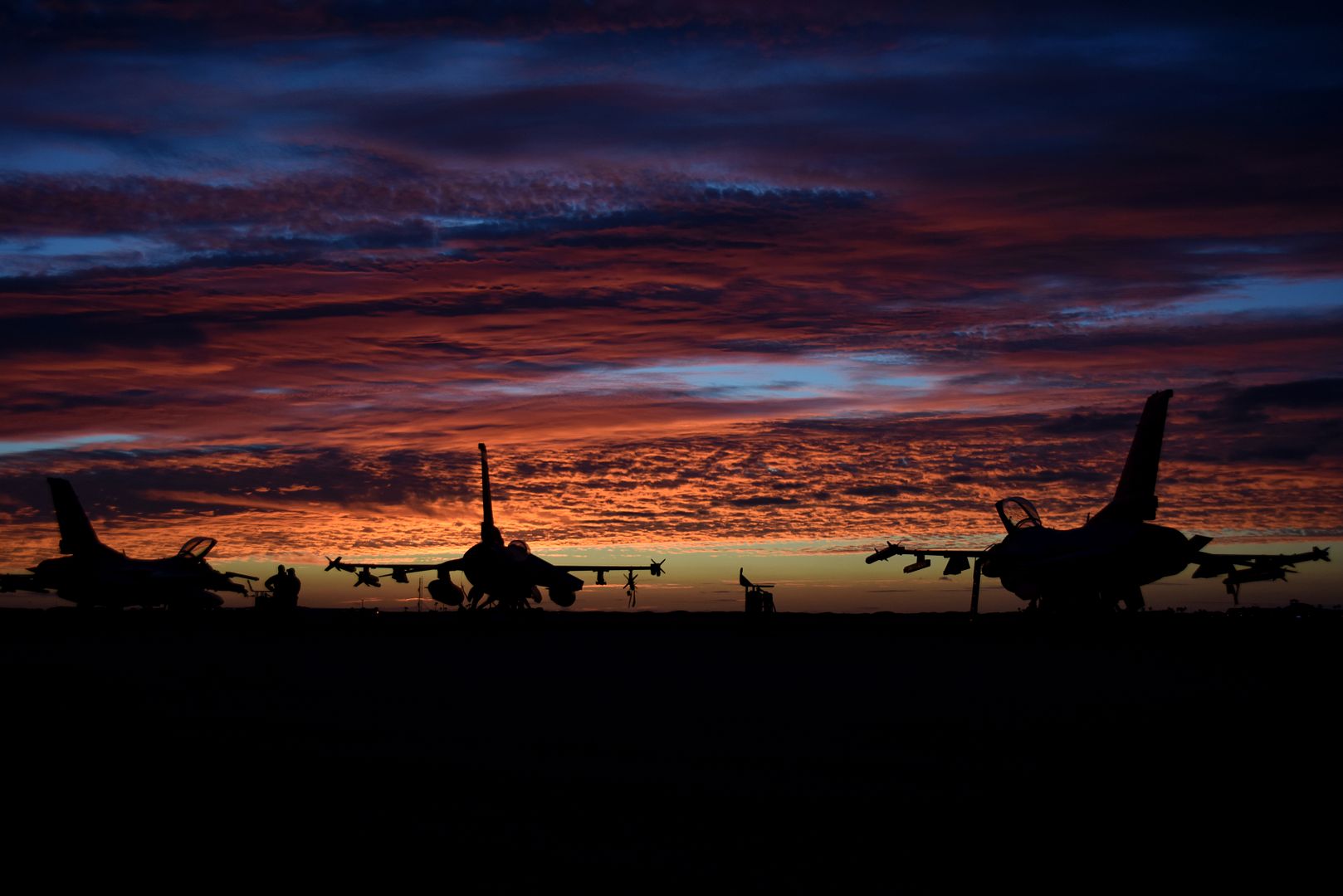
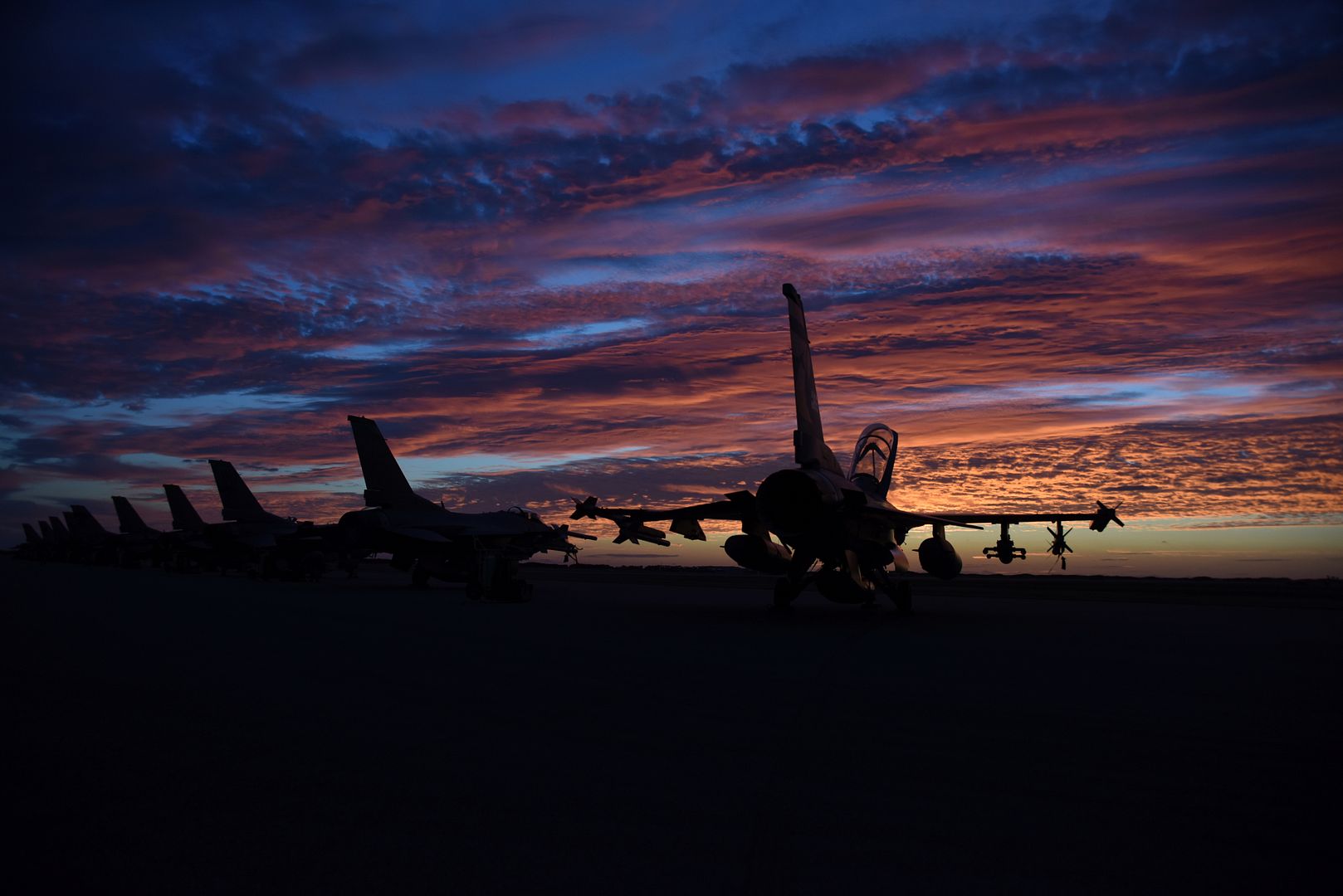
F-16 Fighting Falcon's, assigned to the 180th Fighter Wing, Ohio Air National Guard, sit on the flightline of Patrick Air Force Base, Florida, before morning training sorties Jan. 30, 2019. The 180FW deployed more than 130 Airmen and 10 F-16s to Patrick, Jan. 25 through Feb. 9, 2019, in an effort to enhance flying operations and readiness capabilities that can often be hindered by harsh winter weather at home-station in Northwest Ohio. (Air National Guard photo's by Senior Master Sgt. Beth Holliker).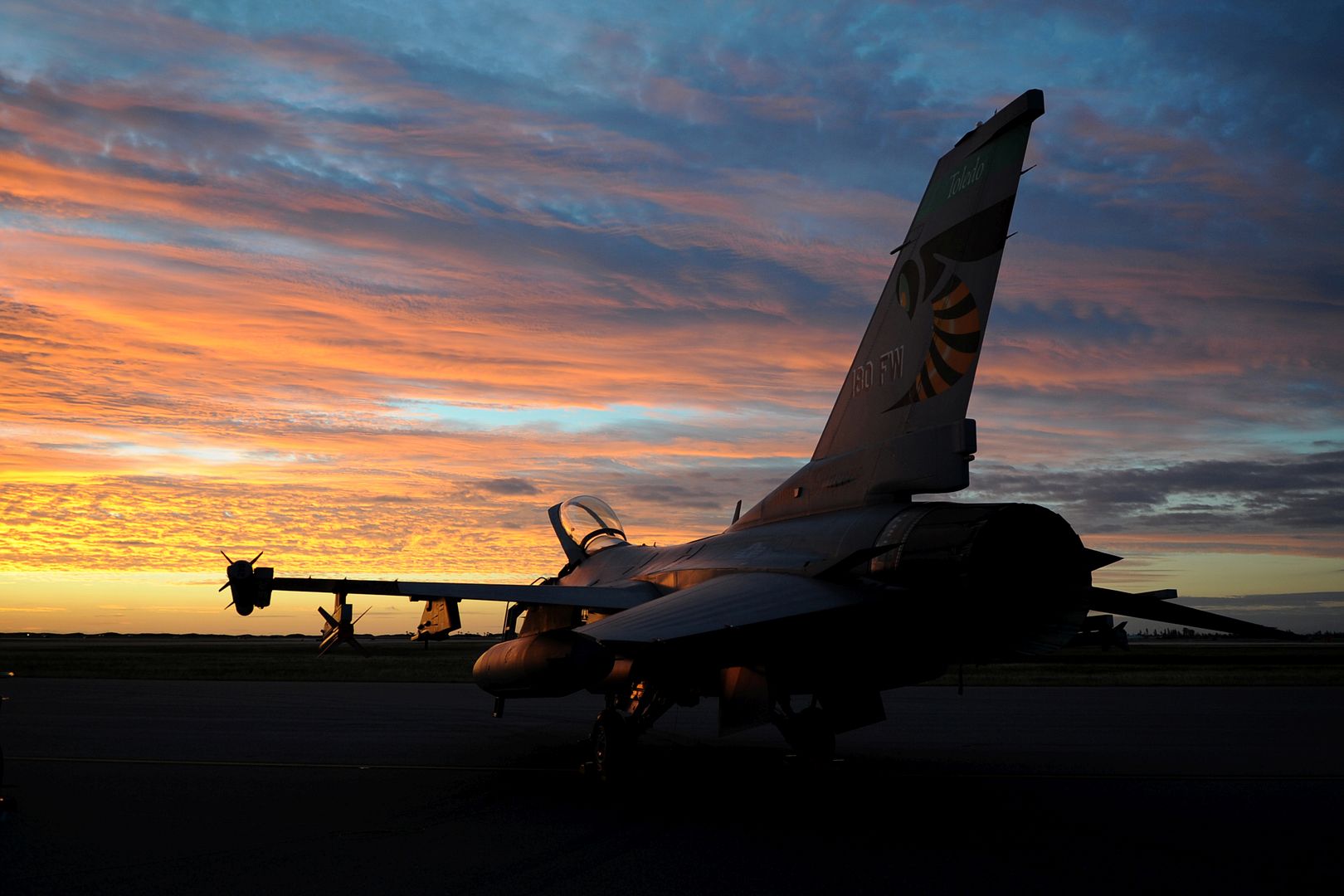
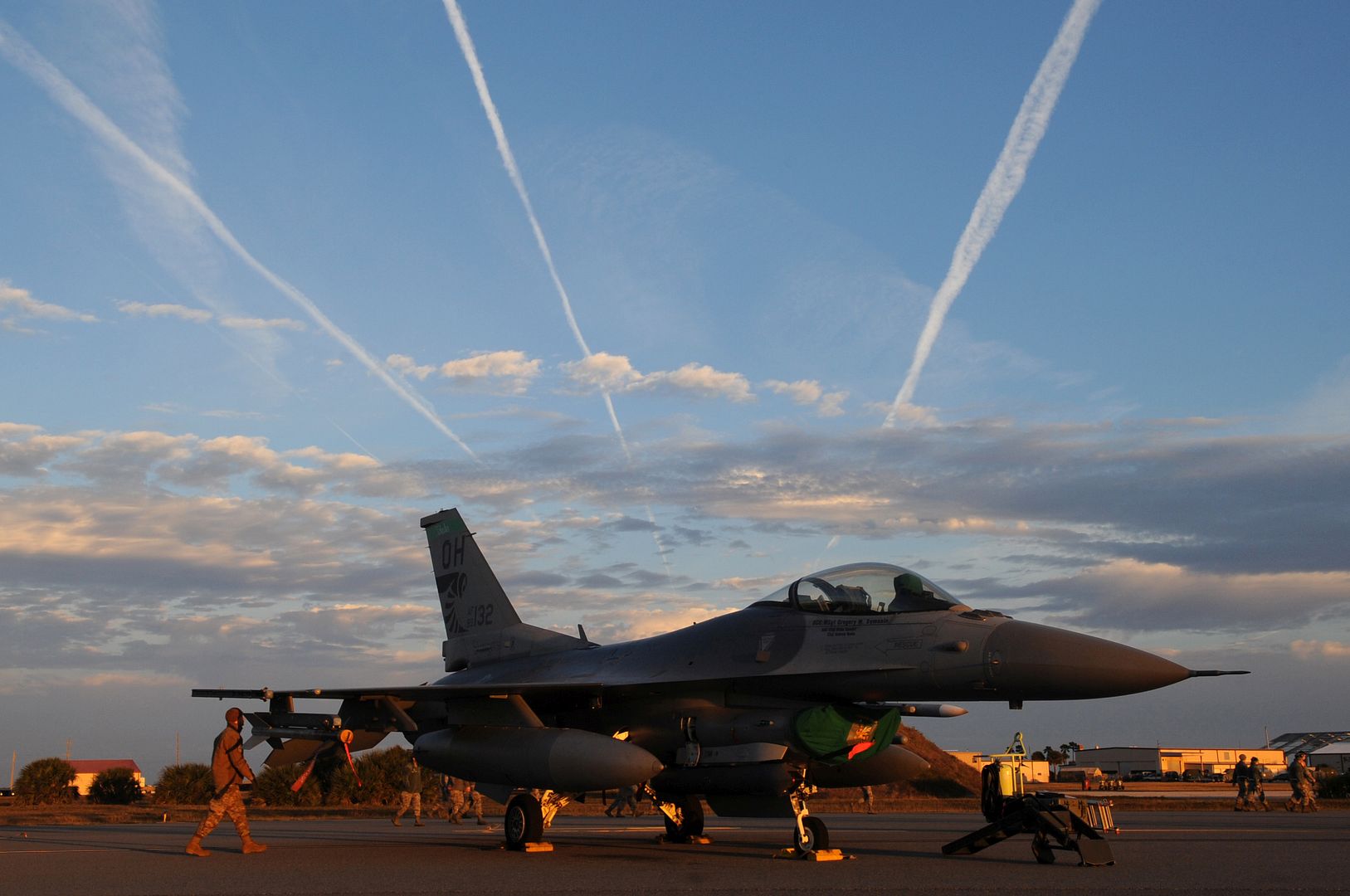
U.S. Marine Corps AV-8B Harriers conduct an aerial refuel during exercise Bayou Thunder off the coast of Louisiana, Jan. 29, 2019. The purpose of the exercise is to enhance Marine attack Squadron (VMA) 231's air-to-air and air-to-ground capabilities while also strengthening service interoperability with joint services. The aircraft are assigned to VMA-231, Marine Aircraft Group 14, 2nd Marine Aircraft Wing. (U.S. Marine Corps photo's by Cpl. Cody Rowe)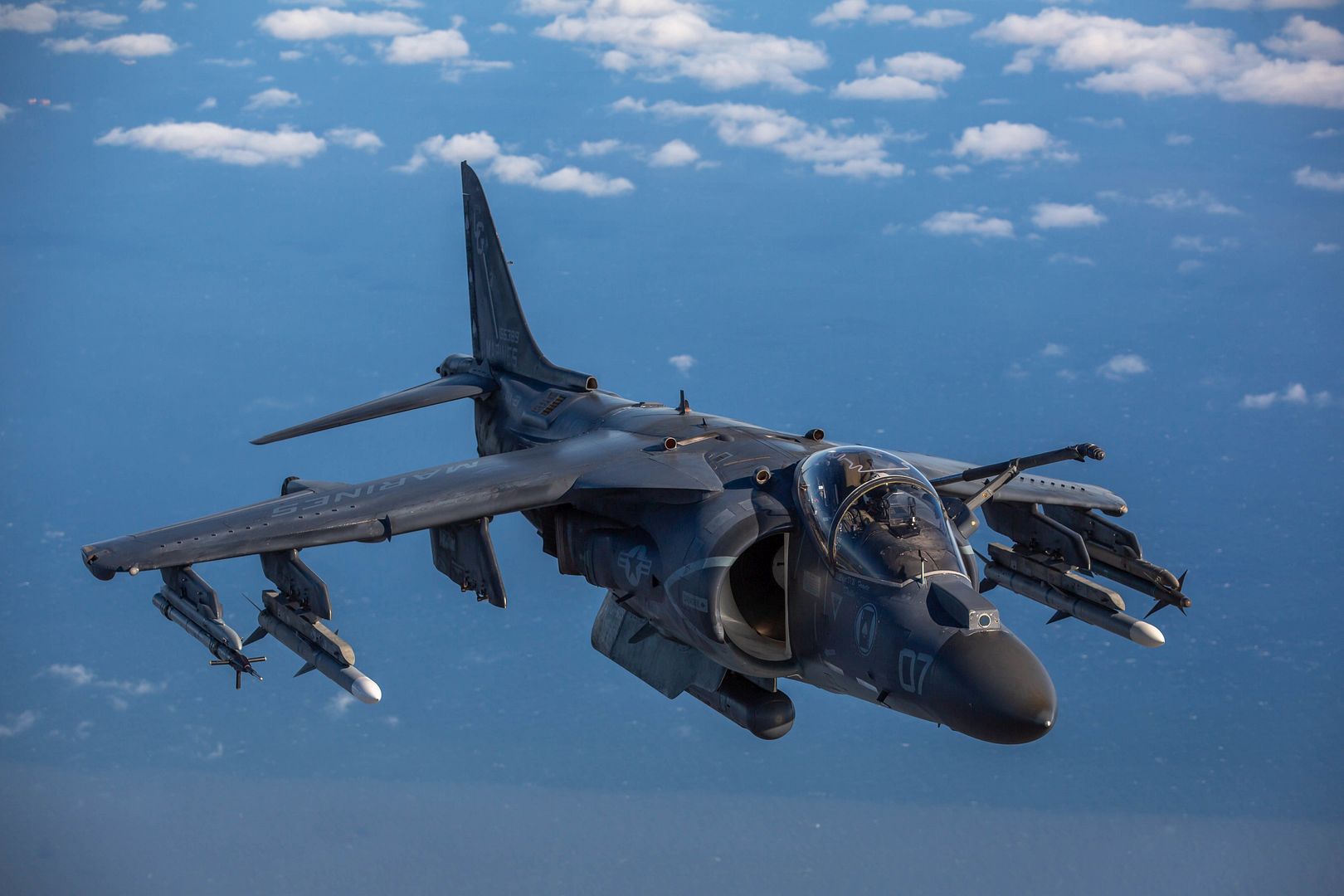
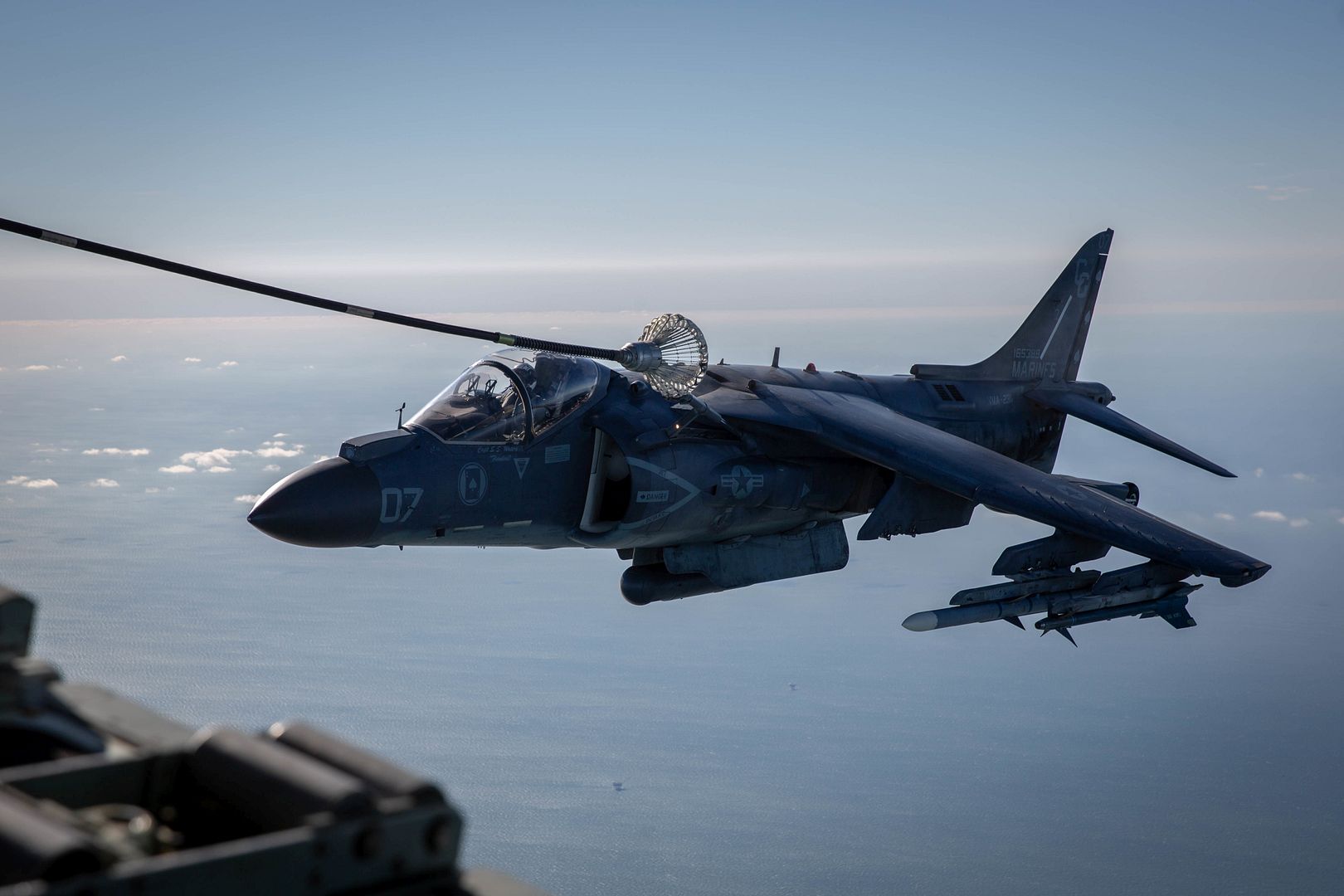
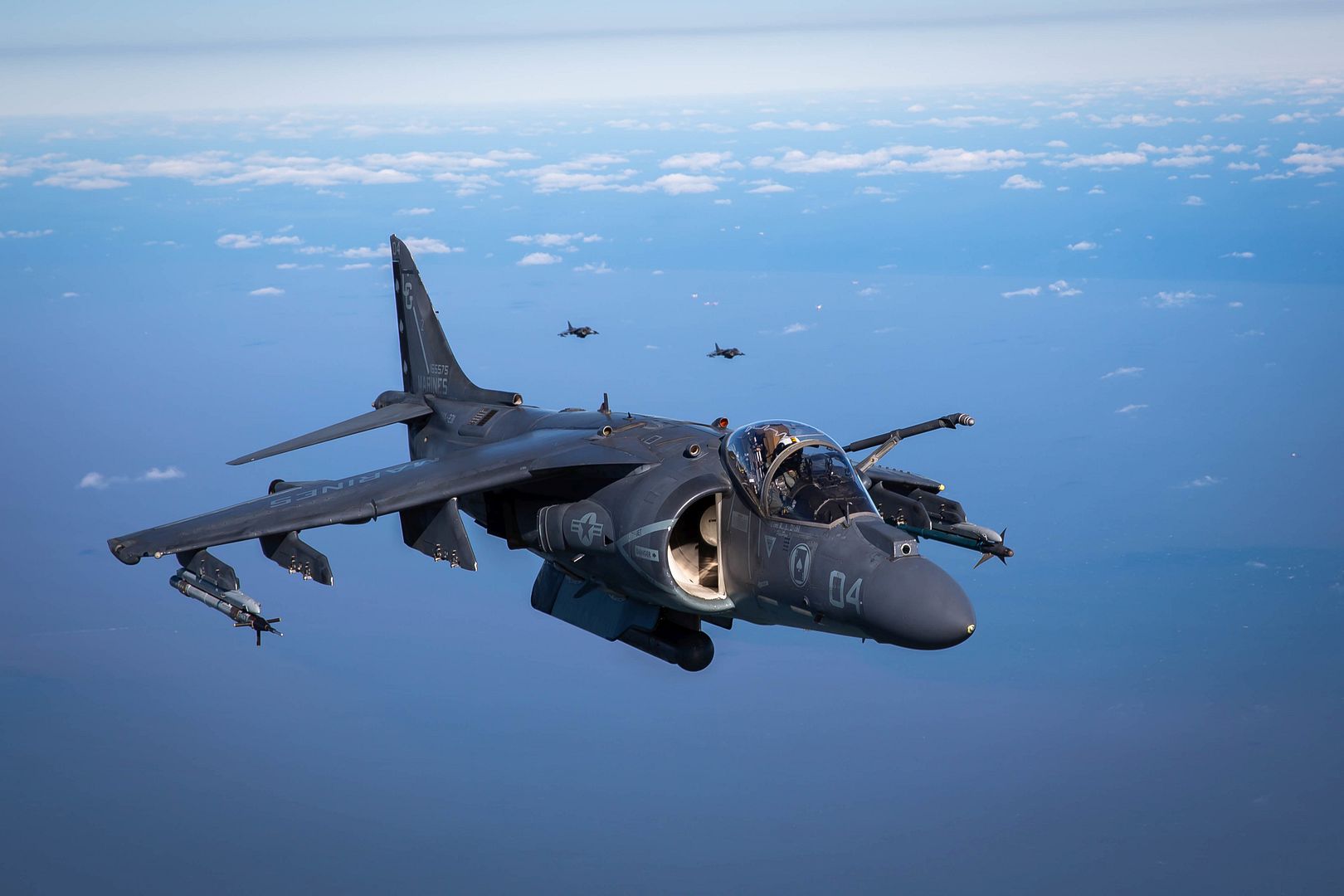
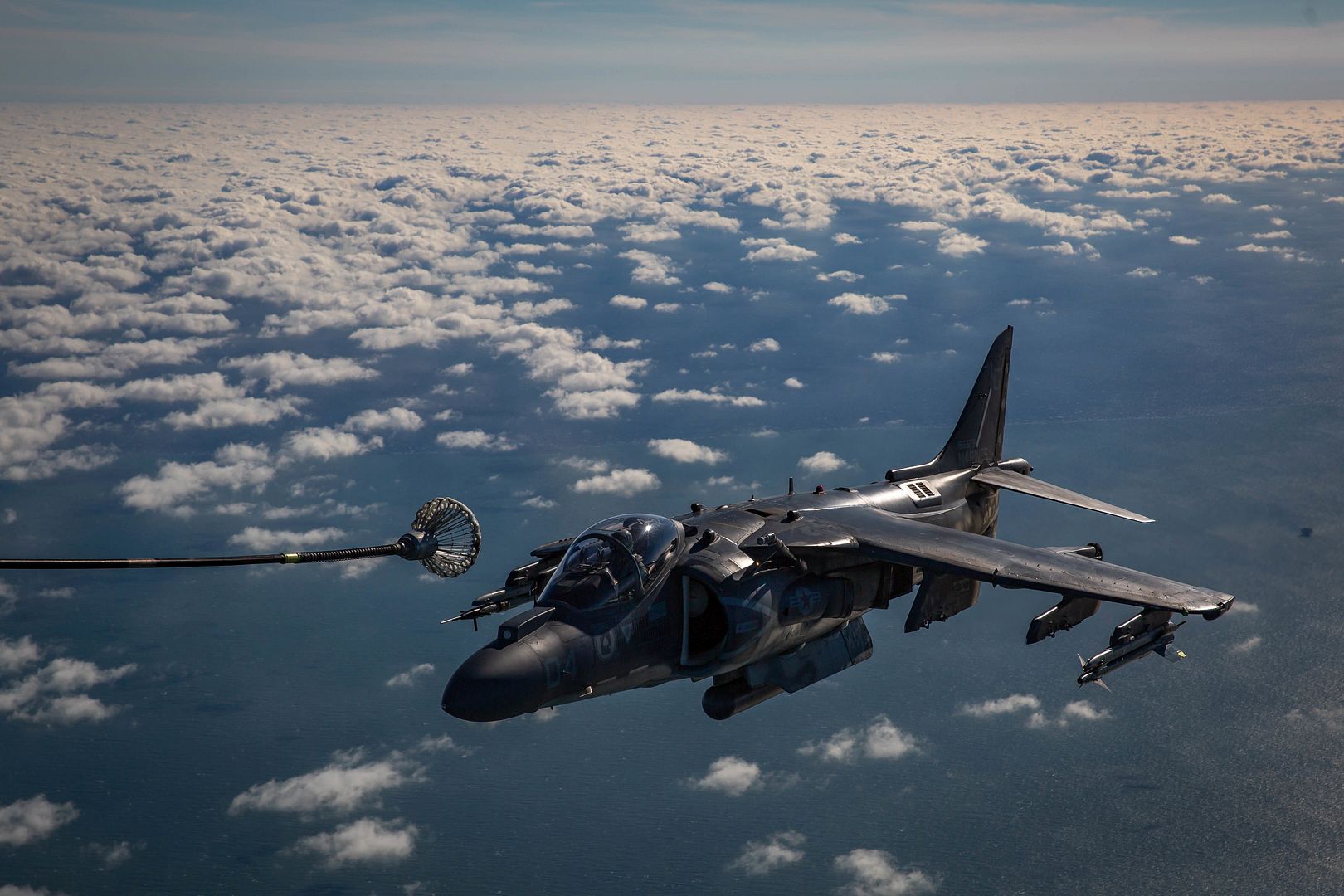
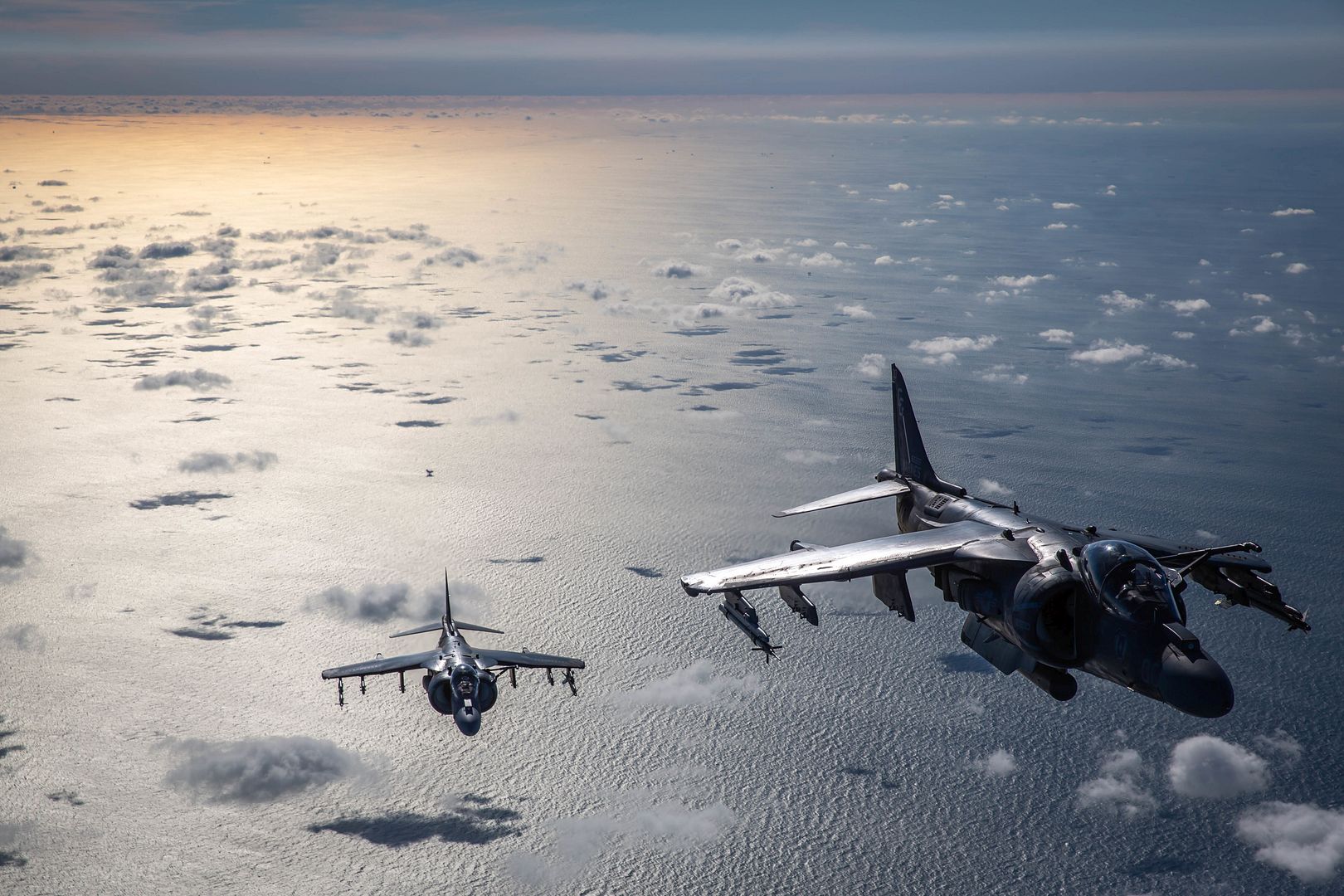
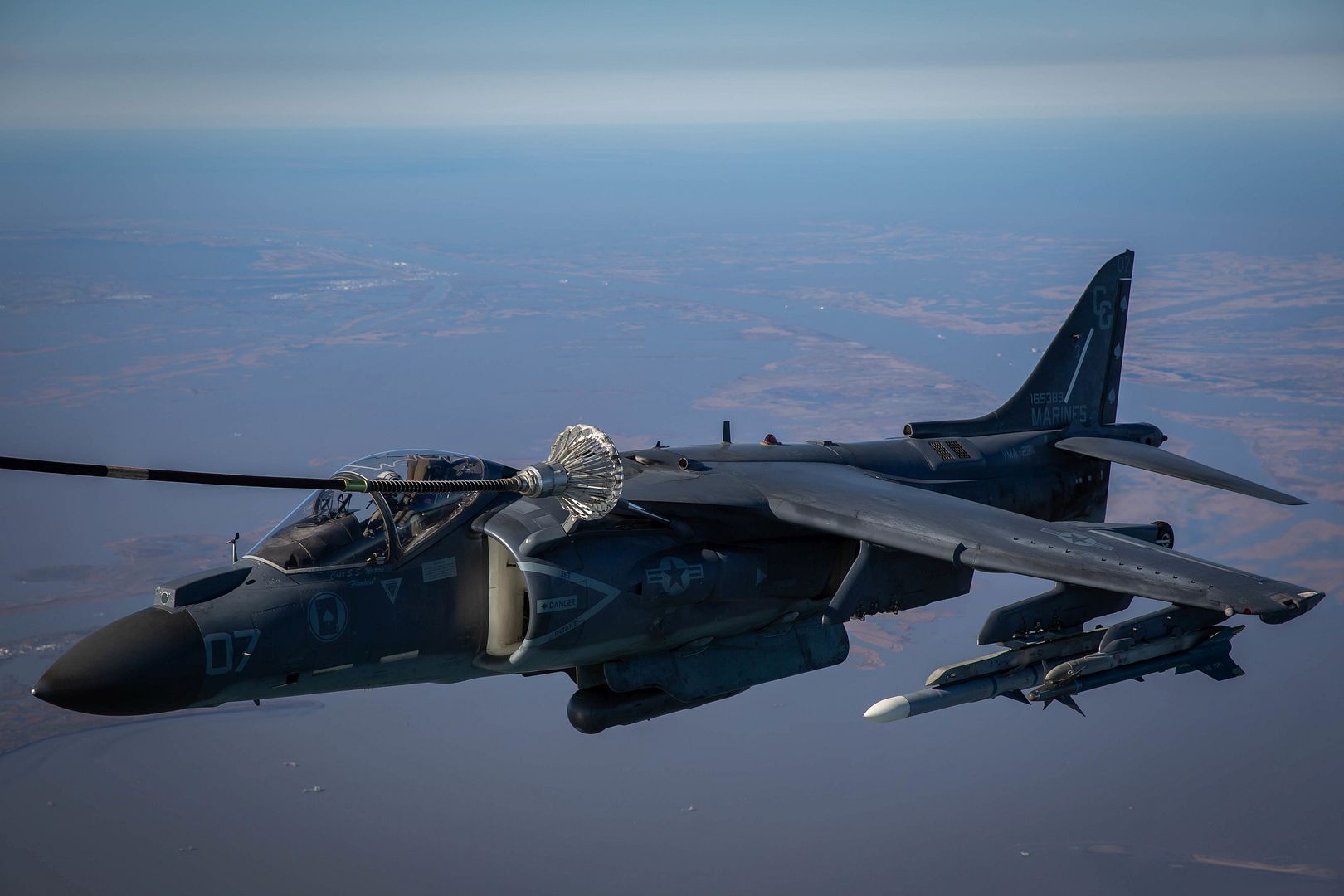
U.S. Navy Capt. Randy Peck, commanding officer of the aircraft carrier USS John C. Stennis (CVN 74), and Cmdr. Desobry Bowens, operations officer of Carrier Airwing (CVW) 9, launch from the flight deck in an F/A-18F Super Hornet, assigned to Strike Fighter Squadron (VFA) 41, in the Indian Ocean, Jan. 29, 2019. The John C. Stennis is deployed to the U.S. 7th Fleet area of operations in support of security and stability in the Indo-Pacific region. (U.S. Navy photo's by Mass Communication 3rd Class Grant G. Grady)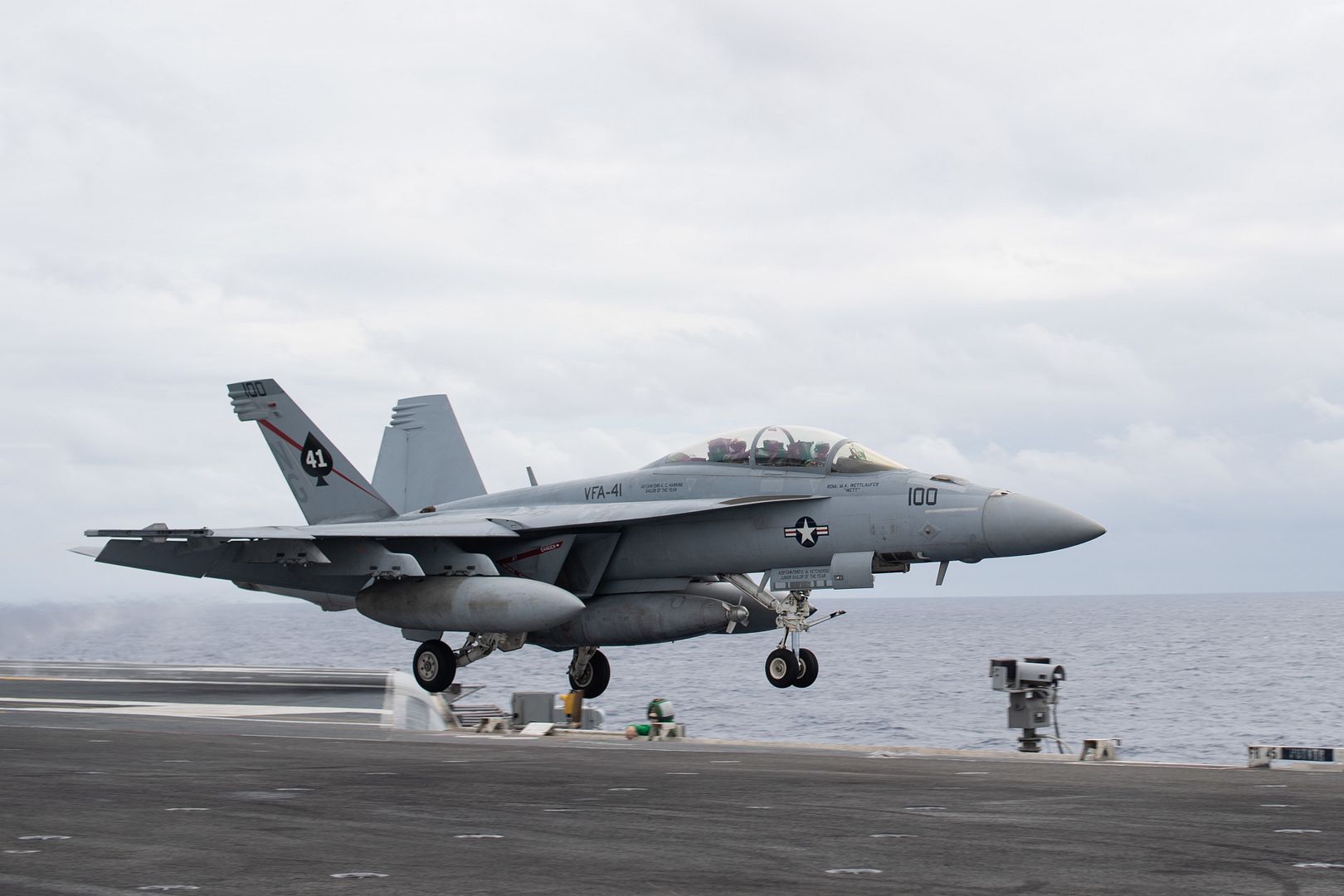
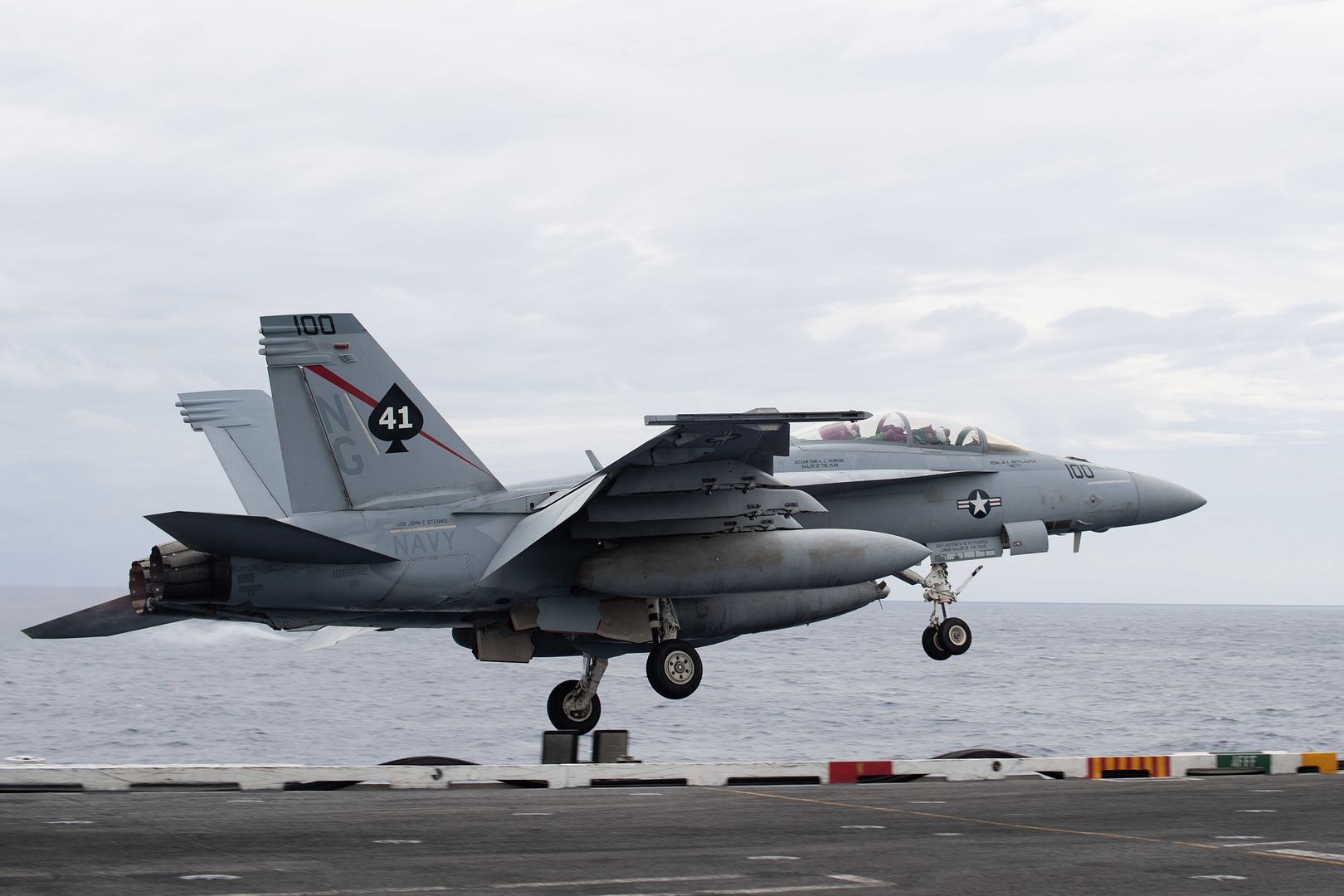
FORT WORTH, Texas, Jan. 30, 2019 /PRNewswire/ -- Dutch and American officials celebrated the roll out of the first operational F-35A Lightning II for the Royal Netherlands Air Force (RNLAF) at Lockheed Martin (NYSE: LMT) in Fort Worth, Texas, commemorating a transformational leap in capability for the future of the Netherlands' national defense.
"Receiving this F-35 at Leeuwarden Air Base later this year is going to be a huge driver for change for our Air Force and will have tremendous impact on the relevance of our Air Force as part of the coalition," said Lt. Gen. Dennis Luyt, Commander, RNLAF. "We want to be among the best air forces of the world, and the platform of F-35 allows us to do that."
Various distinguished government, military and industry guests joined Luyt in attendance at the ceremony including Lockheed Martin Chairman, President and CEO Marillyn Hewson; State Secretary, the Netherlands Ministry of Economic Affairs Mona Keijzer; and Special Envoy F-35, the Netherlands Ministry of Economic Affairs Maxime Verhagen.
"From the very beginning of the F-35 program, the Netherlands has been a key partner in developing, testing, improving, and maintaining this remarkable aircraft," said Hewson. "Dutch suppliers have provided high-volume production, structural-design support, and advanced technologies, and Dutch aircraft and personnel continue to support ongoing testing and operations for the worldwide F-35 fleet. As we look to the future, the Netherlands will serve as a sustainment hub in the European region for maintenance, repair, overhaul, and upgrade projects."
Following the ceremony, the aircraft is scheduled to ferry to Luke Air Force Base, Arizona, where F-35A pilot training takes place. The aircraft is the first operational F-35 and the third Netherlands jet delivered to date. The first two Dutch F-35s were delivered in 2013 and are at Edwards AFB, California, supporting operational testing. The RNLAF plans to acquire 37 F-35As.
F-35 Program Economic Impact in the Netherlands
Dutch industry, including 25 suppliers to date, have benefitted from the F-35 program with contracts awarded for high technology work. As estimated by the Netherlands Ministry of Economic Affairs, the F-35 program has already generated more than $1 billion USD in contracts for Netherlands industry, creating thousands of direct and indirect jobs for the Netherlands over the life of the program.
To date, more than 360 F-35s have been delivered and are now operating from 16 bases worldwide. Ten nations are flying the F-35, seven countries have F-35s operating from a base on their home soil, five services have declared Initial Operating Capability, and two services have announced their F-35s have been used in combat operations.
With stealth technology, supersonic speed, advanced sensors, weapons capacity and increased range, the F-35 is the most advanced, survivable and connected aircraft in the world. More than a fighter jet, the F-35's ability to collect, analyze and share data, is a powerful force multiplier that enhances all airborne, surface and ground-based assets in the battlespace enabling men and women in uniform to execute their mission and return home safely.
For additional information, visit our website: www.f35.com/netherlands.
Busan, 30 January 2019 ? The Republic of Korea Air Force (ROKAF) has taken delivery of its first Airbus A330 Multi Role Tanker Transport (MRTT) aircraft.
The new-generation A330 MRTT extends the endurance and range of the ROKAF?s fighter aircraft, and provides the service with strategic transport capability for passengers and freight.
In South Korean service the A330 MRTT will be powered by Rolls-Royce Trent 700 engines, be equipped with the Airbus Refuelling Boom System, and can be configured in a variety of layouts to carry passengers and freight or for medevac purposes.
South Korea becomes the seventh member of the worldwide family of A330 MRTT operators and is one of 12 nations to have ordered the aircraft. This latest delivery brings the total in-service fleet to 35.
Fernando Alonso, Executive Vice President, Airbus, said: ?The A330 MRTT has clearly established itself as the world?s premier tanker and strategic transport aircraft, and has been widely praised by the current operators. It will be a critical asset of the ROKAF and leading air forces worldwide for many decades.?
-
 Main AdminA P-47 Thunderbolt lands at Royal Air Force Lakenheath, England, Jan. 30, 2019. (U.S. Air Force photo by Senior Airman Malcolm Mayfield)
Main AdminA P-47 Thunderbolt lands at Royal Air Force Lakenheath, England, Jan. 30, 2019. (U.S. Air Force photo by Senior Airman Malcolm Mayfield)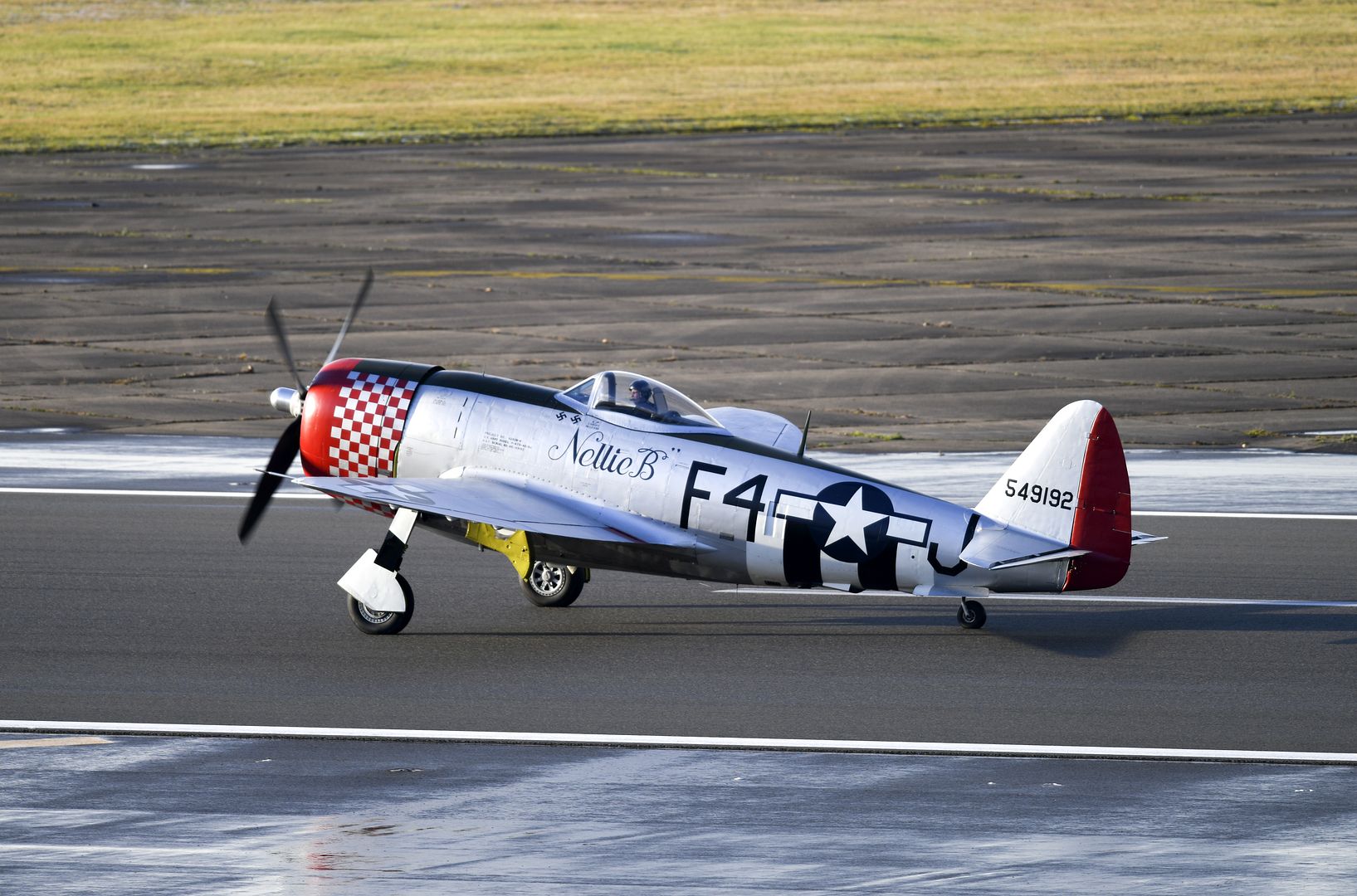
An F-15E Strike Eagle assigned to the 492nd Fighter Squadron is painted in the heritage colors of its World War II P-47 Thunderbolt predecessor at Royal Air Force Lakenheath, England Jan 30. The 48th Fighter Wing officially unveiled the aircraft publicly during a ceremony on Jan 31. (U.S. Air Force photo's/Tech. Sgt. Matthew Plew)


David Martin, CBS News Correspondent, receives an F-16 Fighting Falcon orientation flight from McEntire Joint National Guard Base, S.C. by U.S. Air Force Lt. Col. Andrew Thorne, a pilot from the South Carolina Air National Guard?s 169th Fighter Wing, that will simulate a North American Aerospace Defense Command-coordinated exercise with the Federal Aviation Administration and S.C. Wing ? Civil Air Patrol over military training airspaces in South Carolina and Georgia, Jan. 29, 2019. The flight will also include an air-to-air refueling mission with a KC-135 Stratotanker from the 134th Air Refueling Wing, Tennessee Air National Guard. The South Carolina Air National Guard is hosting a NORAD-sponsored air defense media day to showcase how NORAD coordinates with federal, state and local agencies to support various special security events such as this year?s Super Bowl in its ongoing commitment to safeguard North America?s skies. (U.S. Air National Guard photo by Senior Airman Ashleigh Pavelek)
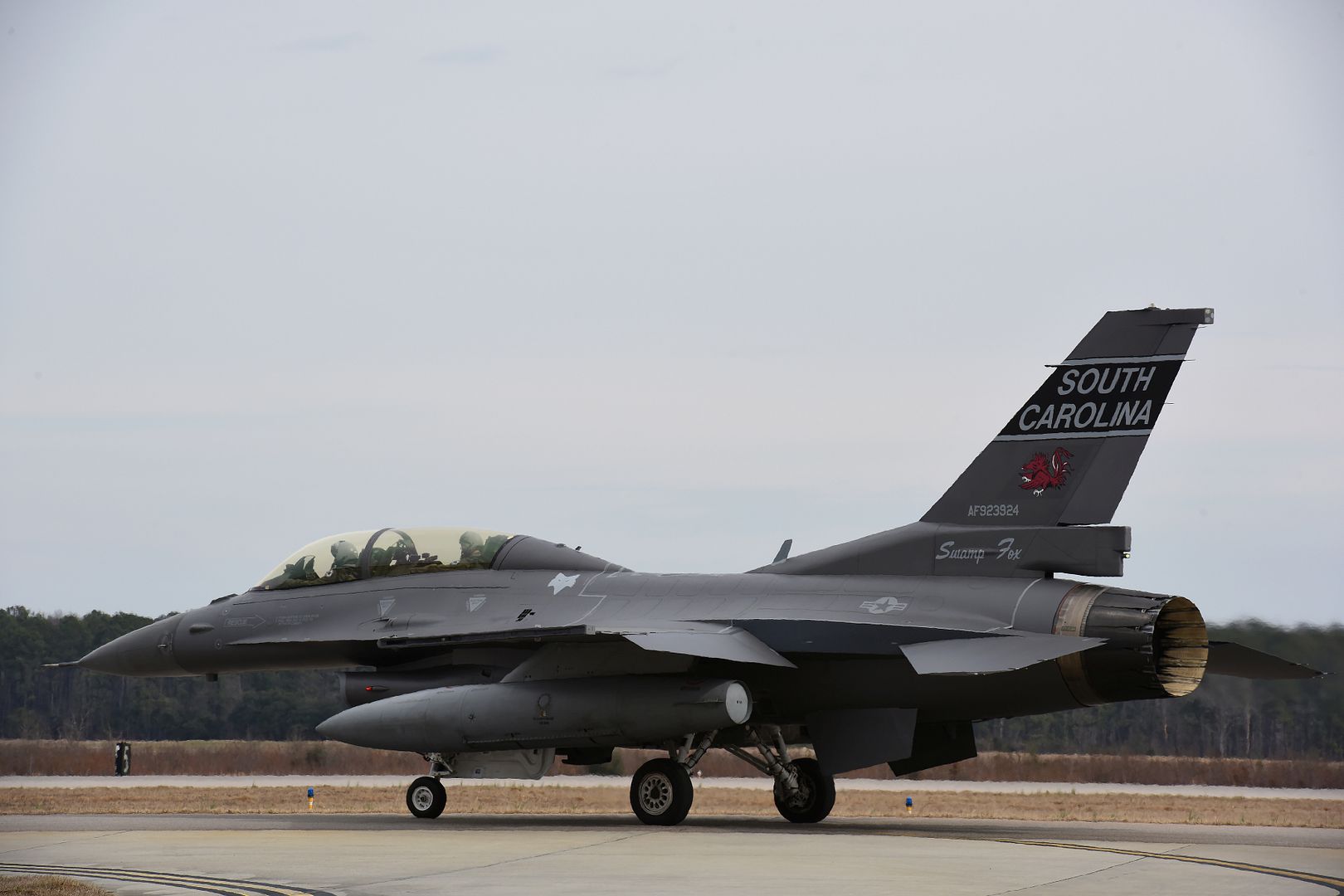
The South Carolina Air National Guard at McEntire Joint National Guard Base is hosting a North American Aerospace Defense Command-sponsored air defense media day, Jan. 29, 2019, to showcase how NORAD coordinates with federal, state and local agencies to support various special security events such as this year?s Super Bowl in its ongoing commitment to safeguard North America?s skies. During this all-day event, various national and local news personalities will experience an inflight simulation of a NORAD-coordinated exercise with the Federal Aviation Administration and S.C. Wing ? Civil Air Patrol over military training airspaces in South Carolina and Georgia. The flight will also include an air-to-air refueling mission with a KC-135 Stratotanker from the 134th Air Refueling Wing, Tennessee Air National Guard. (U.S. Air National Guard photo by Tech. Sgt. Dan Gagnon)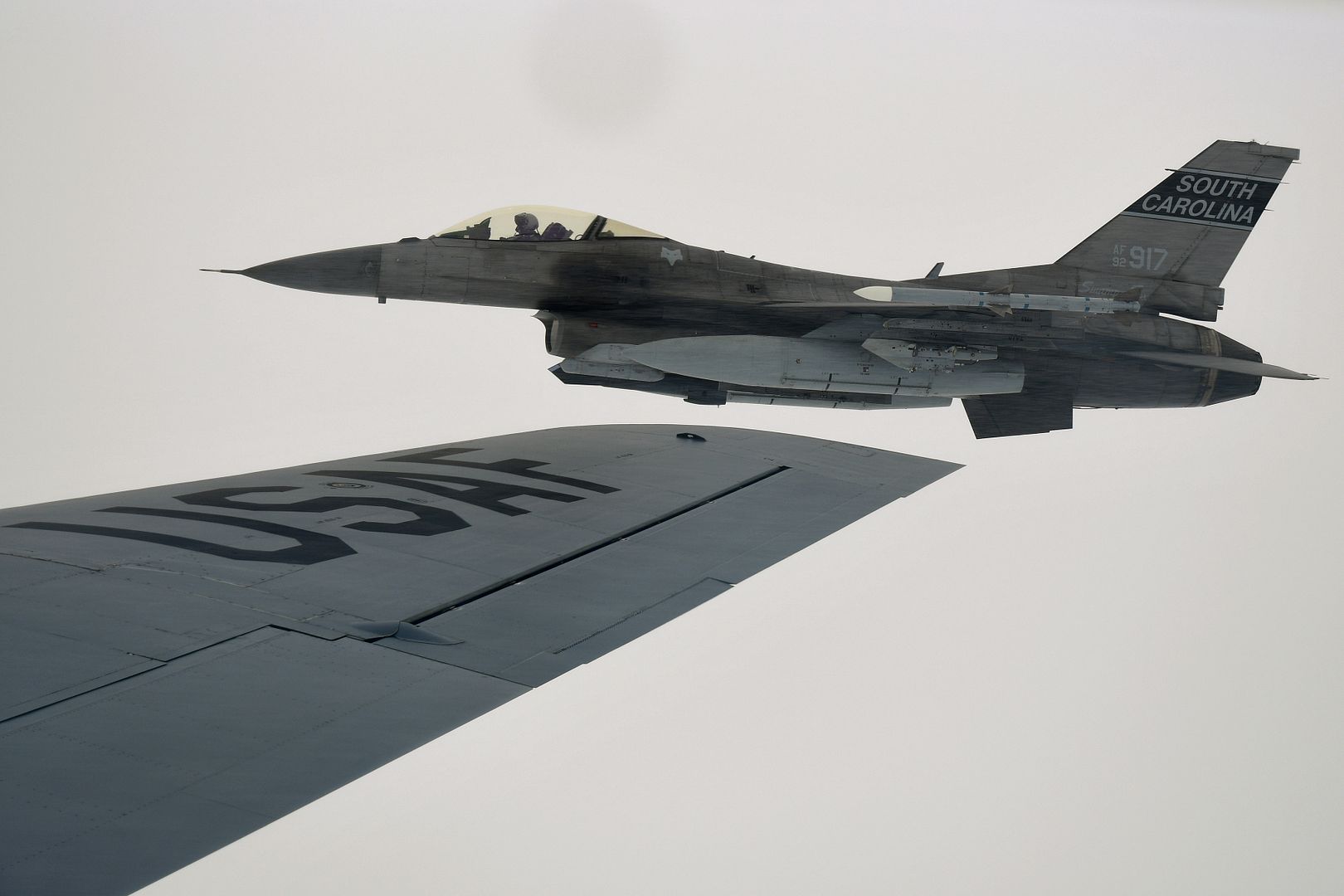
A U.S. Marine Corps AV-8B Harrier prepares for flight during exercise Bayou Thunder at Naval Air Station Joint Air Base New Orleans, Louisiana, Jan. 30, 2019. The purpose of the exercise is to enhance Marine attack Squadron (VMA) 231's air-to-air and air-to-ground capabilities while also strengthening service interoperability with joint services. The aircraft is assigned to VMA-231, Marine Aircraft Group 14, 2nd Marine Aircraft Wing. (U.S. Marine Corps photo by Cpl. Cody Rowe)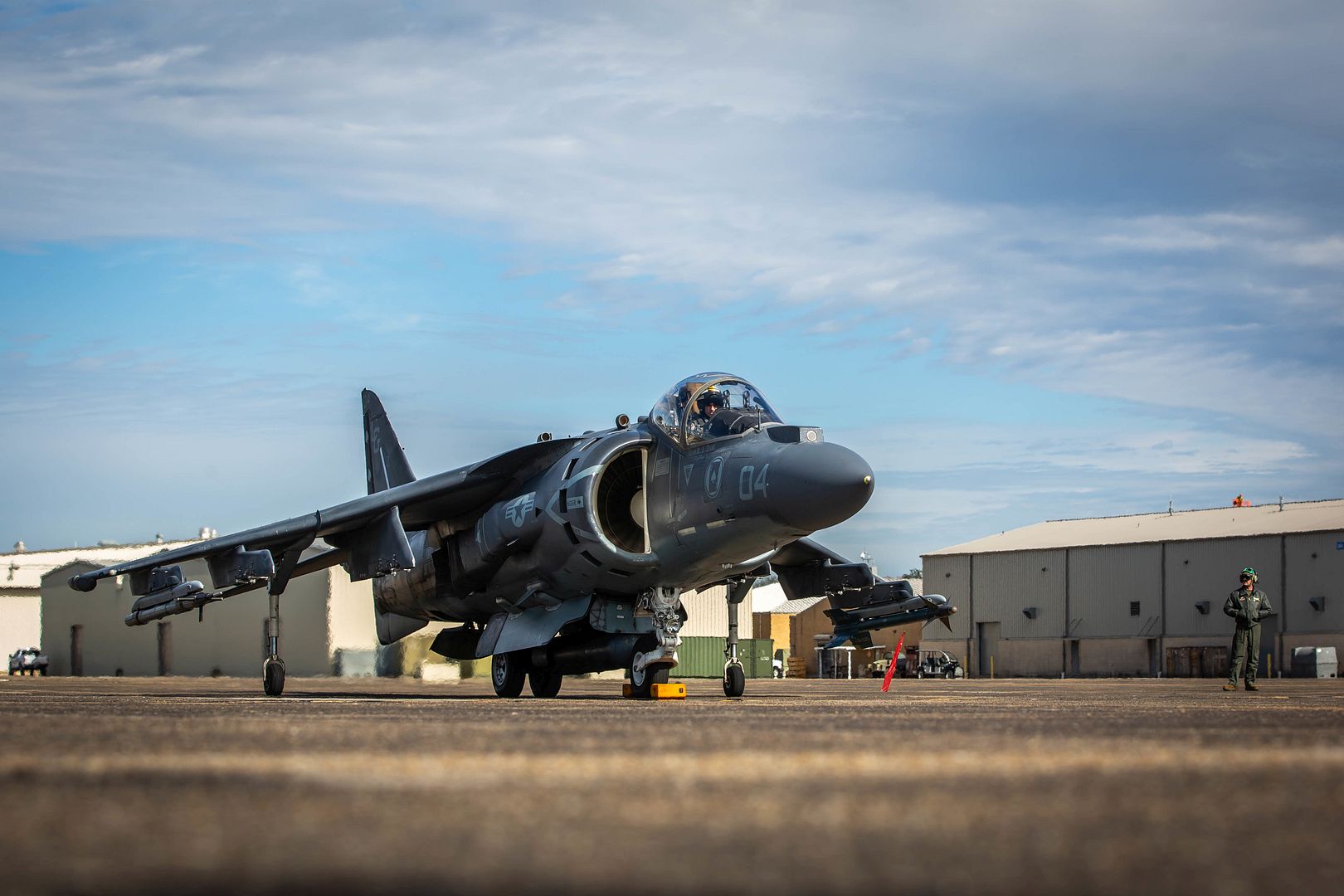
EL CENTRO, Calif. (Jan. 29, 2019) Opposing solo Lt. Cmdr. Andre Webb, assigned to the U.S. Navy Flight Demonstration Squadron, the Blue Angels, flies alongside lead solo Lt. Cmdr. Brandon Hempler during a training flight. The Blue Angels are conducting winter training at Naval Air Facility El Centro, California, in preparation for the 2019 show season. The team is scheduled to conduct 61 flight demonstrations at 32 locations across the country to showcase the pride and professionalism of the U.S. Navy and Marine Corps to the American public. (U.S. Navy photo by Mass Communication Specialist 2nd Class Timothy Schumaker/Released)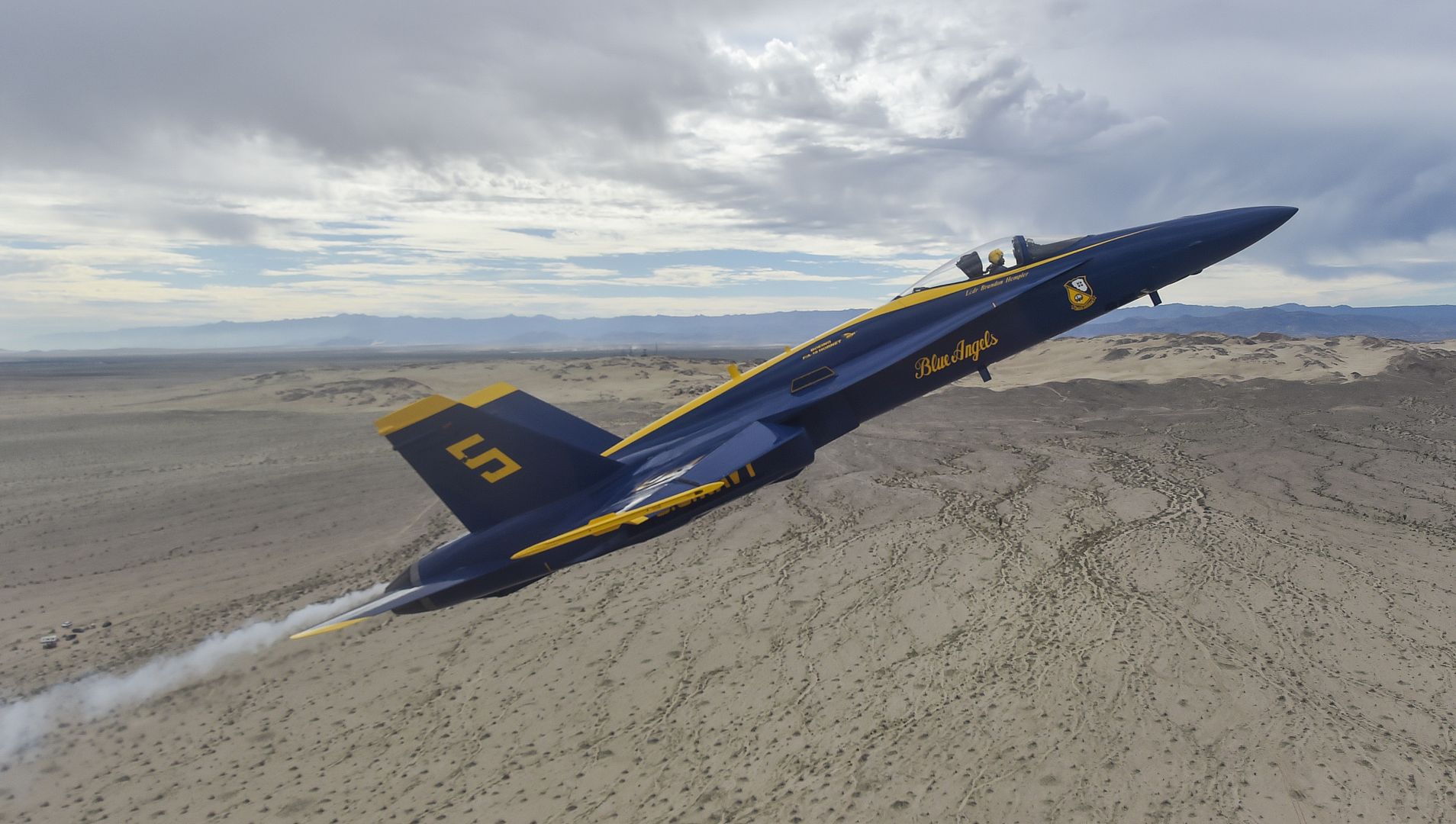
PACIFIC OCEAN (Jan. 15, 2019) An AV-8B Harrier attached to Marine Medium Tiltrotor Squadron (VMM) 163 (Reinforced), 11th Marine Expeditionary Unit (MEU), prepares to land aboard the amphibious assault ship USS Boxer (LHD 4). The Marines and Sailors of the 11th MEU are conducting routine operations as a part of the Boxer Amphibious Ready Group (ARG) in the eastern Pacific Ocean. (U.S. Marine Corps Photo by Cpl. Matthew Teutsch/Released)
-
 Main AdminA U.S. Customs and Border Protection Air and Marine Operations AS350 A-Star helicopter takes off at Dobbins Air Reserve Base in preparation of Super Bowl LIII in Marietta, Georgia, January 31, 2019. U.S. Customs and Border Protection Photo by Glenn Fawcett
Main AdminA U.S. Customs and Border Protection Air and Marine Operations AS350 A-Star helicopter takes off at Dobbins Air Reserve Base in preparation of Super Bowl LIII in Marietta, Georgia, January 31, 2019. U.S. Customs and Border Protection Photo by Glenn Fawcett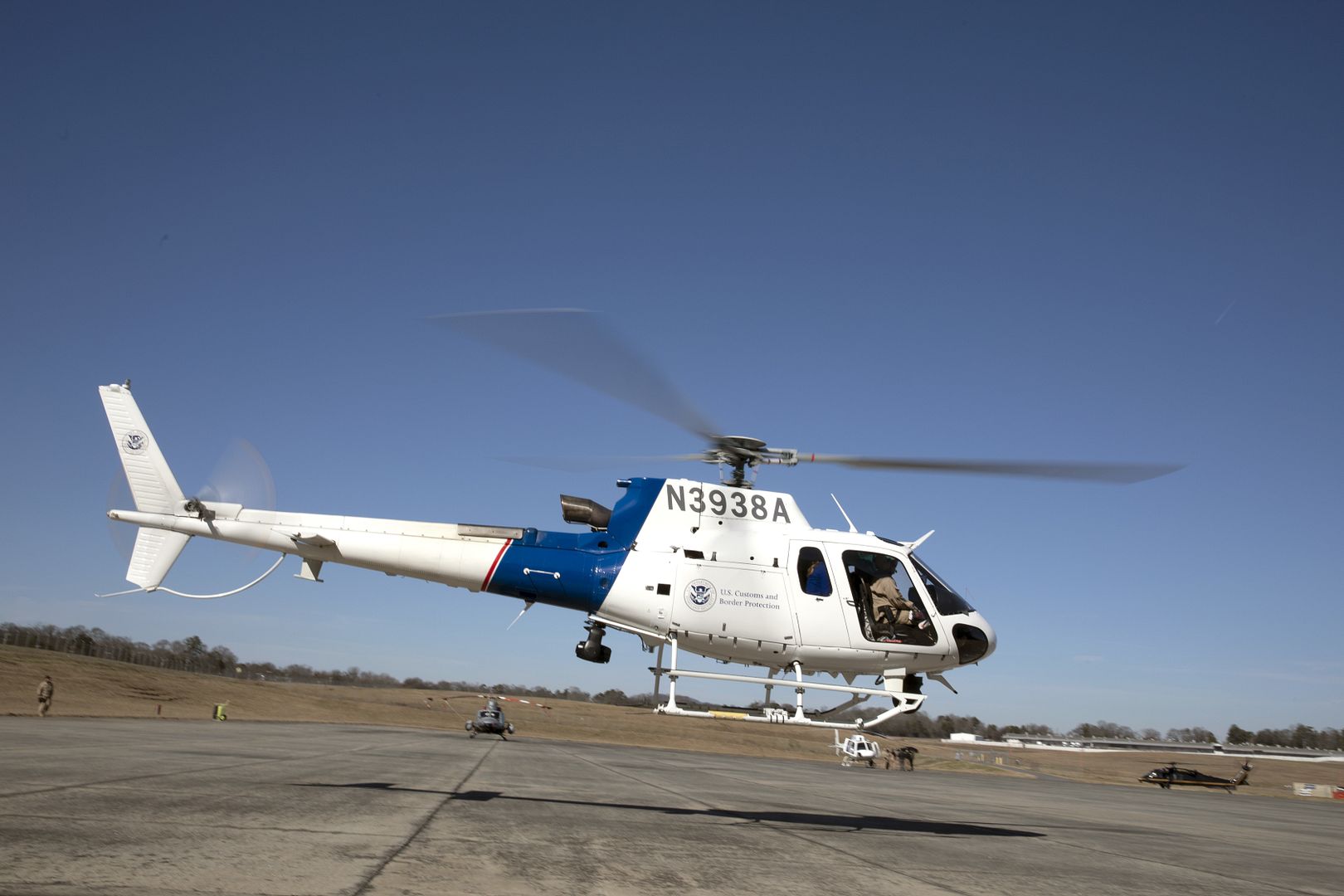
An F-15 Eagle from the 104th Fighter Wing at Barnes Air National Guard Base, Mass., sits on the flightline before an exercise on Jan. 31, 2019 at Patrick Air Force Base, Fla. The team and their aircraft traveled to Patrick AFB to perform various exercises. (U.S. Air Force photo by Airman 1st Class Zoe Thacker)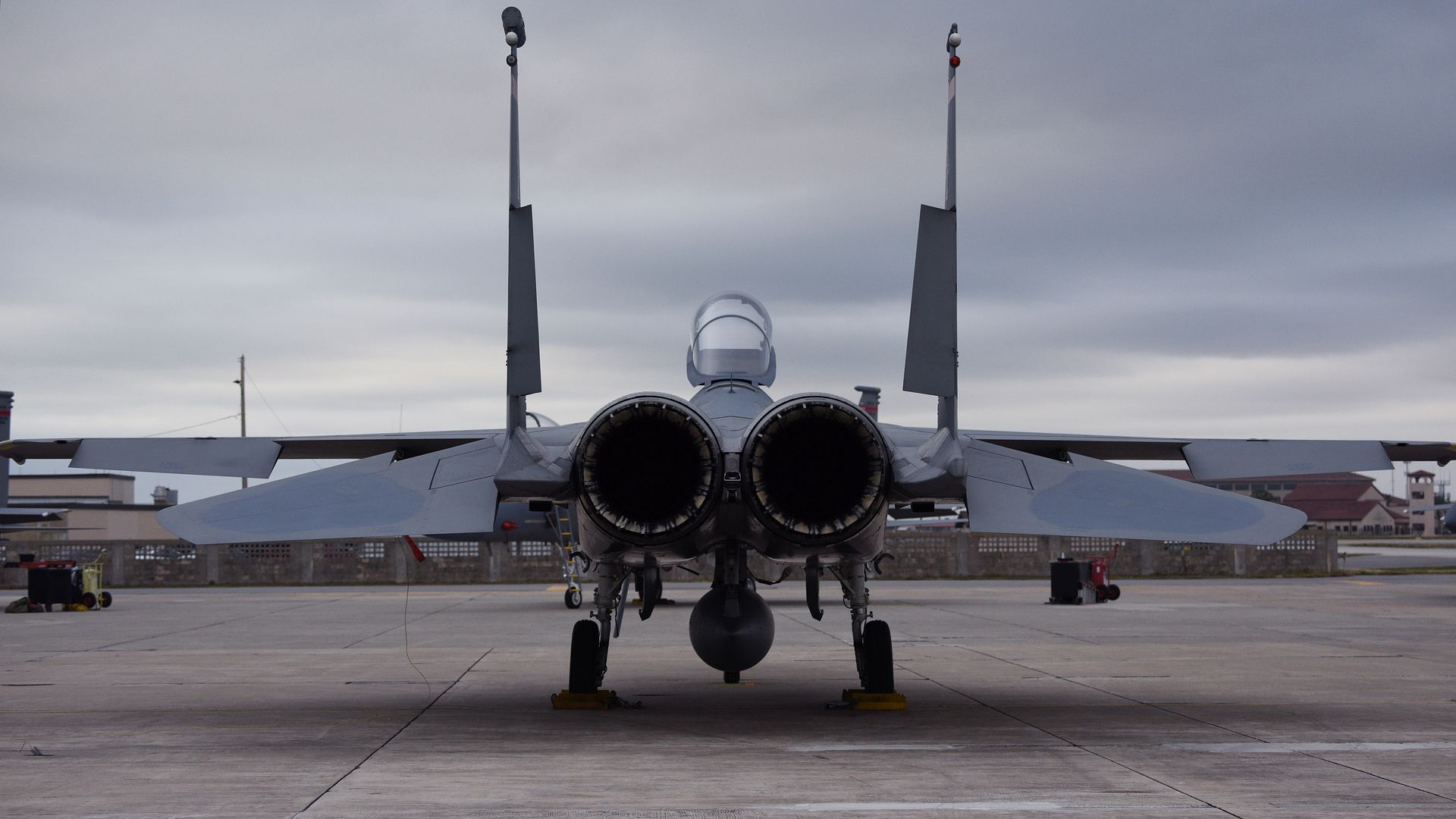
Pilots from the 388th Fighter Wing's 4th Fighter Sqaudron prepare for launch, Nellis Air Force Base, Nevada, Jan. 31, 2019. Pilots and maintainers from the 388th Fighter Wing's 4th Fighter Squadron and 4th Aircraft Maintenance Unit are participating in Red Flag 19-1 at Nellis AFB, Nevada. This is wing's second Red Flag with the F-35A, America's most advanced multi-role fighter, which brings game-changing stealth, lethality and interoperability to the modern battlefield. Red Flag is the Air Force's premier combat exercise and includes units from across the Air Force and allied nations. The 388th is the lead wing for Red Flag 19-1. (U.S. Air Force photo by R. Nial Bradshaw)
An F-16 Pilot, assigned to the 180th Fighter Wing, Ohio Air National Guard, prepares for a training sortie at Patrick Air Force Base, Florida, Feb. 1, 2019. The 180FW deployed more than 130 Airmen to Patrick AFB to develop and enhance interoperability, force integration and understanding of our sister service units. (Air National Guard photo by Senior Airman Hope Geiger)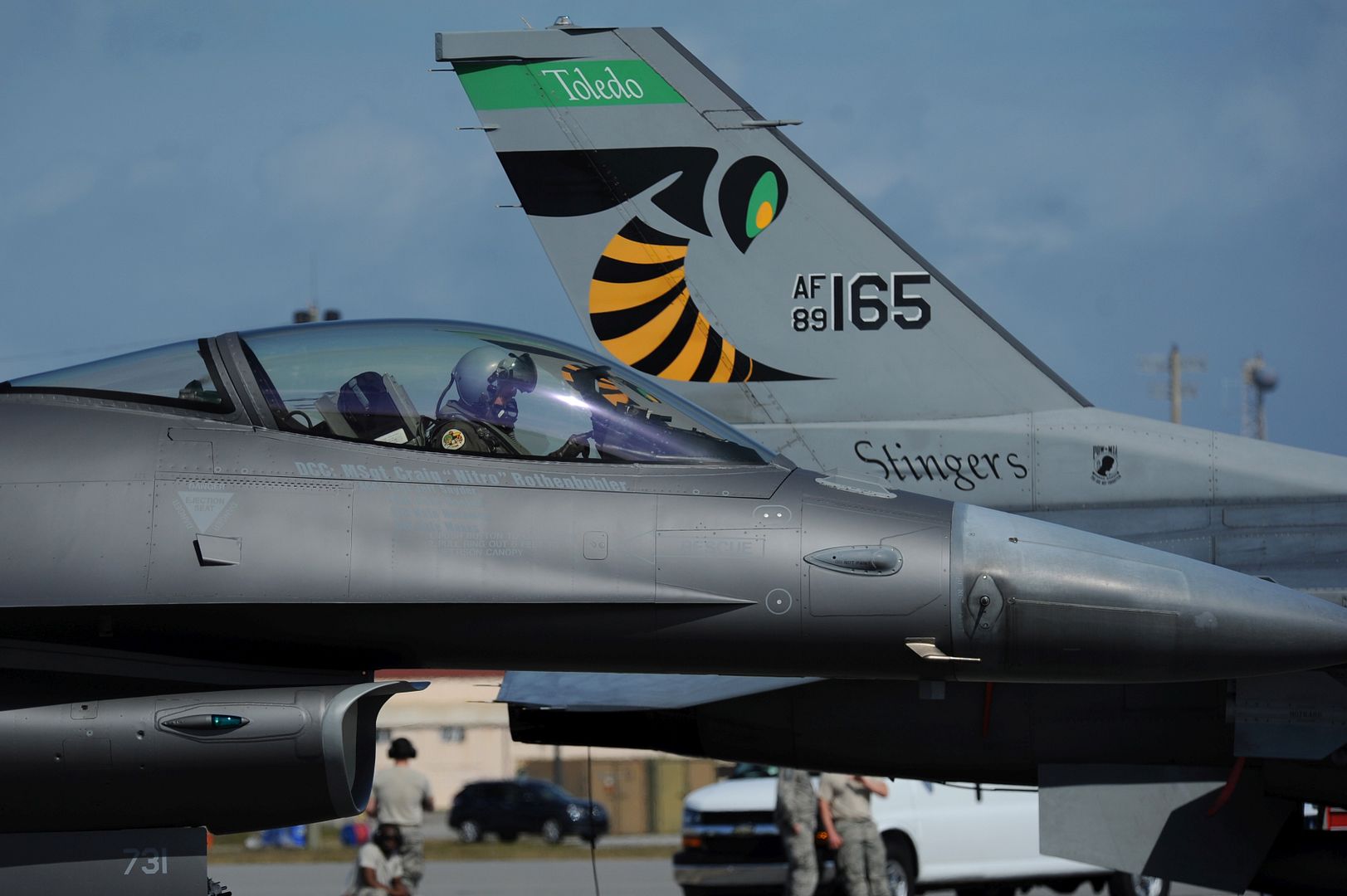
An F-16 Fighting Falcon, assigned to the 180th Fighter Wing, Ohio Air National Guard, soars through the sky during an early morning training sortie at Patrick Air Force Base, Florida, Jan. 31, 2019. The Patrick AFB deployment will be a mutually beneficial exercise that brings together two ANG units with dissimilar fighter aircraft to conduct a variety of air-to-air operations and sharing of best practices. (Air National Guard photo by Senior Airman Hope Geiger)
Four F/A-18A Hornets assigned to Marine Fighter Attack Squadron (VMFA) 323 fly in formation behind a KC-130J Super Hercules attached to Marine Aerial Refueler Transport Squadron (VMGR) 352, during a readiness exercise called the ?Elephant Walk? above Marine Corps Air Station Miramar, Calif., Feb. 1. The exercise consisted of a variety of aircraft flying to rehearse, improve and test the MAG?s readiness capabilities. (U.S. Marine Corps photo by Cpl. Becky Cleveland)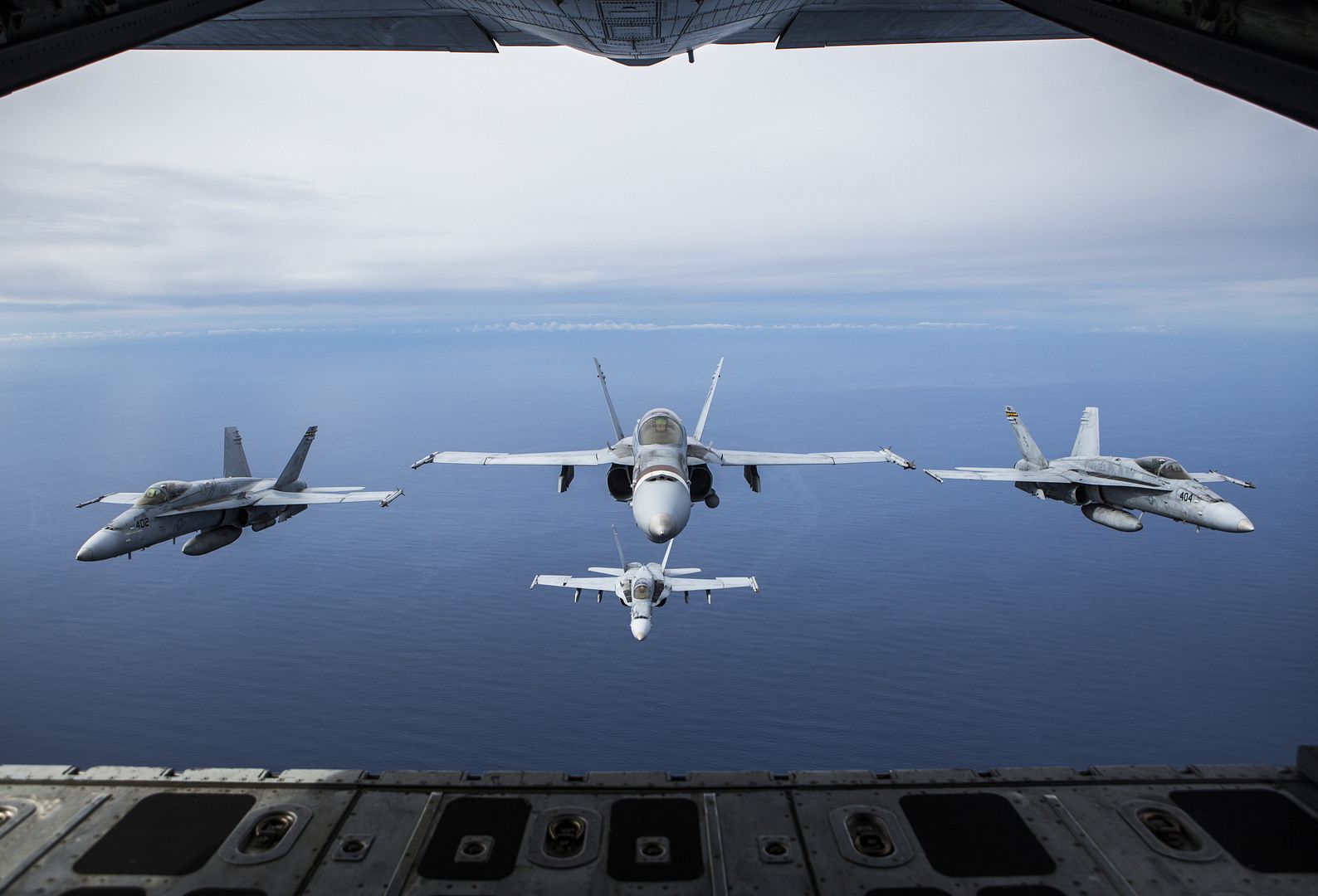
An SA-330J Puma helicopter prepares to lift cargo off of the flight deck of the aircraft carrier USS John C. Stennis (CVN 74) during a replenishment-at-sea in the Indian Ocean, Jan. 31, 2019. The John C. Stennis is deployed to the U.S. 7th Fleet area of operations in support of security and stability in the Indo-Pacific region. (U.S. Navy photo by Mass Communication Specialist Seaman Jeffery L. Southerland)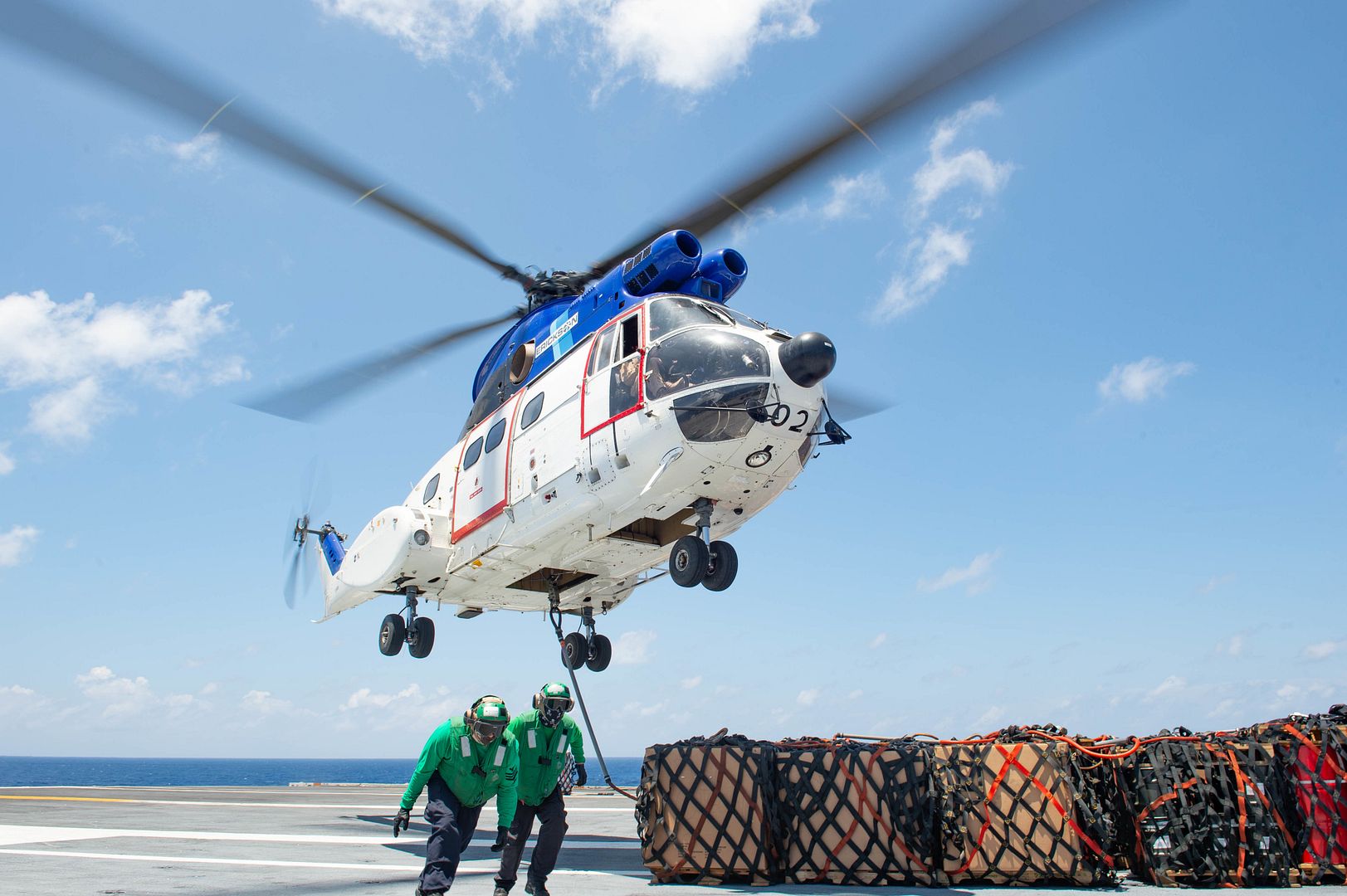
American Airlines has taken delivery of the first of 100 A321neos on order from Airbus, powered by CFM International LEAP-1A engines. The aircraft, MSN8647, departed Hamburg early Friday for the trans-Atlantic ferry flight to Pittsburgh where American?s technicians will get the A321neo ready for customer flights.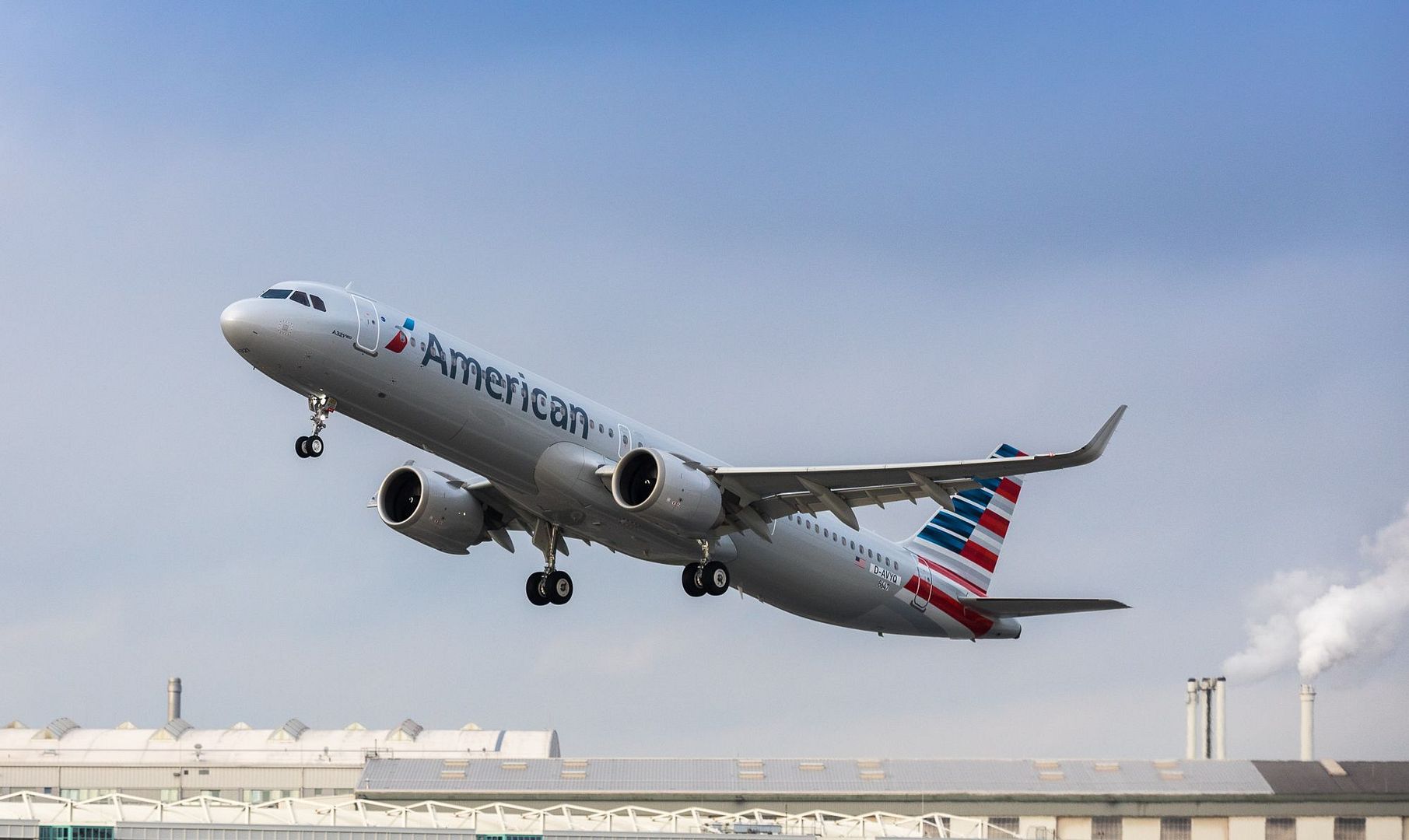
S?o Jos? dos Campos, Brazil, January 31st, 2018 ? Embraer and SkyWest, Inc. have signed a firm order for nine E175 jets, with deliveries expected to begin in 2019. The order has a value of USD 422 million, based on current list prices, and was already included in Embraer?s 2018 fourth-quarter backlog. SkyWest Airlines will operate all nine E175s, featuring a 76-seat configuration.
"Since 2013, SkyWest has purchased a total of 158 E175s, including these nine, in order to expand their large existing fleet of Embraer aircraft,? said Charlie Hillis, Vice President, Sales & Marketing, North America, Embraer Commercial Aviation. "We are extremely proud of their ongoing support for the E-Jets program and the fact that the E175 continues to outperform in North America. Without a doubt, the E175 has become the backbone of the regional aviation market in the U.S."
?We?re pleased to continue adding new E175 aircraft under long-term contract to our increasingly efficient, agile and flexible fleet,? said SkyWest Chief Executive Officer and President Chip Childs. ?We appreciate Embraer?s strong partnership and remain impressed with the Embraer product.?
Including this new contract, Embraer has sold more than 565 E175s to airlines in North America, since January 2013, earning more than 80% of all orders in this 70-76-seat jet segment.
SkyWest, Inc. is a premier regional airline company and the holding company of SkyWest Airlines. SkyWest holds a long history with Embraer as early customers for the Embraer EMB 120 Brasilia turboprop aircraft.
Since entering revenue service, the E-Jets family has received more than 1,800 orders and over 1,500 aircraft have been delivered. Today, E-Jets are flying in the fleet of 70 customers in 50 countries. The versatile 70 to 150-seat family is flying with low-cost airlines as well as with regional and mainline carriers.
About SkyWest, Inc.
Based in St. George, Utah, SkyWest, Inc. is the holding company for two scheduled passenger airline operations and an aircraft leasing company with more than 17,000 employees. SkyWest provides commercial air service in cities throughout North America with more than 2,500 daily flights carrying approximately 50 million passengers annually. SkyWest Airlines operates through partnerships with United Airlines (?United?), Delta Air Lines (?Delta?), American Airlines (?American?) and Alaska Airlines.
-
 Main AdminPHILIPPINE SEA (Feb. 3, 2019) An F-35B Lightning II aircraft attached to the F-35B detachment of the ?Flying Tigers? of Marine Medium Tiltrotor Squadron (VMM) 262 (Reinforced) takes off from the flight deck of the amphibious assault ship USS Wasp (LHD 1) during flight operations. Wasp, flagship of the Wasp Amphibious Ready Group, with embarked 31st Marine Expeditionary Unit, is operating in the Indo-Pacific region to enhance interoperability with partners and serve as a ready-response force for any type of contingency. (U.S. Navy photo by Mass Communication Specialist 2nd Class Sarah Myers)
Main AdminPHILIPPINE SEA (Feb. 3, 2019) An F-35B Lightning II aircraft attached to the F-35B detachment of the ?Flying Tigers? of Marine Medium Tiltrotor Squadron (VMM) 262 (Reinforced) takes off from the flight deck of the amphibious assault ship USS Wasp (LHD 1) during flight operations. Wasp, flagship of the Wasp Amphibious Ready Group, with embarked 31st Marine Expeditionary Unit, is operating in the Indo-Pacific region to enhance interoperability with partners and serve as a ready-response force for any type of contingency. (U.S. Navy photo by Mass Communication Specialist 2nd Class Sarah Myers)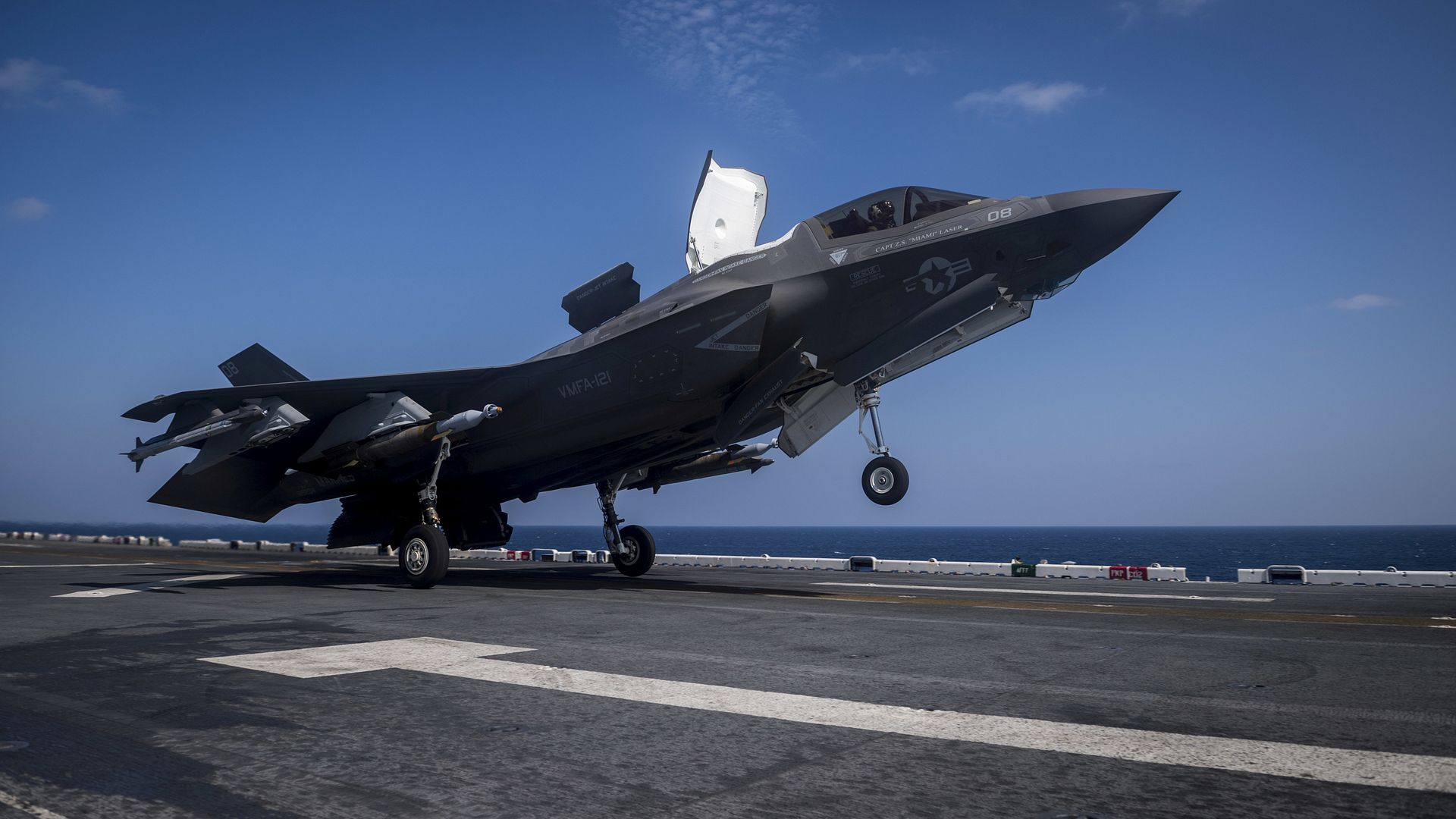
An F-35B Lightning II with the F-35B detachment of Medium Marine Tiltrotor Squadron 262 (Reinforced) carries Guided Bomb Units above the East China Sea, Feb. 3, 2019. Naval aviators with the detachment fly the Marine Corps' newest, most advanced multi-role fighter, the F-35B. The 31st Marine Expeditionary Unit, the Marine Corps? only continuously forward-deployed MEU partnering with the Wasp Amphibious Ready Group, provides a flexible and lethal force ready to perform a wide range of military operations as the premier crisis response force in the Indo-Pacific region. (U.S. Marine Corps photo by Maj. Jesse Peppers/ Released)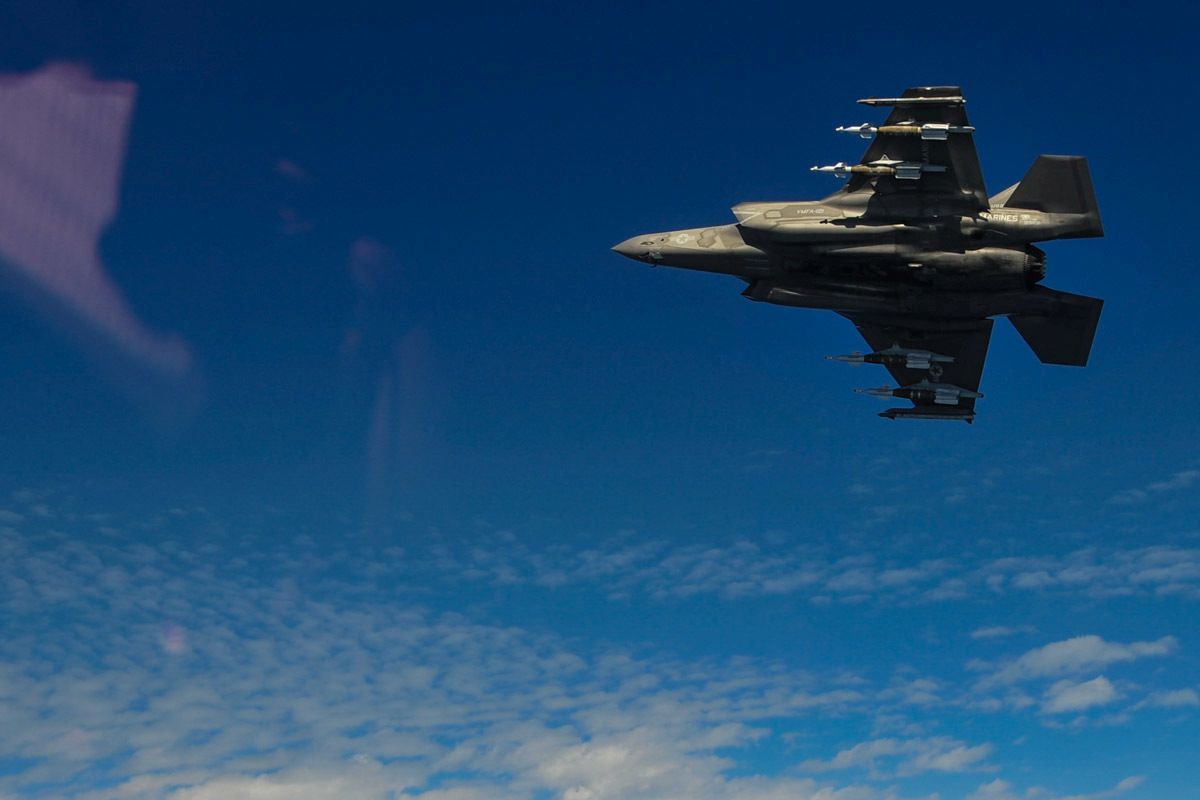
An F-35B Lightning II with the F-35B detachment of Medium Marine Tiltrotor Squadron 262 (Reinforced) releases Guided Bomb Units on-target above the Pacific Ocean, Feb. 3, 2019. Naval aviators with the detachment fly the Marine Corps' newest, most advanced multi-role fighter, the F-35B. The 31st Marine Expeditionary Unit, the Marine Corps? only continuously forward-deployed MEU partnering with the Wasp Amphibious Ready Group, provides a flexible and lethal force ready to perform a wide range of military operations as the premier crisis response force in the Indo-Pacific region. (U.S. Marine Corps photo by Maj. Jesse Peppers/ Released)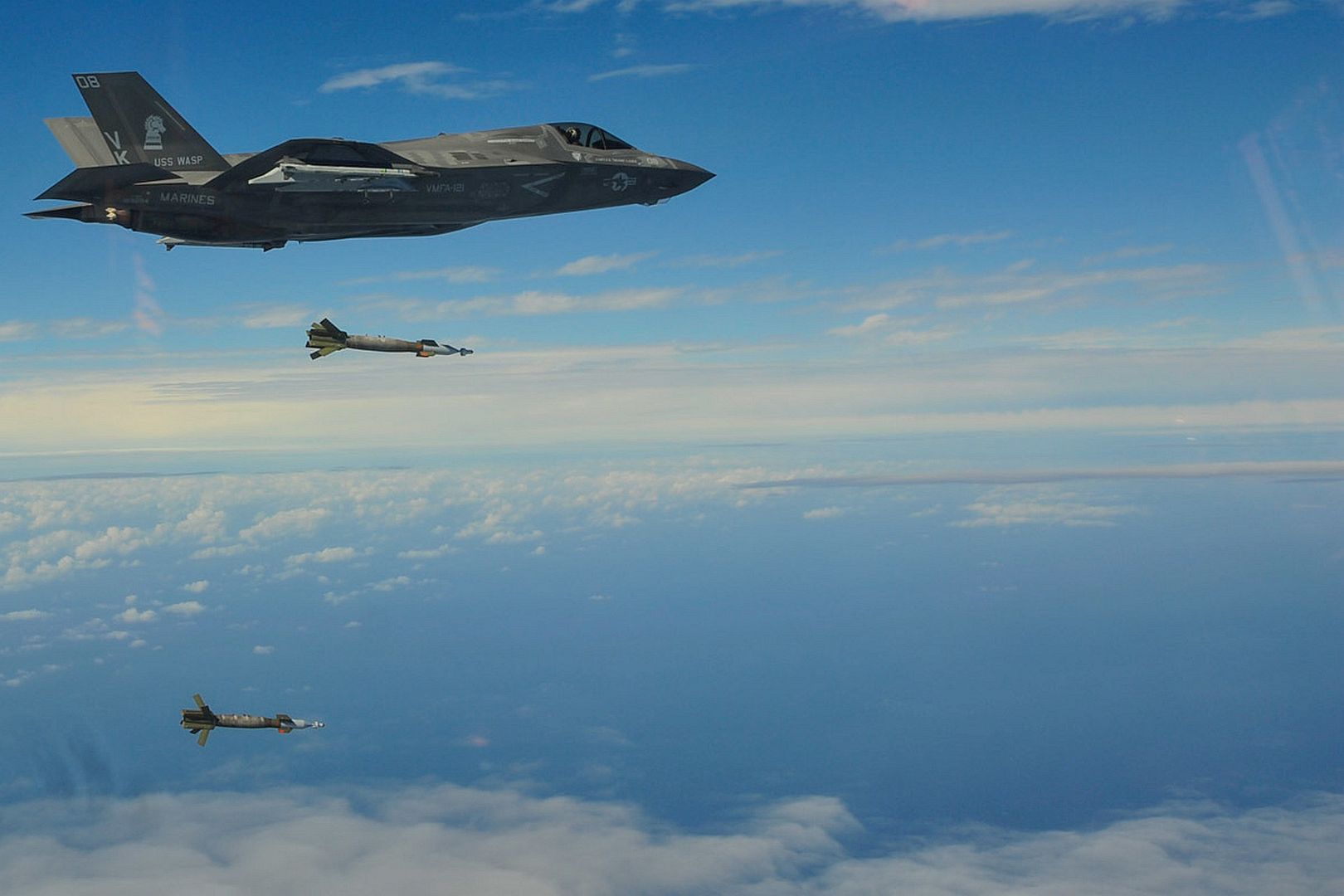
EL CENTRO, Calif. (Feb. 2, 2019) Opposing solo pilot Lt. Cmdr. Andre Webb, assigned to the U.S. Navy Flight Demonstration Squadron, the Blue Angels, performs a low transition take off during a practice demonstration. The Blue Angels are conducting winter training at Naval Air Facility El Centro, California, in preparation for the 2019 show season. The team is scheduled to conduct 61 flight demonstrations at 32 locations across the country to showcase the pride and professionalism of the U.S. Navy and Marine Corps to the American public. (U.S. Navy photo by Mass Communication Specialist 2nd Class Timothy Schumaker/Released)
EGLIN AIR FORCE BASE, Fla. (Feb. 1, 2019) An F-35C Lightning II attached to the "Argonauts" of Strike Fighter Squadron (VFA) 147, assigned to Commander, Joint Strike Fighter Wing, completes a flight over Eglin Air Force Base in Fort Walton Beach, Fla. Feb. 1, 2019. Commander, Joint Strike Fighter Wing, headquartered at NASL ensures that each F-35C squadron is fully combat-ready to conduct carrier-based, all-weather, attack, fighter and support missions for Commander, Naval Air Forces. With its stealth technology, advanced sensors, weapons capacity and range, the F-35C will be the first 5th generation aircraft operated from an aircraft carrier. (U.S. Navy photo's by Chief Mass Communication Specialist Shannon E. Renfroe/Released)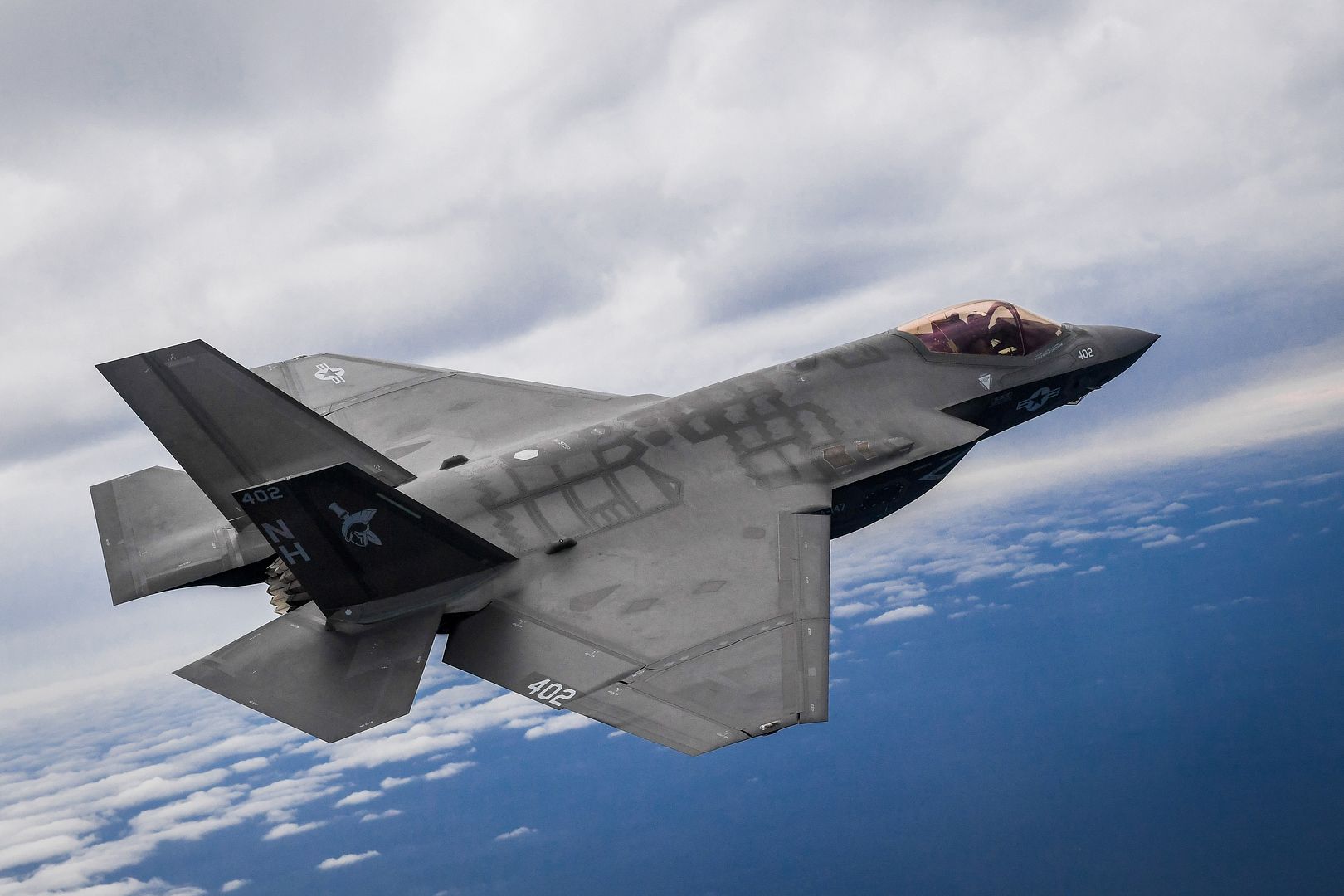
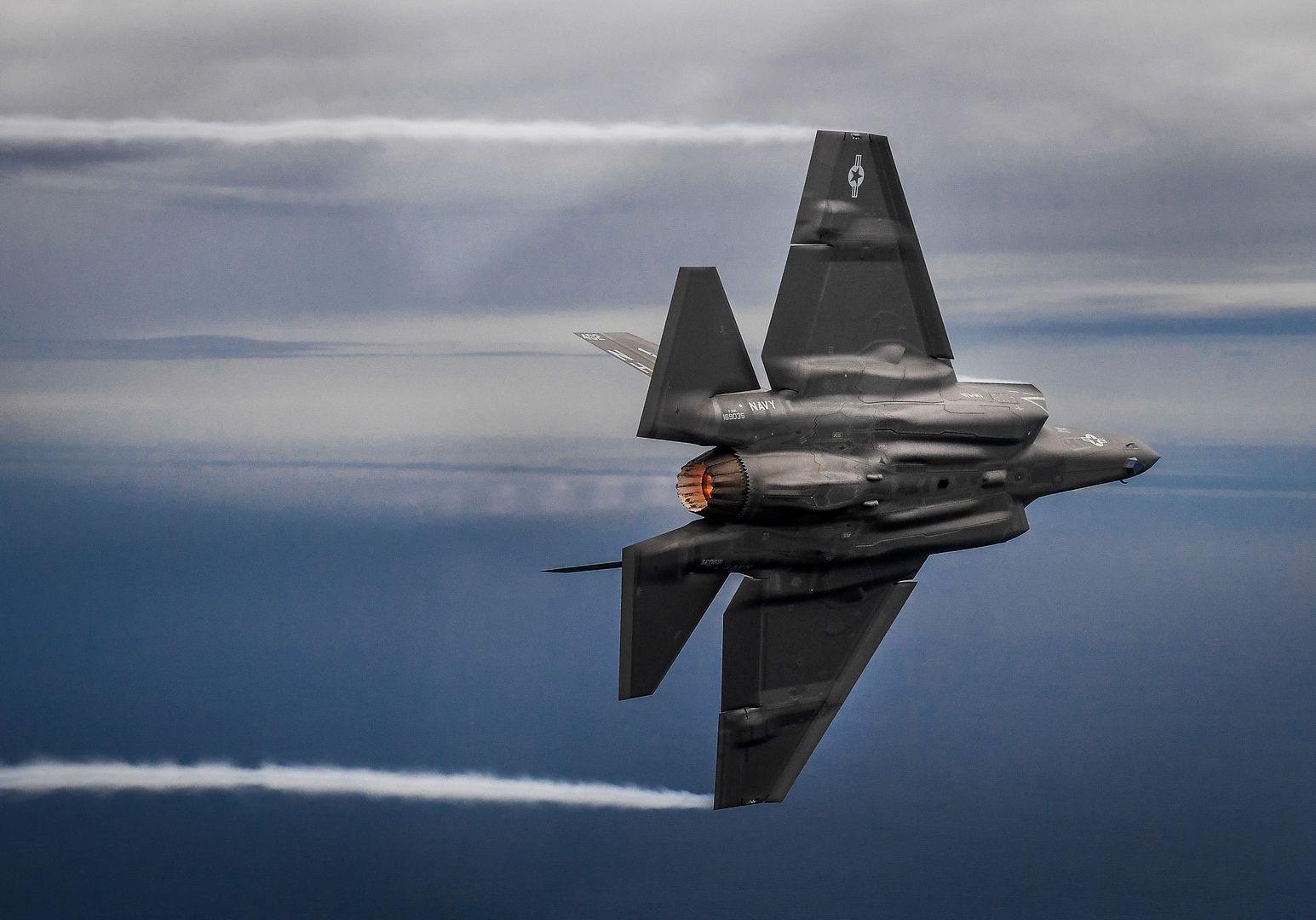
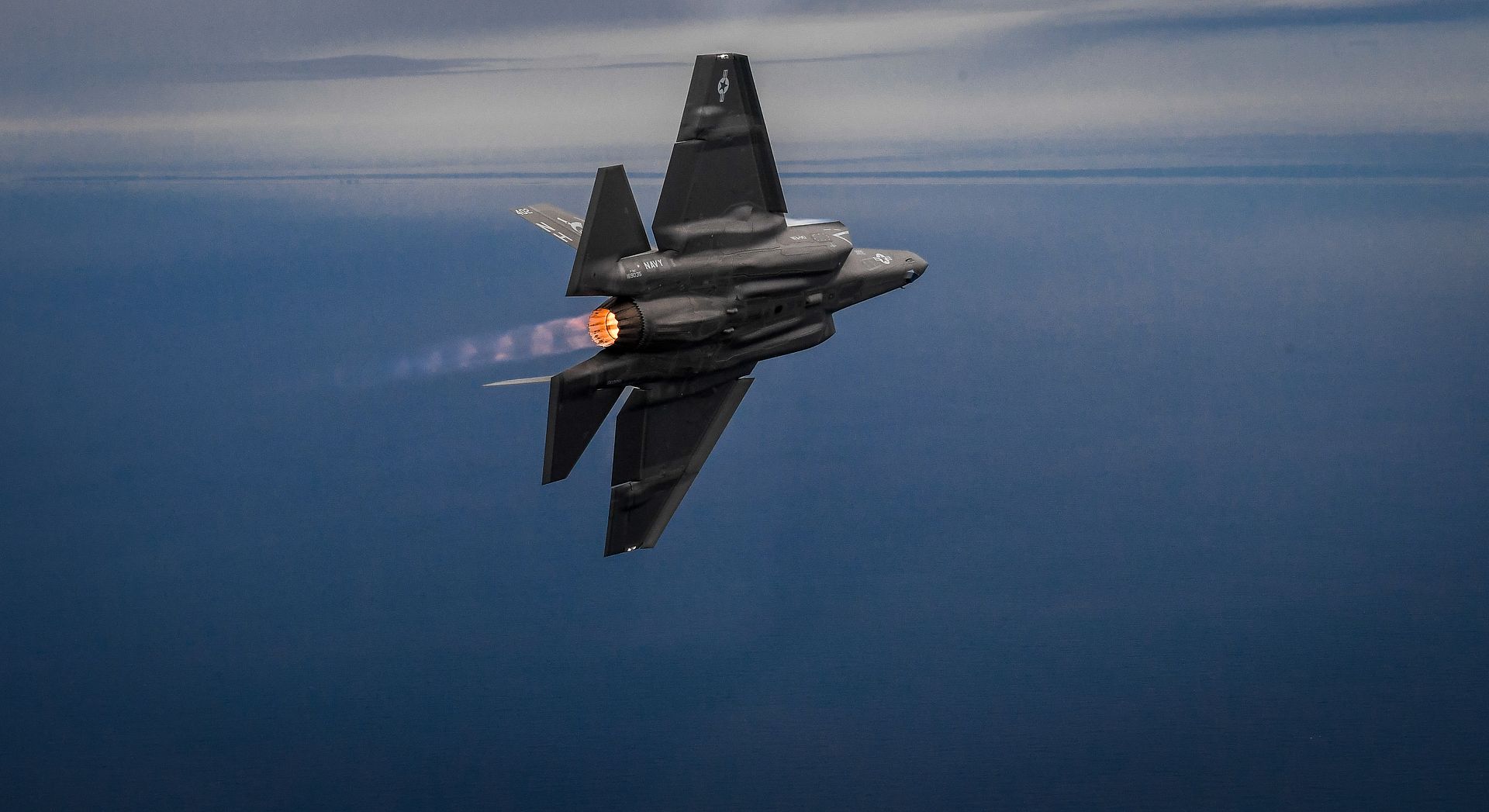
-
 Main AdminAn F-16 Fighting Falcon, assigned to the 180th Fighter Wing, Ohio Air National Guard, flies over the LC-39A SpaceX at the Kennedy Space Center during a deployment at Patrick Air Force Base, Feb. 4, 2019. As part of the Patrick AFB deployment, the 180FW will conduct Dissimilar Air Combat Training, Basic Fighter Maneuvers, Defensive Air Counter Tactics and Tactical Intercept missions alongside F-15 Eagles assigned to the 104th Fighter Wing, Barnes Air National Guard Base, Massachusetts. (Air National Guard photo by Senior Airman Hope Geiger)
Main AdminAn F-16 Fighting Falcon, assigned to the 180th Fighter Wing, Ohio Air National Guard, flies over the LC-39A SpaceX at the Kennedy Space Center during a deployment at Patrick Air Force Base, Feb. 4, 2019. As part of the Patrick AFB deployment, the 180FW will conduct Dissimilar Air Combat Training, Basic Fighter Maneuvers, Defensive Air Counter Tactics and Tactical Intercept missions alongside F-15 Eagles assigned to the 104th Fighter Wing, Barnes Air National Guard Base, Massachusetts. (Air National Guard photo by Senior Airman Hope Geiger)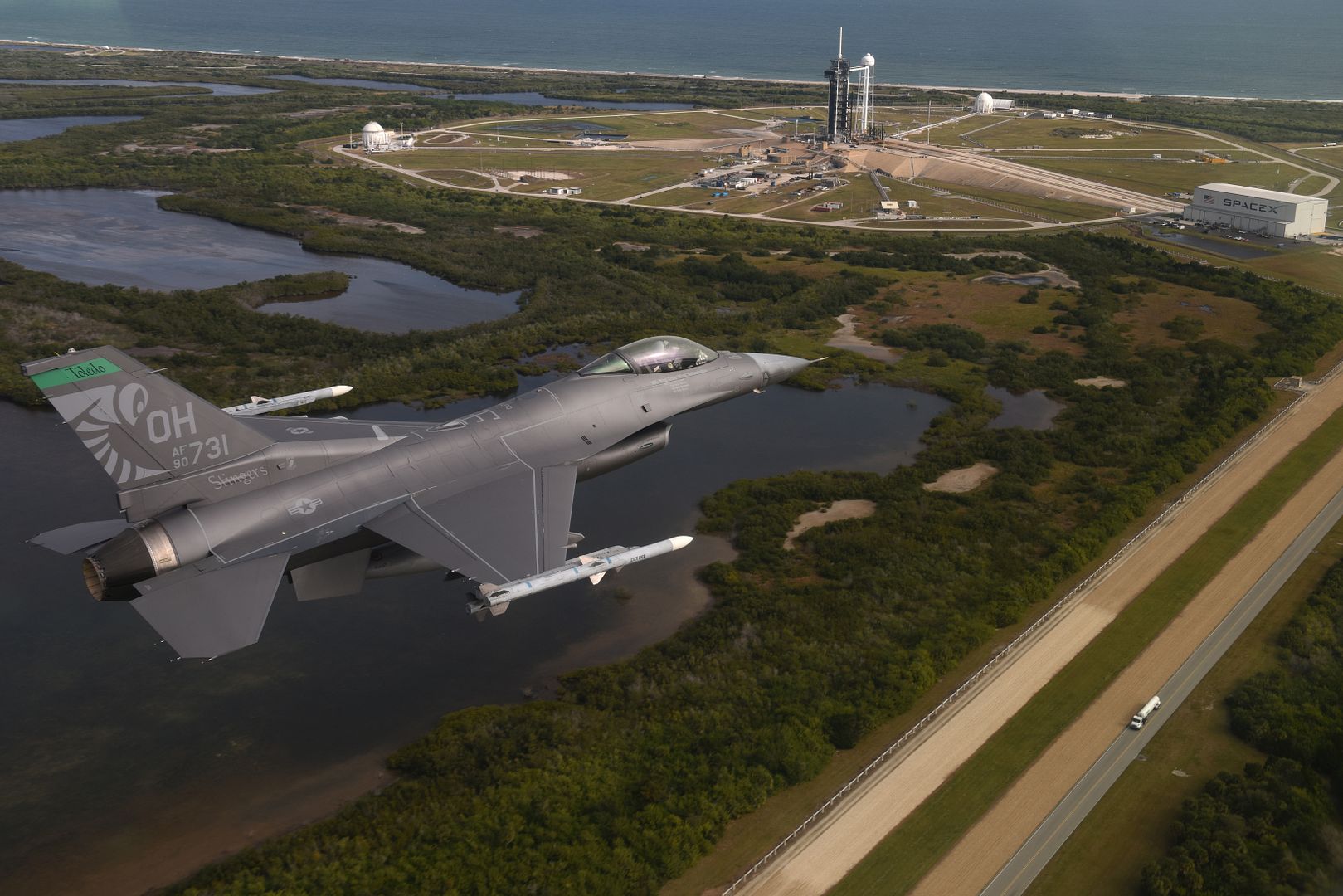
An F-16 Fighting Falcon flies over the coast of Florida during a training sortie during a deployment at Patrick Air Force Base, Feb. 4, 2019. As part of the Patrick AFB deployment, the 180FW will conduct Dissimilar Air Combat Training, Basic Fighter Maneuvers, Defensive Air Counter Tactics and Tactical Intercept missions alongside F-15 Eagles assigned to the 104th Fighter Wing, Barnes Air National Guard Base, Massachusetts. (Air National Guard photo's by Senior Airman Hope Geiger)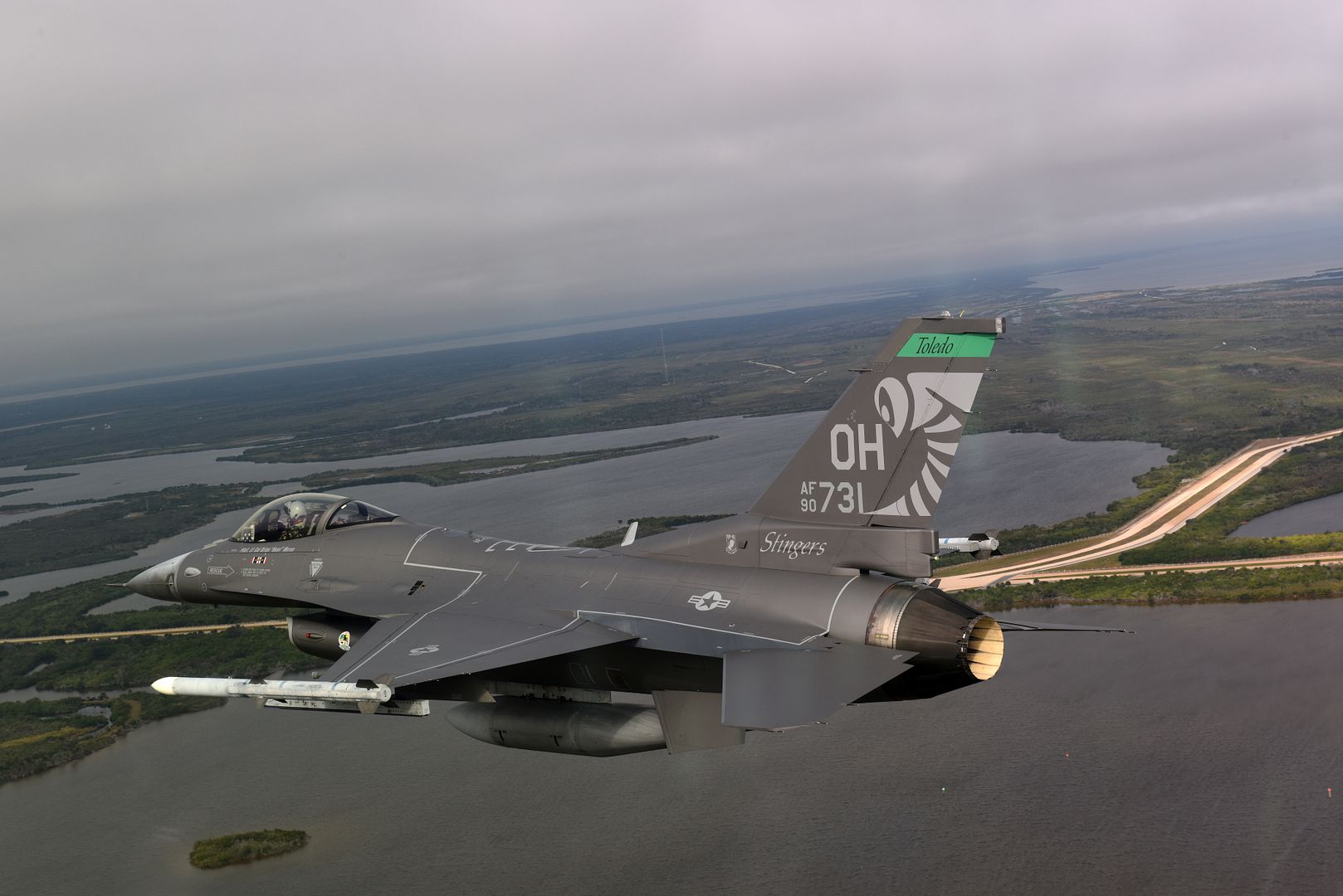


An F-35A Lightning II assigned to the 308th Fighter Squadron taxis down the flightline, Feb. 4, 2019 at Luke Air Force Base, Ariz. The F-35 is the first Dutch jet to be stationed at Luke as part of the partner program. (U.S. Air Force photo by Airman 1st Class Aspen Reid)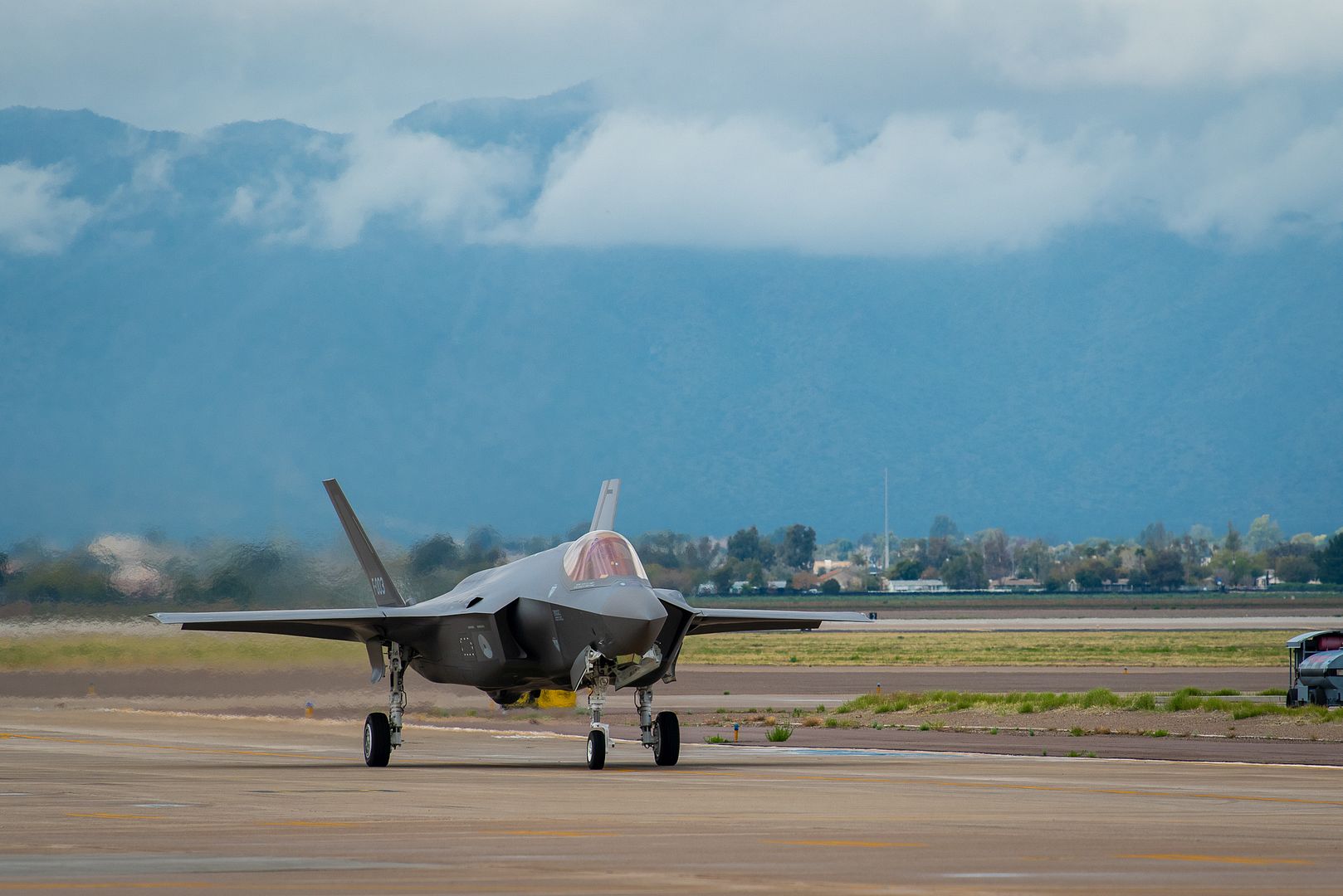
A Dutch F-35A Lightning II sits parked at the 308th Fighter Squadron, Feb. 4, 2019 at Luke Air Force Base, Ariz. The F-35 global partnership program consists of multiple countries around the world, six which are currently hosted at Luke. (U.S. Air Force photo by Airman 1st Class Aspen Reid)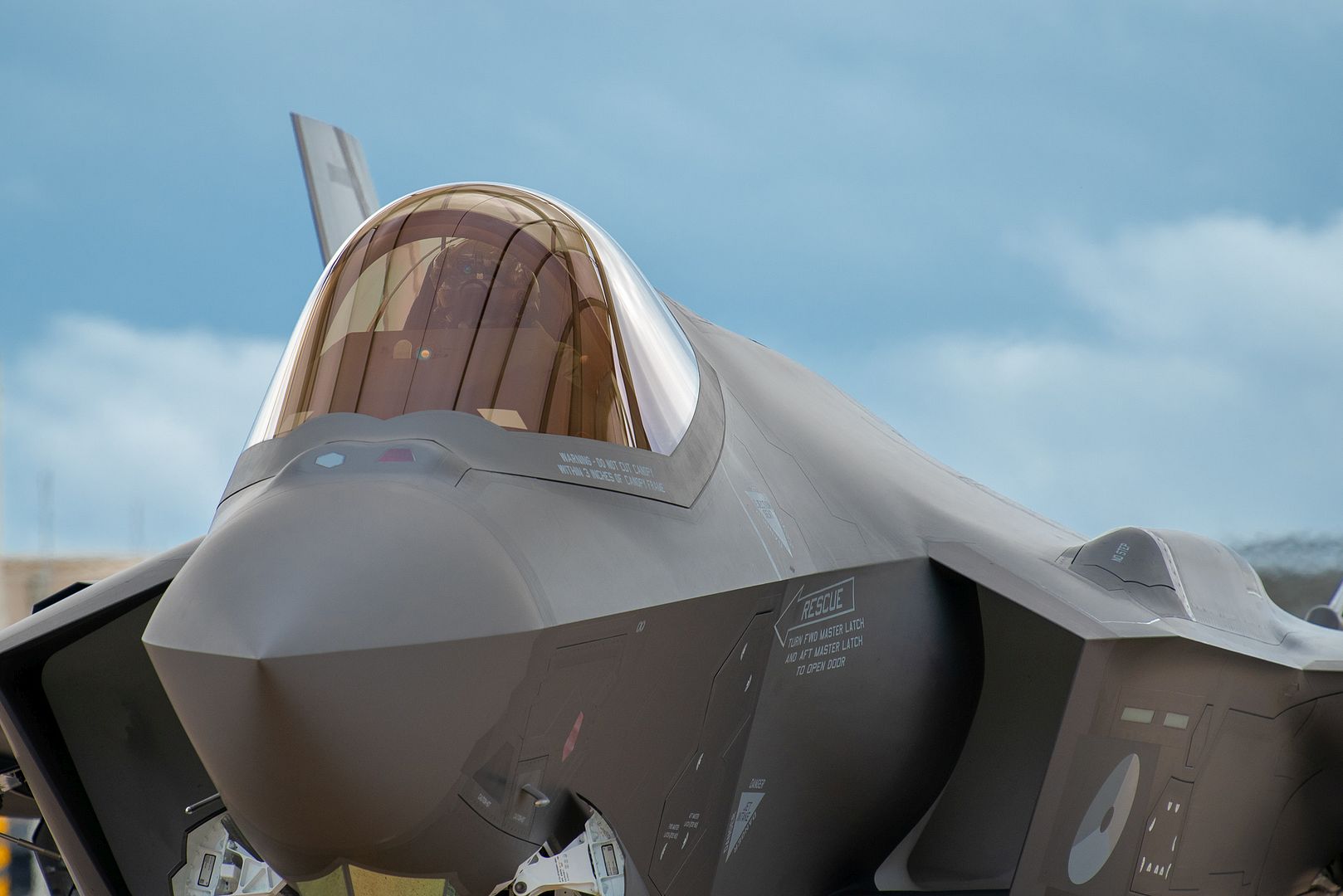
A C-17 Globemaster III pilot conducts a final pre-flight check before take-off, Jan. 31, 2019 at Luke Air Force Base, Ariz. The C-17 from the 62d Airlift Wing Joint Base Lewis-McChord, Washington transported the civic leaders giving them a glimpse into the strategic airlift mission of the Air Force. (U.S. Air Force photo by Airman 1st Class Aspen Reid)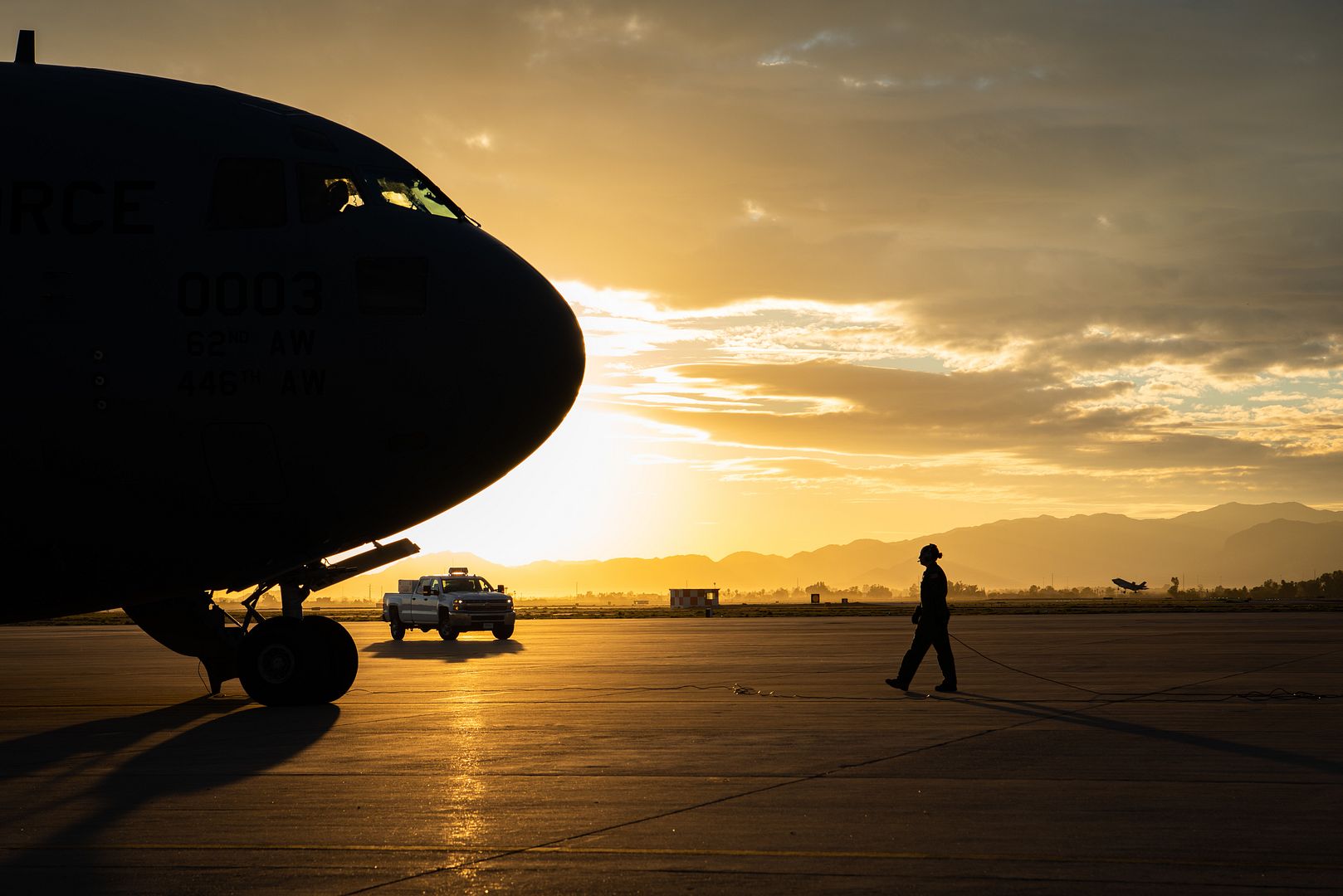
A C-17 Globemaster III takes off for Mountain Home Air Force Base, Idaho at dusk, Jan. 31, 2018 at Luke Air Force Base, Ariz. The C-17 has a wingspan of 169 feet and a length of 174 feet, making it one of the largest jets in the Air Force, with the primary function of troop and cargo transport. (U.S. Air Force photo by Airman 1st Class Aspen Reid)
EAST CHINA SEA (Feb. 4, 2019) An F-35B Lightning II aircraft assigned to the F-35B detachment of the "Flying Tigers" of Marine Medium Tiltrotor Squadron (VMM) 262 (Reinforced) takes off from the flight deck of the amphibious assault ship USS Wasp (LHD 1) during flight operations. Wasp, flagship of the Wasp Amphibious Ready Group, with embarked 31st Marine Expeditionary Unit, is operating in the Indo-Pacific region to enhance interoperability with partners and serve as a ready-response force for any type of contingency. (U.S. Navy photo by Mass Communication Specialist 2nd Class Sarah Myers/Released)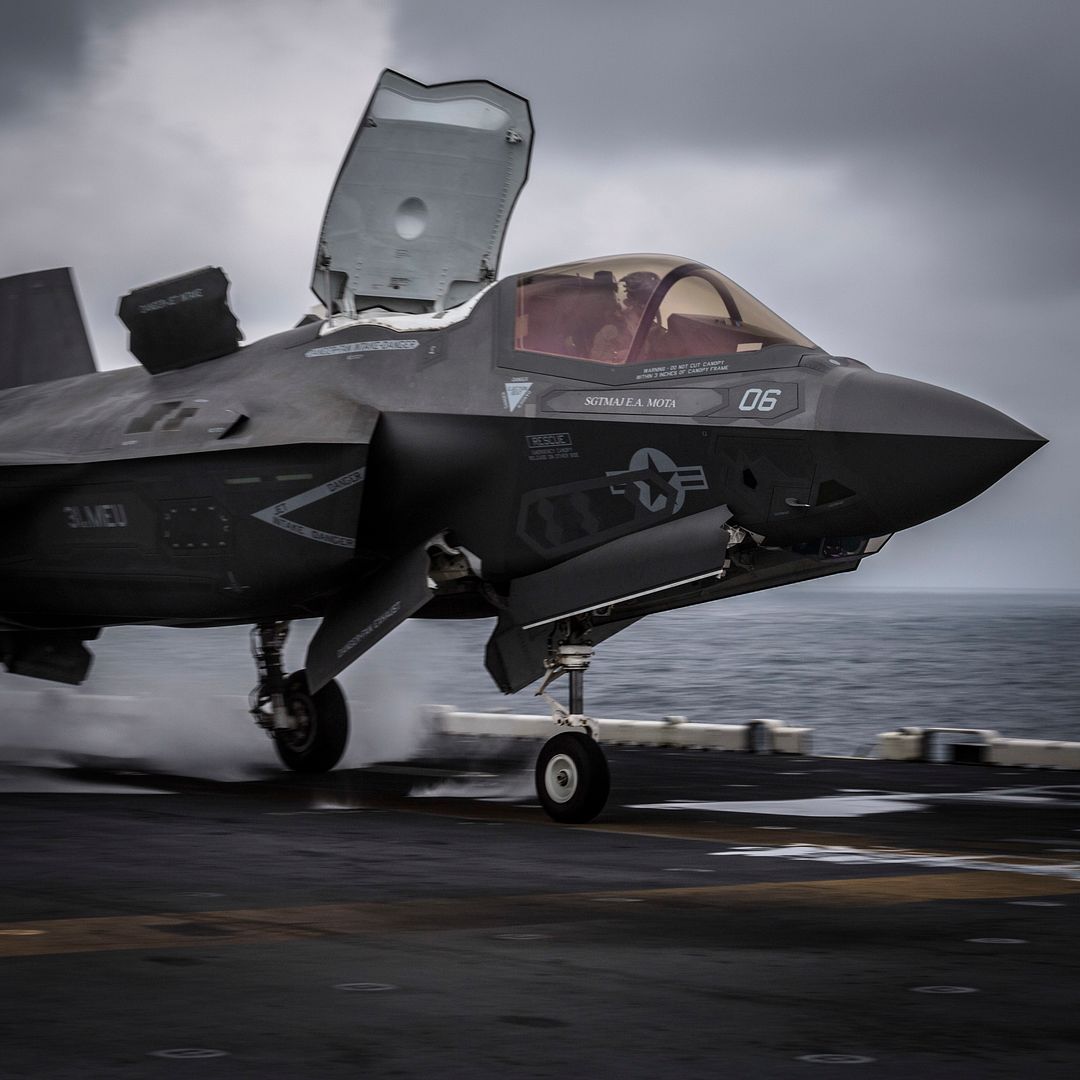
CHICAGO, Feb. 5, 2019 /PRNewswire/ -- Boeing [NYSE: BA] today announced a partnership with Aerion, a Reno, Nev.-based company pioneering next-generation supersonic aircraft. As part of the agreement, Boeing made a significant investment in Aerion to accelerate technology development and aircraft design, and unlock supersonic air travel for new markets. Terms of the deal were not disclosed.
Boeing will provide engineering, manufacturing and flight test resources, as well as strategic vertical content, to bring Aerion's AS2 supersonic business jet to market. The AS2 is designed to fly at speeds up to Mach 1.4 or approximately 1,000 miles per hour. With the ability to fly up to 70 percent faster than today's business jets, the AS2 will save approximately three hours on a transatlantic flight while meeting environmental performance requirements. The aircraft is slated for first flight in 2023.
"Boeing is leading a mobility transformation that will safely and efficiently connect the world faster than ever before," said Steve Nordlund, vice president and general manager of Boeing NeXt. "This is a strategic and disciplined leading-edge investment in further maturing supersonic technology. Through this partnership that combines Aerion's supersonic expertise with Boeing's global industrial scale and commercial aviation experience, we have the right team to build the future of sustainable supersonic flight."
Founded in 2003 to develop new, more efficient aerodynamic technologies for supersonic aircraft, Aerion introduced its AS2 12-passenger business jet design in 2014. The company unveiled the AS2's GE Affinity engine design in 2018.
"Aerion is the industry leader mapping out a successful, sustainable return to supersonic flight," said Tom Vice, chairman, president and chief executive officer of Aerion. "The AS2 is the launch point for the future of regulatory-compliant and efficient supersonic flight. Together with Boeing, we're creating a faster, more connected future with tremendous possibilities for enhancing humanity's productivity and potential."
Boeing NeXt works with industry partners and regulatory agencies to lead the responsible introduction of a new mobility ecosystem. The division's portfolio includes prototyping activities and programs that will shape the future of urban, regional and global mobility. These programs include autonomous air vehicles and passenger-carrying hypersonic aircraft.
Boeing is the world's largest aerospace company, the leading manufacturer of commercial airplanes and defense, space and security systems, and a major provider of government and commercial aerospace services. America's top manufacturing exporter, Boeing supports airlines and U.S. and allied government customers in more than 150 countries.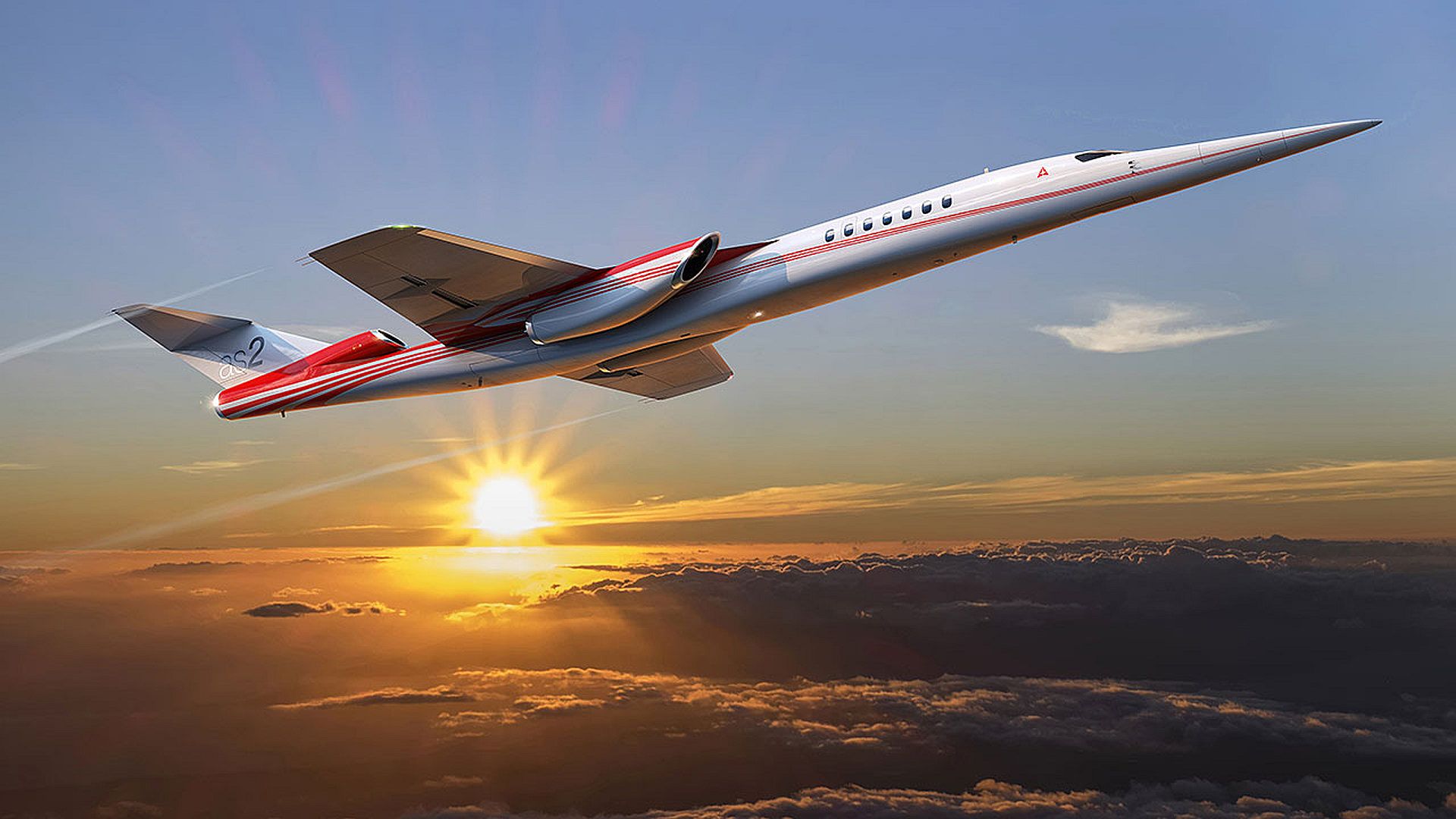
Date: 05 Feb 2019
After almost 40 years serving the UK on military operations across the world, iconic RAF Tornado jets have returned home for the last time.
First entering service in 1979, the fast jets have been used in operations across the world, most recently bombarding Daesh to push the terrorist group back through Syria and Iraq.
Families and friends of the present-day squadron members were on hand to welcome them back to RAF Marham, Norfolk, today.
The weapons capabilities of the soon-to-retire Tornados are now being delivered by RAF Typhoon jets, which will continue to take a leading role in the Coalition?s mission against Daesh. Under ?Project Centurion?, worth ?425million over the past three years, the Typhoon can now also launch the world-leading Meteor air-to-air missile, the Stormshadow deep strike cruise missile and the precision attack missile Brimstone.
These improved RAF Typhoon jets will form the backbone of the UK?s combat air fleet, alongside the recently introduced new fleet of F-35 Lighting jets over the coming years.
The Tornado will be officially retired from service at the end of March and will only be used for training purposes over the UK in the intervening period.
Originally named the Tornado GR1 the aircraft?s first use in live operations was during the Gulf War in 1991, when 60 Tornado GR1s were deployed from bases in Saudi Arabia and Bahrain. Later they were upgraded to the GR4 model, which has been used ever since over the skies of Kosovo, Afghanistan, Iraq and Syria.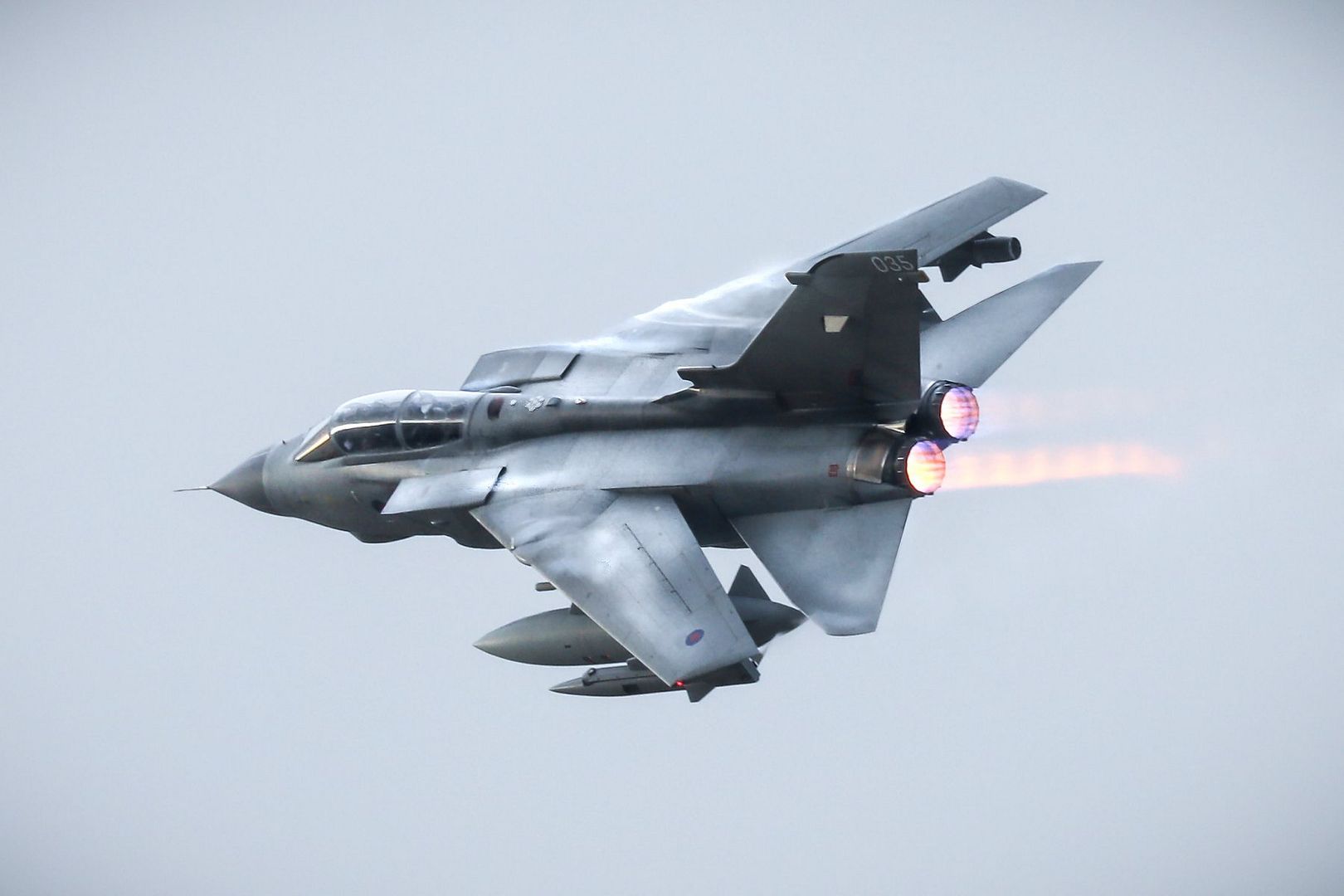
Chief of the Air Staff, Air Chief Marshal Sir Stephen Hillier said:
?My sincerest congratulations to the Tornado Force, returning home after more than 4 years of continuous commitment to defeating Daesh in Iraq and Syria - an exceptional effort from everyone, well done and thank you.
?As a Tornado GR4 pilot myself, I have seen the aircraft develop over its nearly 40 years of service into an outstanding combat aircraft, flown, maintained and supported by similarly outstanding air and ground crew. The Tornado Force has been continuously deployed on operations since 1990, serving with immense distinction in Iraq, Syria, Afghanistan, Libya and the Balkans.
?I will personally be very sad to see the Tornado retire, but it is time now to pass the baton to our next generation combat aircraft. The F-35B Lightning is now operational and the Typhoon is now fully multi-role capable and able to take on the Tornado?s missions.
?We can all take immense pride in what the Tornado has achieved in defence of the nation over nearly four decades, and reflect back on the courage, commitment and achievements of everyone who has contributed to the success of this extraordinary aircraft.?
The RAF has already trialled its Typhoon and F-35 Forces? abilities to work together. In a series of operational trials, the evidence gathered has confirmed the potency of the combination and demonstrated the effectiveness of both platforms when operating alongside one another.
With its larger payload and increased agility and range, the Typhoon will operate in concert with the stealthy F-35 and its next-generation sensors, making the RAF one of the few air forces with the ability to exploit the synergy of 4th and 5th generation combat aircraft and delivering the UK a potent force equipped to counter evolving threats in the global environment.
The UK is a world-leader in the combat air sector, which supports over 18,000 highly skilled jobs with a mix of skills and technologies unique in Europe. The sector delivers a turnover in excess of ?6bn a year and has made up over 80% of defence exports from the UK over the last ten years.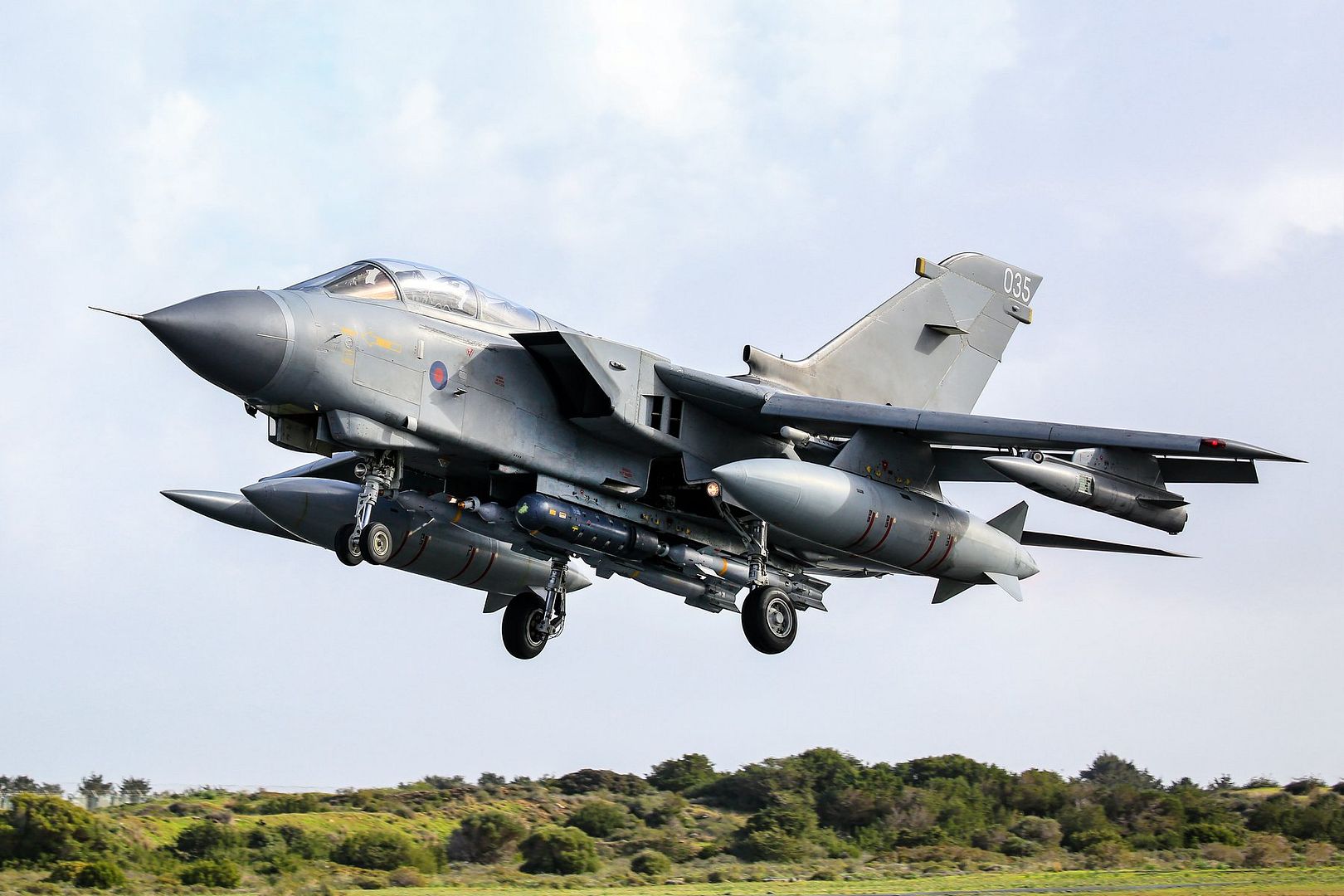
Week two of Exercise Red Flag is well underway at Nellis Air Force Base, Nevada.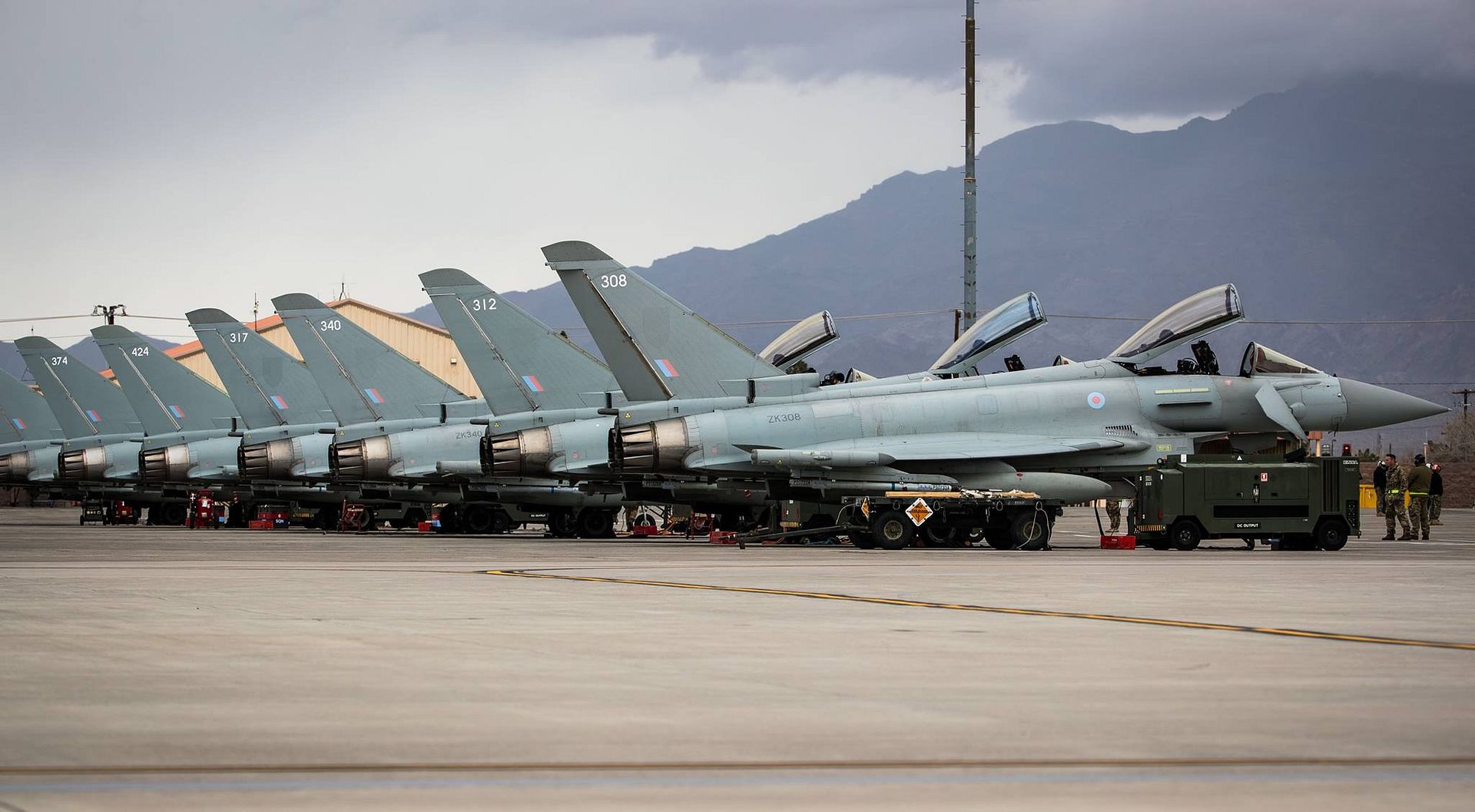
Conducted on the vast bombing and gunnery ranges of the Nevada Test and Training Range, the hugely complex air exercise involves US Armed Forces, the RAF and the Royal Australian Air Force.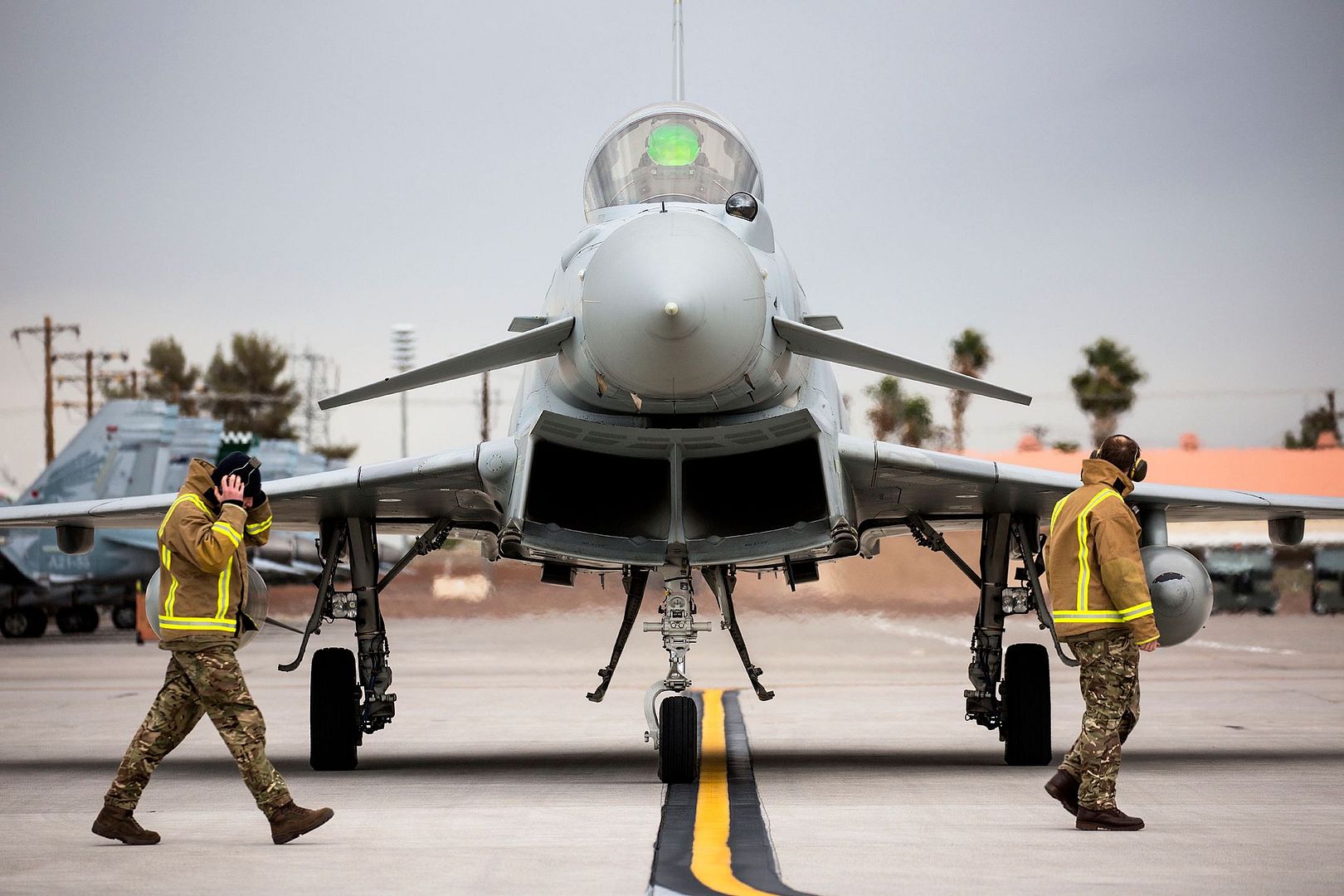
RAF Typhoon aircraft from 6 Squadron are taking part in the exercise. Here is one taking off with the Las Vegas Motor Speedway in the background.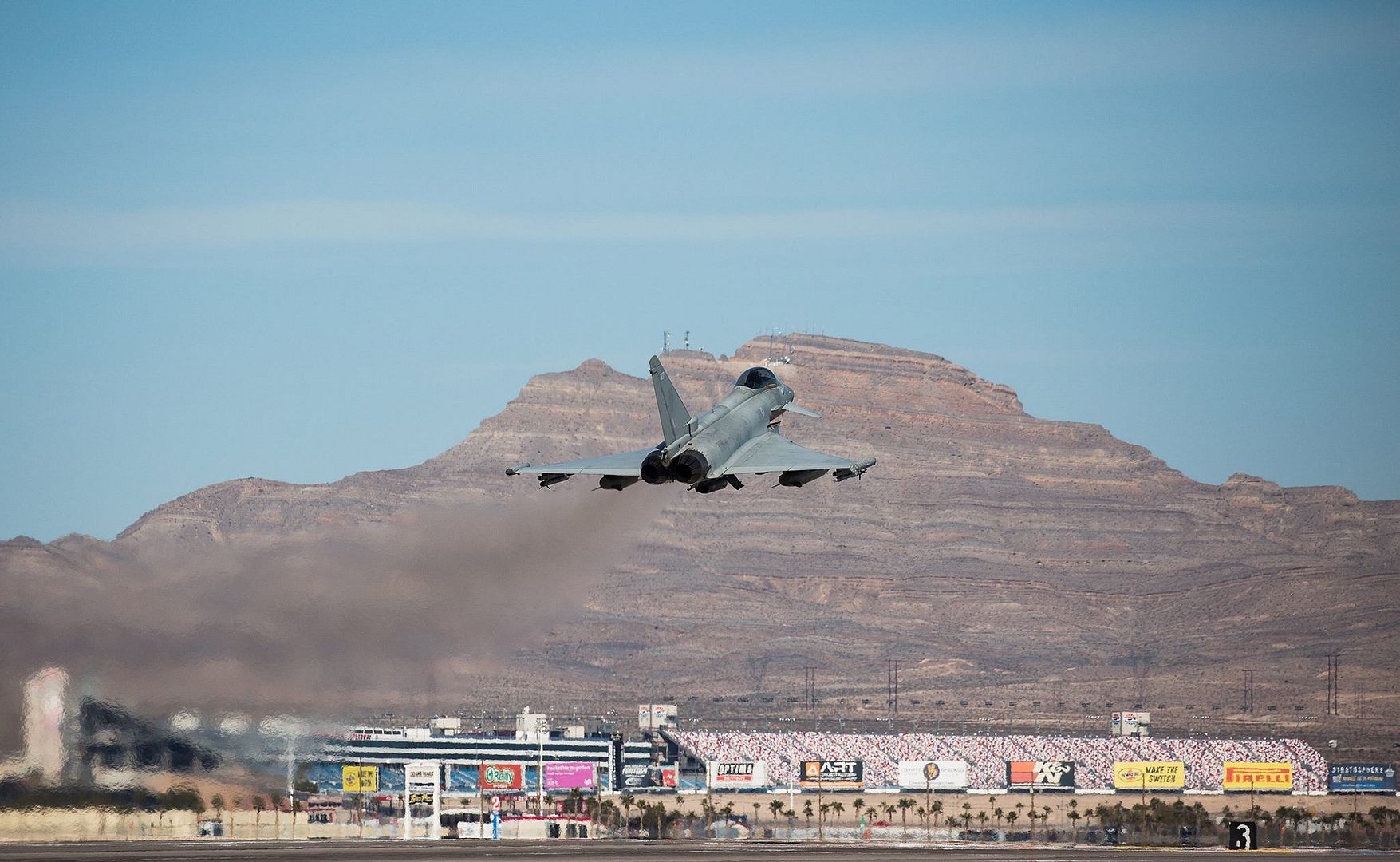
Pictured here is an 8 Squadron E-3D Sentry airborne early warning and command and control aircraft from RAF Waddington set against the iconic backdrop of the Las Vegas skyline.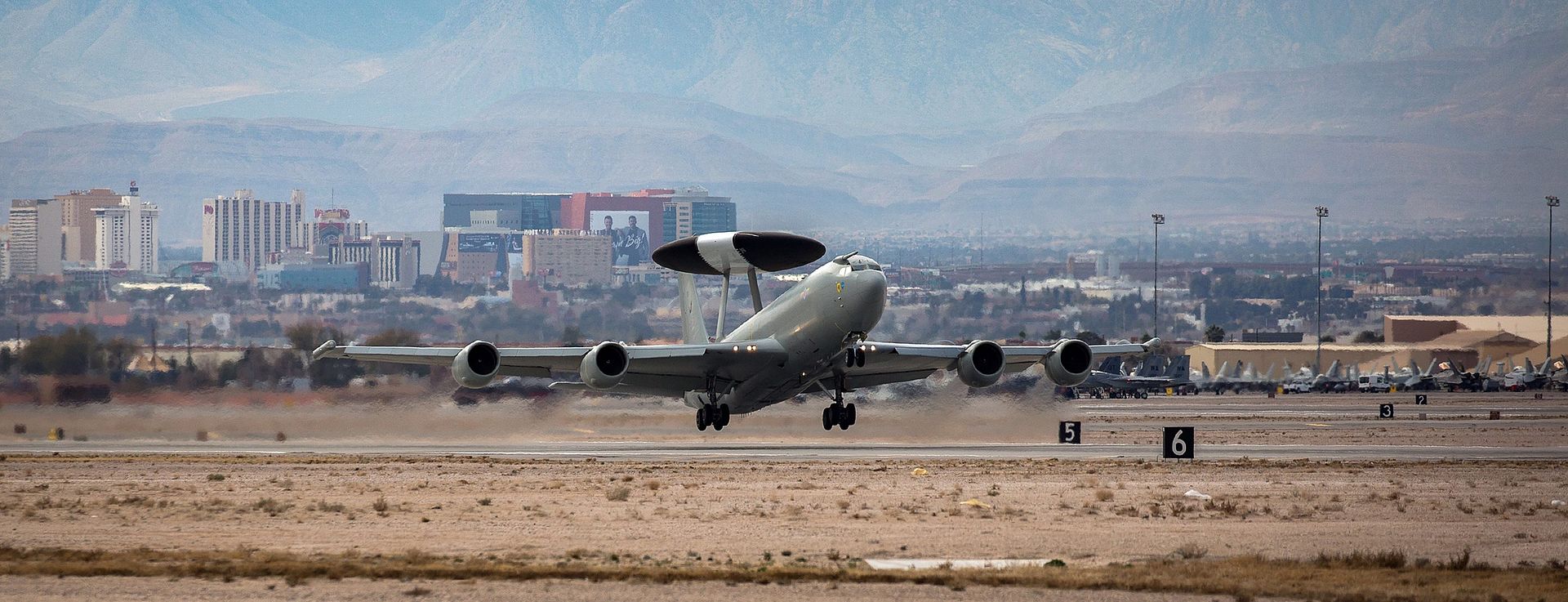
-
 Main AdminA B-52H Stratofortress warms up on the flightline at Minot Air Force Base, North Dakota, Feb. 5, 2019. Despite freezing temperatures, the B-52H is mission capable and ready to fly. (U.S. Air Force photo by Senior Airmen Dillon J. Audit)
Main AdminA B-52H Stratofortress warms up on the flightline at Minot Air Force Base, North Dakota, Feb. 5, 2019. Despite freezing temperatures, the B-52H is mission capable and ready to fly. (U.S. Air Force photo by Senior Airmen Dillon J. Audit)
An aircrew assigned to the 492nd Fighter Squadron conducts a preflight inspection of the heritage F-15E Strike Eagle at Royal Air Force Lakenheath, England Feb 6. The 48th Fighter Wing officially unveiled the aircraft publicly during a ceremony on Jan 31. (U.S. Air Force photo/Tech. Sgt. Matthew Plew)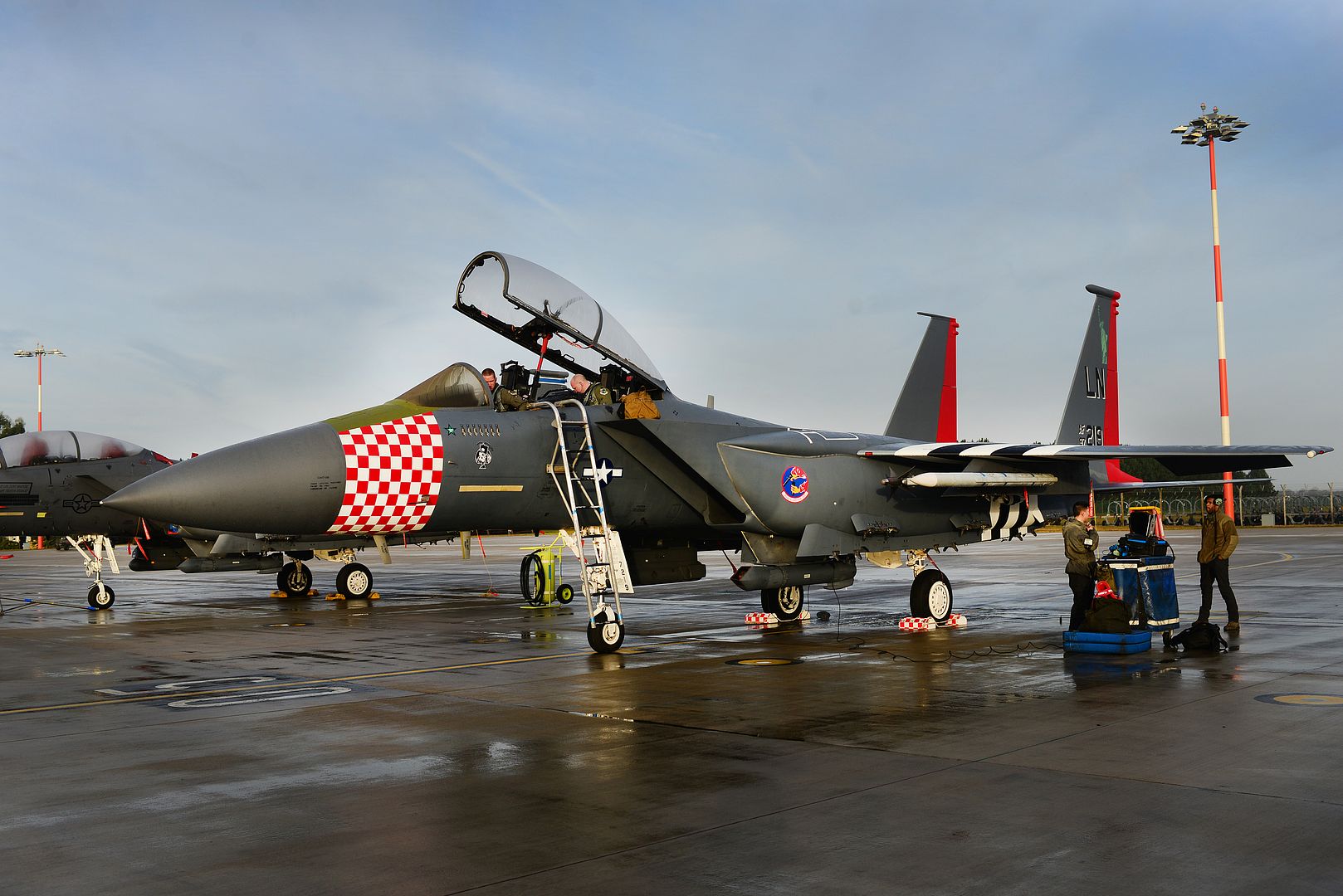
An F-15E Strike Eagle painted in the heritage colors of it's P-47 Thunderbolt predecessor takes off from Royal Air Force Lakenheath, England Feb 6. The 48th Fighter Wing officially unveiled the aircraft publicly during a ceremony on Jan 31. (U.S. Air Force photo/Tech. Sgt. Matthew Plew)
An F-15E Strike Eagle painted in the heritage colors of it's P-47 Thunderbolt predecessor takes off from Royal Air Force Lakenheath, England Feb 6. The 48th Fighter Wing officially unveiled the aircraft publicly during a ceremony on Jan 31. (U.S. Air Force photo/Tech. Sgt. Matthew Plew)
An F-15E Strike Eagle assigned to the 492nd Fighter Squadron takes its first flight since being painted in heritage colors, at Royal Air Force Lakenheath, England, Feb 6. The aircraft is painted in the colors of a World War II P-47 Thunderbolt. (U.S. Air Force photo's by Airman 1st Class Shanice Williams-Jones)

A U.S. Air Force F-16 Fighting Falcon, assigned to the 35th Fighter Squadron, Republic of Korea, taxis after landing for Exercise Cobra Gold 2019 at Korat Royal Thai Air Force Base, Thailand, Feb. 6, 2019. Cobra Gold is the largest Theater Security Cooperation exercise in the Indo-Asia-Pacific region and is an integral part of the U.S. commitment to strengthen engagement in the region. (U.S. Air Force photo by Senior Airman Savannah L. Waters)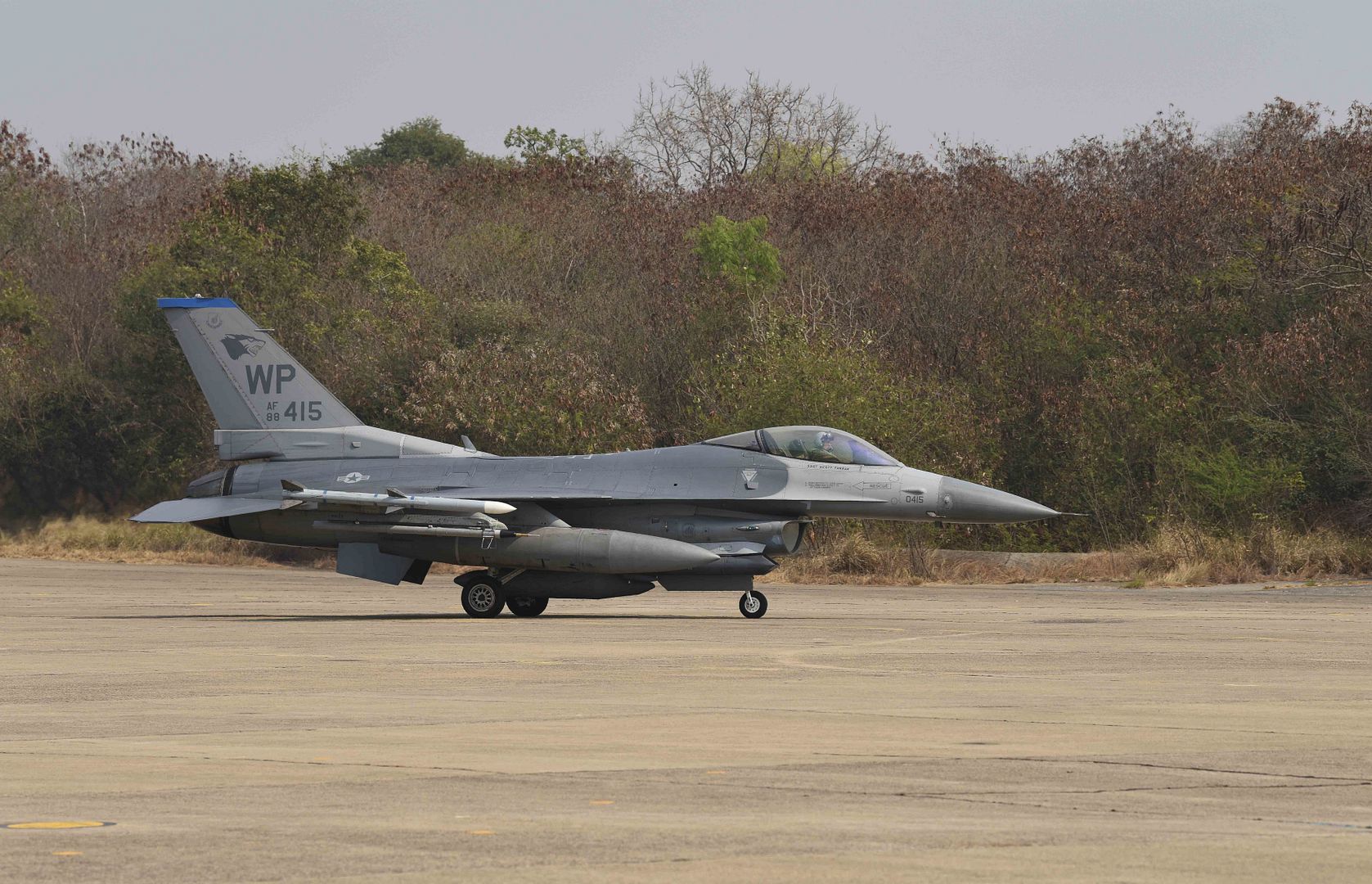
An MH-60R Sea Hawk, assigned to Helicopter Maritime Strike Squadron (HSM) 71, takes off from the flight deck of the aircraft carrier USS John C. Stennis (CVN 74) in the Pacific Ocean, Feb. 5, 2019. The John C. Stennis is deployed to the U.S. 7th Fleet area of operations in support of security and stability in the Indo-Pacific region. (U.S. Navy photo by Mass Communication Specialist 3rd Class Skyler Okerman)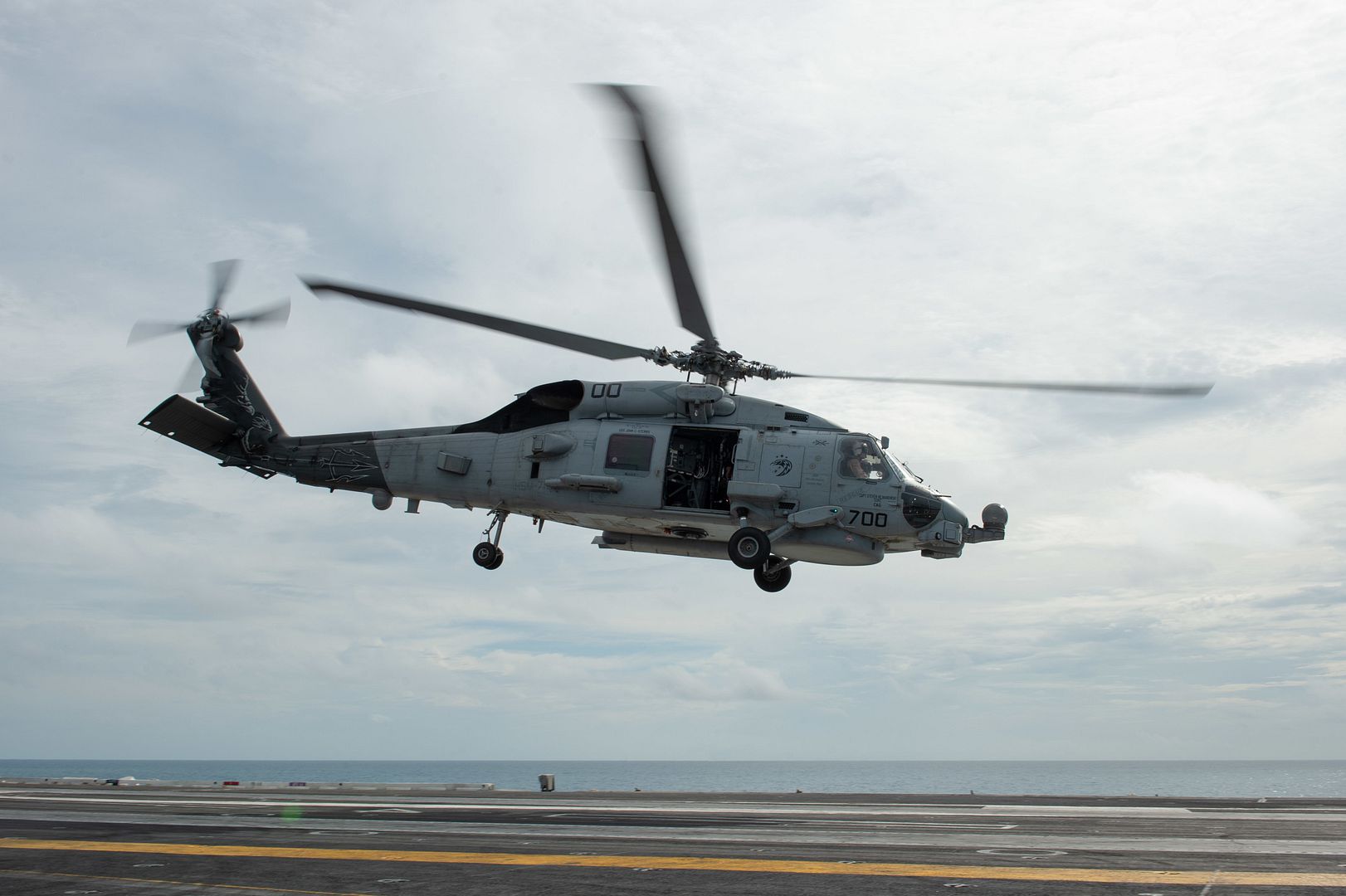
S?o Paulo, Brazil, February 6th, 2019 ? Embraer Defense & Security and its partner Sierra Nevada Corporation (SNC) were awarded a contract to deliver 12 A-29 Super Tucano light attack aircraft to the Nigerian Air Force.
?SNC is proud to work with our partner, Embraer Defense & Security, to build A-29s in support of the Nigerian Air Force in addressing their on-going training and security needs,? said Taco Gilbert, Senior Vice President of ISR, Aviation and Security (IAS) at SNC. ?The combat-proven A-29 is designed and built for the mission in Nigeria. It?s the most reliable and cost-effective solution for basic and advanced flight and combat training, close air support operations, ISR (Intelligence, Surveillance, and Reconnaissance), counterinsurgency and irregular warfare scenarios.?
?The A-29 Super Tucano has become the global reference for light attack and advanced training with a proven track record in several combat zones around the world?, said Jackson Schneider, President and CEO of Embraer Defense & Security. ?Embraer welcomes Nigeria as the latest member of this true international coalition that is helping bring peace to the world.? The A-29 is conducting combat missions on a daily basis in theaters around the world. It has more than 46,000 combat hours and more than 360,000 total flight hours. With the Nigeria order, the A-29 is the choice of 14 air forces worldwide.
In addition to its combat record, the A-29?s robust landing gear and enhanced clearance enable take-off and landing in even the most austere field conditions. The aircraft also offers exceptional dependability and accuracy in weapons delivery, making it highly effective in the light attack role.
The contract for the Nigerian Air Force includes ground training devices, mission planning systems, mission debrief systems, spares, ground support equipment, alternate mission equipment, contiguous U.S. interim contractor support, outside of continental U.S. (OCONUS) contractor logistic support and field service representatives for OCONUS support.
The aircraft will be produced in Jacksonville, Florida, and modified in Centennial, Colorado. The aircraft are expected to be delivered to Nigeria in line with the contract timelines, as part of a larger more comprehensive training and support package.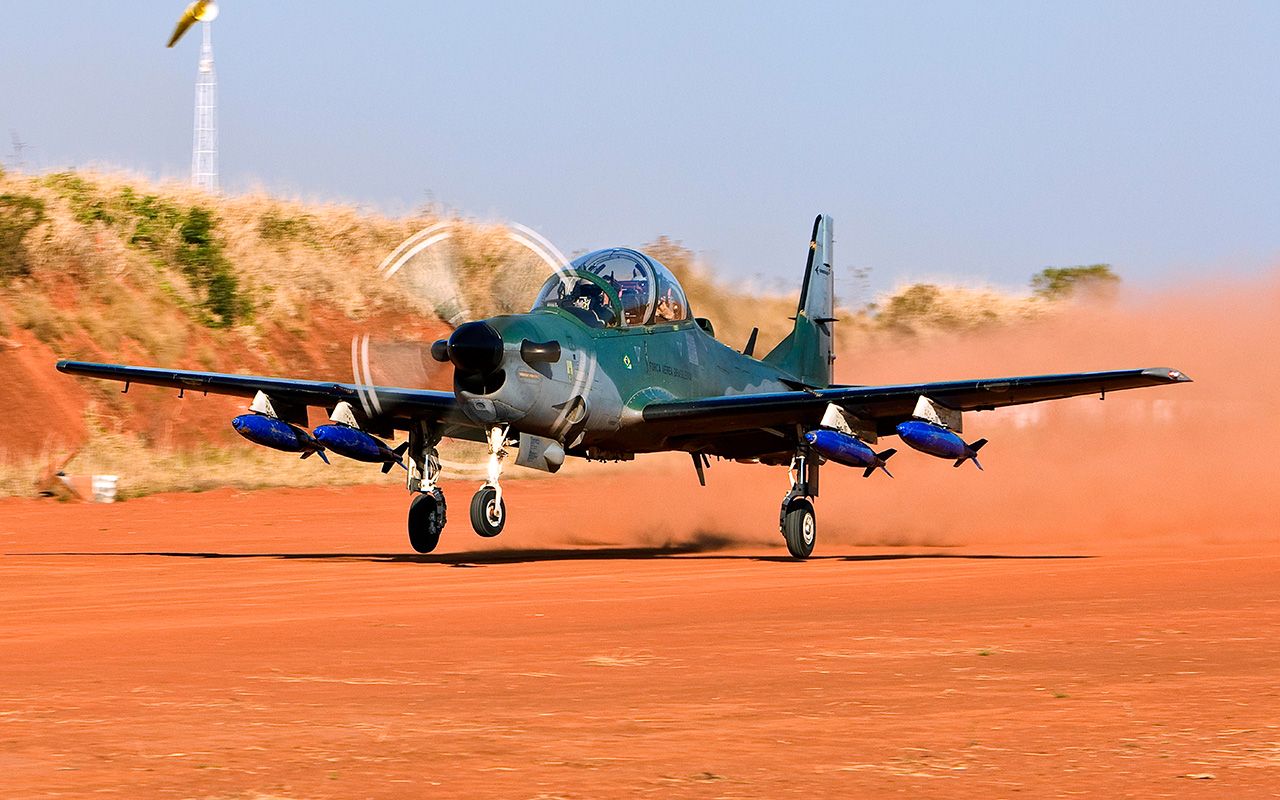
February 6, 2019 Montr?al Commercial Aircraft, Press Release
Bombardier Commercial Aircraft announced today that a subsidiary of Chorus Aviation Inc. (?Chorus Aviation?) has finalized a firm purchase agreement for nine CRJ900 aircraft. These aircraft will be operated by Jazz Aviation LP, a subsidiary of Chorus Aviation, under the Air Canada Express banner, making them the first Canadian operator of the new ATMOSPH?RE cabin for CRJ Series regional jets.
Based on the list price of the CRJ900 aircraft, the order is valued at approximately $437 million U.S.
?We are delighted that Chorus and Jazz have chosen Bombardier products for the growth and renewal of their fleet. It reaffirms their confidence in the value that the CRJ Series provides to airlines, said Fred Cromer, President, Bombardier Commercial Aircraft. The CRJ900 aircraft is ideally suited to growing markets and is recognized for its superior performance, economics and passenger comfort.?
?The addition of these new CRJ900 aircraft is part of the ongoing modernization of our Jazz fleet,? said Joseph Randell, President and Chief Executive Officer, Chorus. ?These aircraft provide unit operating costs that are amongst the lowest of any regional aircraft, allowing us to more effectively compete while addressing changing market demand.?
Jazz, under the Air Canada Express brand, will operate the CRJ900 in a dual-class cabin configuration with 76 seats. The airline intends to take delivery of their first aircraft with the latest enhancement to the CRJ Series regional jets ? the ATMOSPH?RE cabin in the first half of 2020.
About the ATMOSPH?RE Cabin
The new ATMOSPH?RE cabin sets new standards of passenger experience in the regional jet market segment. Key features of the new interior are comprised of larger passenger living space, wheel-first roller bag capability, more spacious lavatory, increased cabin connectivity options, all integrated in a contemporary design and material choices. In fact, the ATMOSPH?RE cabin design allows passengers to carry and store an ?oversized? roller bag within the aircraft cabin bins which minimizes the need to check bags at the counter or the gate. To learn more: DiscoverAtmosphere.com
About CRJ Series Aircraft
Every 5 seconds, a CRJ Series regional jet takes off or lands somewhere in the world. The CRJ Series family of aircraft has trans?ported more than 2 billion passengers to become the world?s most successful regional jet program ? linking people and communities like no other. The CRJ Series regional jets have revolutionized aviation with their proven efficiency, reliability and profitability.
The CRJ Series regional jets share commonality benefits that provide flexibility to operators and allow them to optimize their fleets to meet specific market demands. No other regional aircraft deliver this capability. Optimized for medium-haul regional routes, these aircraft can provide up to 10 per cent cash operating cost advantage over competing jets.
Since its launch, the CRJ Series family of regional jets has stimulated the regional jet market. In North America alone, it accounts for over 18 per cent of all jet departures. Globally, the family operates 194,800 flights per month.
About Chorus
Headquartered in Halifax, Nova Scotia, Chorus Aviation Inc. (?Chorus?) was incorporated on September 27, 2010. Chorus' vision is to deliver regional aviation to the world. Chorus has been leasing its owned regional aircraft into Jazz's Air Canada Express operation since 2011 and has established Chorus Aviation Capital Corp. to become a leading, global provider of regional aircraft leases. Chorus also owns Jazz Aviation LP and Voyageur Aviation Corp. ? companies that have long histories of safe and solid operations that deliver excellent customer service in the areas of contract flying operations, engineering, fleet management, and maintenance, repair and overhaul. Together, the Chorus group of companies can provide a full suite of regional aviation support services. Chorus Class A Variable Voting Shares and Class B Voting Shares trade on the TSX under the trading symbol 'CHR'.
For more information, visit www.chorusaviation.ca
About Jazz
Jazz Aviation LP (?Jazz?) has a strong history in Canadian aviation with its roots going back to the 1930s. As the largest regional carrier in Canada, Jazz has a proven track record of industry leadership and exceptional customer service and has leveraged that strength to deliver value to all its stakeholders. Jazz operates more flights and flies to more Canadian destinations than any other airline, and has a workforce of approximately 4,600 professionals, highly experienced in the challenging and complex nature of regional operations.
Under a capacity purchase agreement with Air Canada, using the Air Canada Express brand, Jazz provides service to a variety of markets throughout North America.
For more information, visit www.flyjazz.ca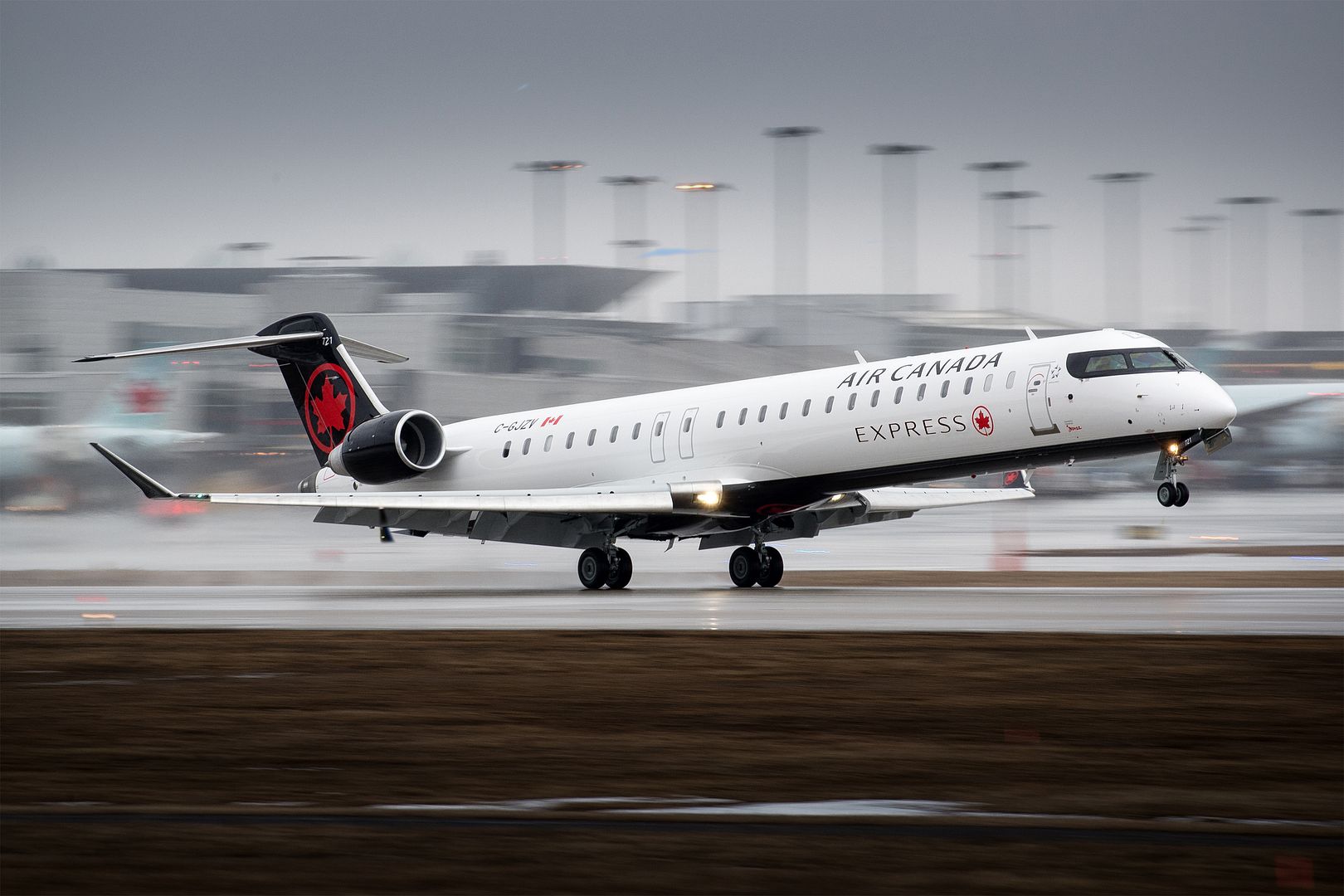
Merignac ? 6 February 2019 ? Today a ceremony hosted by Eric Trappier, Dassault Aviation Chairman and Chief Executive Officer, was held in Merignac facility for the delivery of the first Rafale to the Qatari Emiri Air Force, under the patronage of His Excellency Dr Khalid bin Mohamed Al Attiyah, Qatari Deputy Prime Minister and Minister of State for Defense Affairs, and Genevi?ve Darrieussecq, French State Secretary to the Minister of Armed Forces, and in the presence of Qatar Emiri Air Force Commander, Major General Mubarak Al Khayareen.
The first Rafale delivery, on schedule, comes after the signature in May 2015 of the contract for the acquisition by the State of Qatar of 24 Rafale to equip its Air Force, and an additional 12, in December 2017, for a total of 36 aircraft to fly under the Qatari colors.
In the frame of this contract, a large group of Qatari pilots as well as technicians are being trained in France both by the French Air Force and the French Industry.
The very high level of the guests attending that ceremony reflects the importance of the historic and strategic partnership between Qatar, France and Dassault Aviation, and the Rafale, following on from the Mirage F1, the Alpha Jet and the Mirage 2000, will carry out the tradition and will contribute to secure the sovereignty of the state of Qatar.
?For the fourth time in our long and trustful partnership with Qatar, a Dassault Aviation aircraft will serve proudly in the Qatari Emiri Air Force. This first delivery is the culmination of a relationship started more than 40 years ago and I am very pleased and grateful that once again the State of Qatar, has renewed its confidence in our dedication and confirmed not once, but twice, the choice of the Rafale to protect its land and people?, declared Eric Trappier, Chairman and CEO of Dassault Aviation.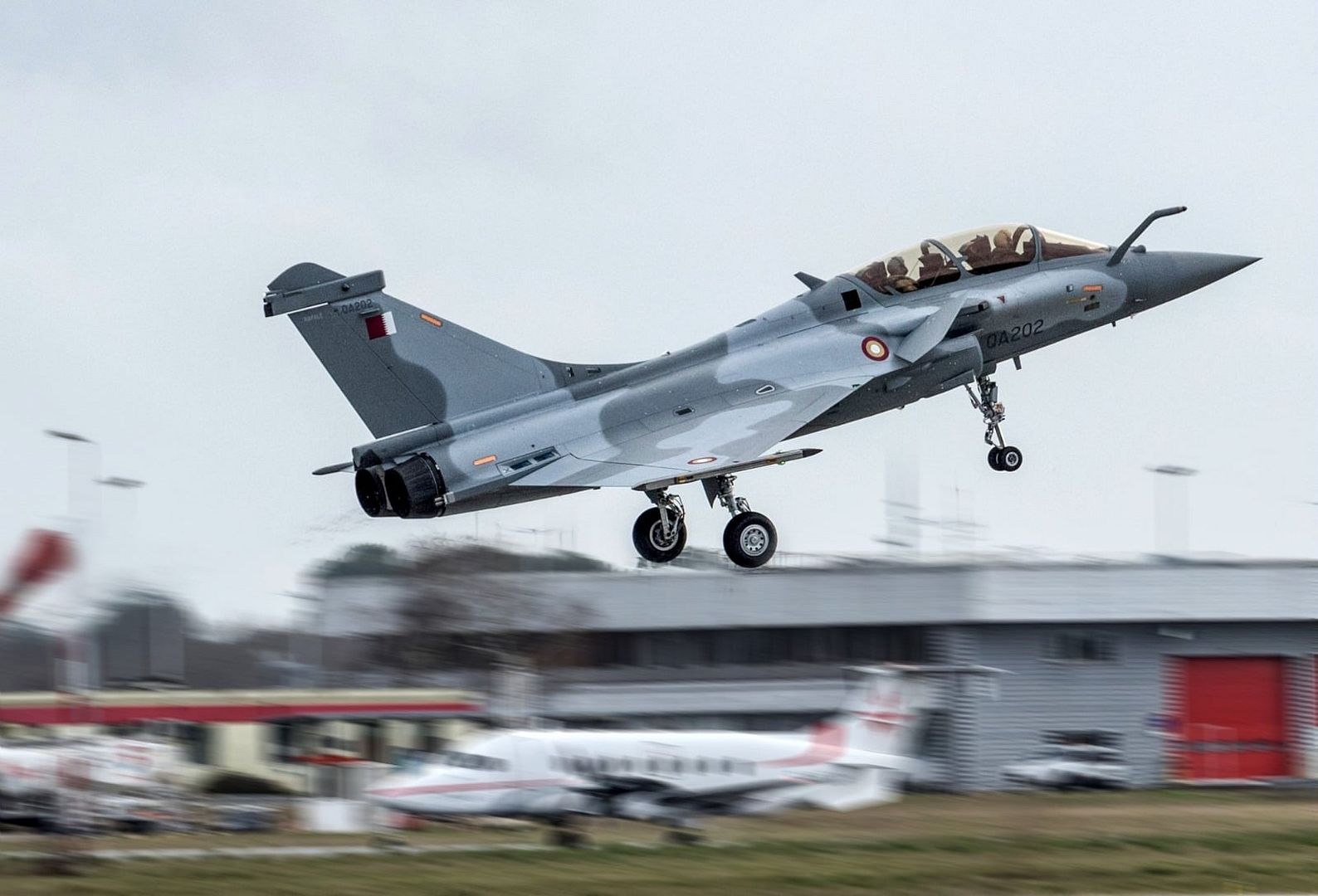
News Article / February 6, 2019
Her Majesty?s Canadian Ship (HMCS) Regina, accompanied by Naval Replenishment Unit Asterix and a CH-148 Cyclone helicopter, departed its homeport of Esquimalt today for a deployment to the Asia-Pacific and Middle East regions.
This is the third deployment for the Royal Canadian Air Force?s Cyclone helicopter fleet and its first with the Pacific Fleet. The first operationally-deployed Cyclone recently returned to Canada after participating in Operation Reassurance. HMCS Toronto, with an embarked Cyclone, replaced HMCS Ville de Quebec.
The ships will initially support Operation Projection, working with partner navies and conducting key leader engagements to enhance military cooperation and partnerships in support of Canada?s diplomatic efforts in the Asia-Pacific region.
In March 2019, the ships will transition to Operations Artemis, supporting the Canadian-led Combined Task Force 150 (CTF 150). CTF 150 is part of the Combined Maritime Force, which is a naval coalition of 33 partner nations that promotes security and stability in international waters of the Middle East regions. CTF 150 works to deter and deny terrorist organizations from using the high seas for smuggling weapons, illicit cargo, and narcotics, while ensuring the safe passage of merchant ships in some of the busiest shipping lanes in the world.
Upon completion of their support to Operation Artemis the ships will transition back to Operation Projection for the remainder of their deployment and continue their engagement in the Asia-Pacific region.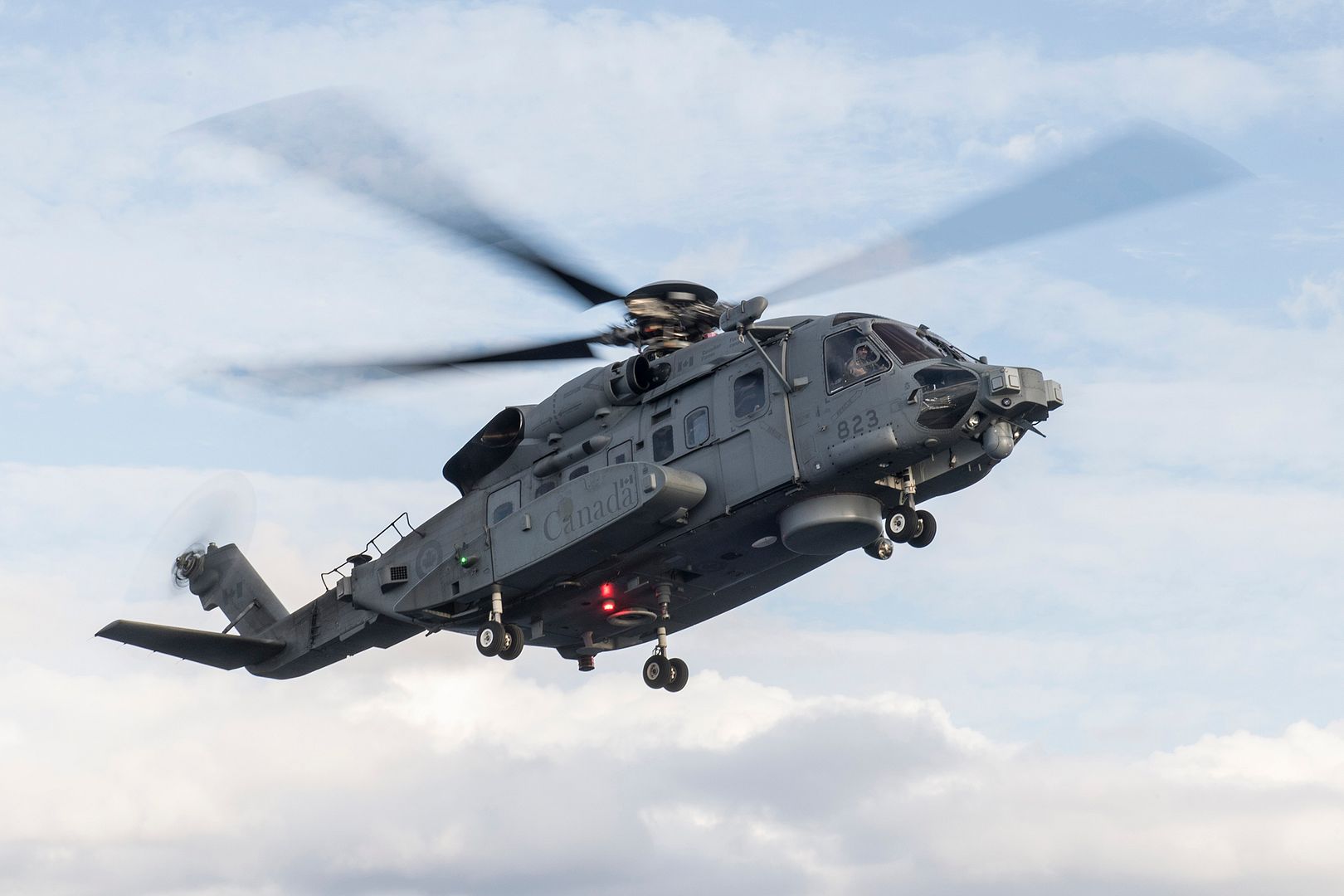
-
 Main AdminA B-52 Stratofortress bomber from the 23rd Expeditionary Bomb Squadron at Andersen Air Force Base, Guam, receives fuel from a KC-135 Stratotanker from the 506th Expeditionary Aerial Refueling Squadron while conducting a mission at the Joint Pacific Alaska Range Complex (JPARC), Alaska, on Feb. 5, 2019. The JPARC is the Department of Defense?s premier training venue in Alaska with 67,000 square miles that make it one of the largest instrumented air, ground and electronic combat training range in the world. The 23rd EBS is currently deployed from Minot Air Force Base, North Dakota, in support of U.S. Indo-Pacific Command?s Continuous Bomber Presence operations, which have been ongoing since March 2004. This recent mission is consistent with international law and United States? long-standing commitment to a free and open Indo-Pacific. (U.S. Air Force photo by Staff Sgt. James Richardson)
Main AdminA B-52 Stratofortress bomber from the 23rd Expeditionary Bomb Squadron at Andersen Air Force Base, Guam, receives fuel from a KC-135 Stratotanker from the 506th Expeditionary Aerial Refueling Squadron while conducting a mission at the Joint Pacific Alaska Range Complex (JPARC), Alaska, on Feb. 5, 2019. The JPARC is the Department of Defense?s premier training venue in Alaska with 67,000 square miles that make it one of the largest instrumented air, ground and electronic combat training range in the world. The 23rd EBS is currently deployed from Minot Air Force Base, North Dakota, in support of U.S. Indo-Pacific Command?s Continuous Bomber Presence operations, which have been ongoing since March 2004. This recent mission is consistent with international law and United States? long-standing commitment to a free and open Indo-Pacific. (U.S. Air Force photo by Staff Sgt. James Richardson)
PHILIPPINE SEA (Feb. 6, 2019) An F-35B Lightning II aircraft attached to the F-35B detachment of the ?Flying Tigers? of Marine Medium Tiltrotor Squadron (VMM) 262 (Reinforced) takes off from the flight deck of the amphibious assault ship USS Wasp (LHD 1) during a Visit, Board, Search and Seizure (VBSS) drill. Wasp, flagship of the Wasp Amphibious Ready Group, with embarked 31st Marine Expeditionary Unit, is operating in the Indo-Pacific region to enhance interoperability with partners and serve as a ready-response force for any type of contingency. (U.S. Navy photo by Mass Communication Specialist 2nd Class Sarah Myers)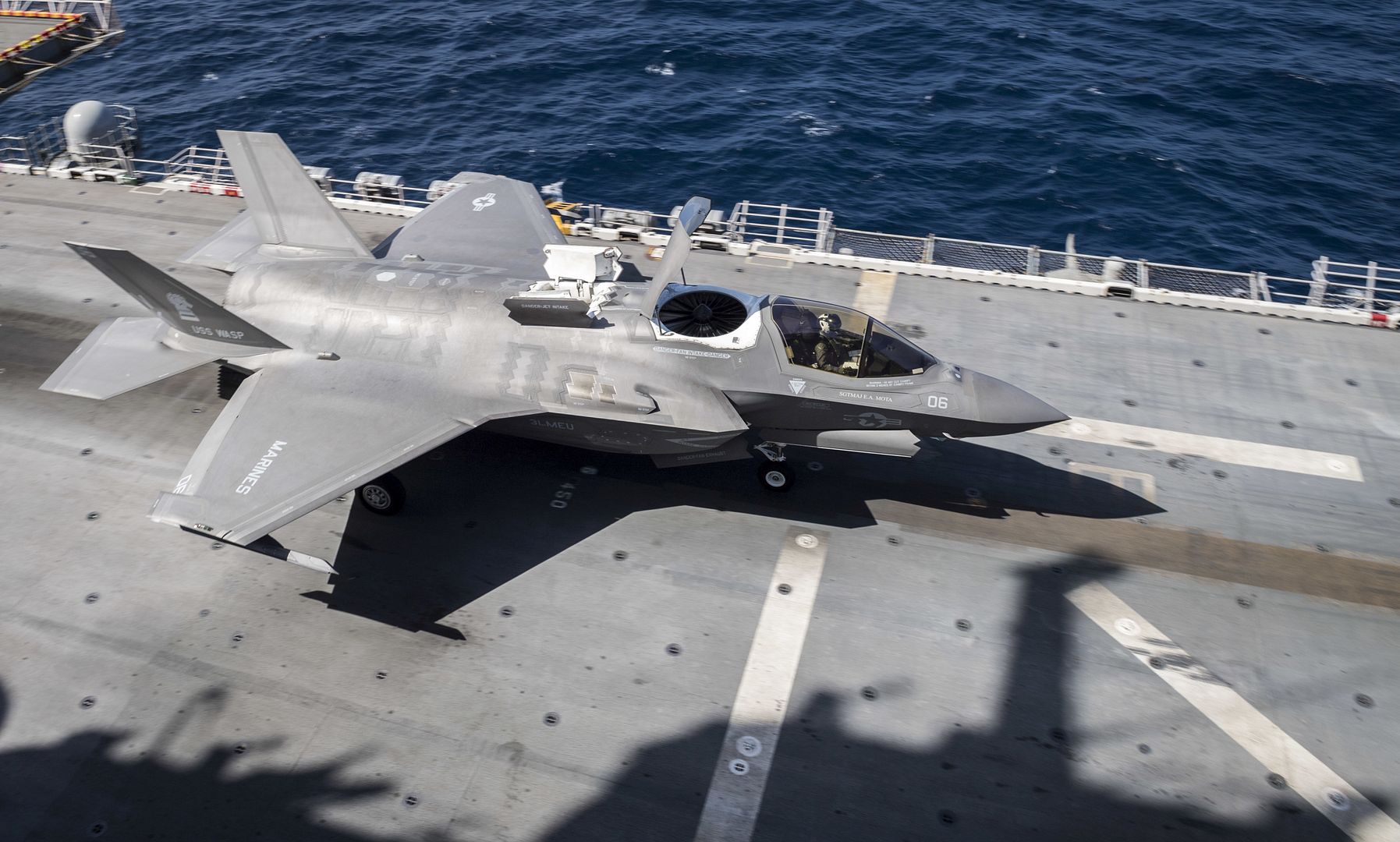
After recently receiving a new look and modifications at the Ogden Air Logistics Complex, the NF-16D known as VISTA (Variable stability In-flight Simulator Test Aircraft), departs Hill Air Force Base, Utah, Jan. 30, 2019. The aircraft is the only one of its kind in the world and is the flag-ship of the U.S. Air Force Test Pilot School. It?s highly modified, allowing pilots to change the aircraft?s flight characteristics and stability to mimic that of other aircraft. (U.S. Air Force photo's by Cynthia Griggs,and Alex R. Lloyd,)
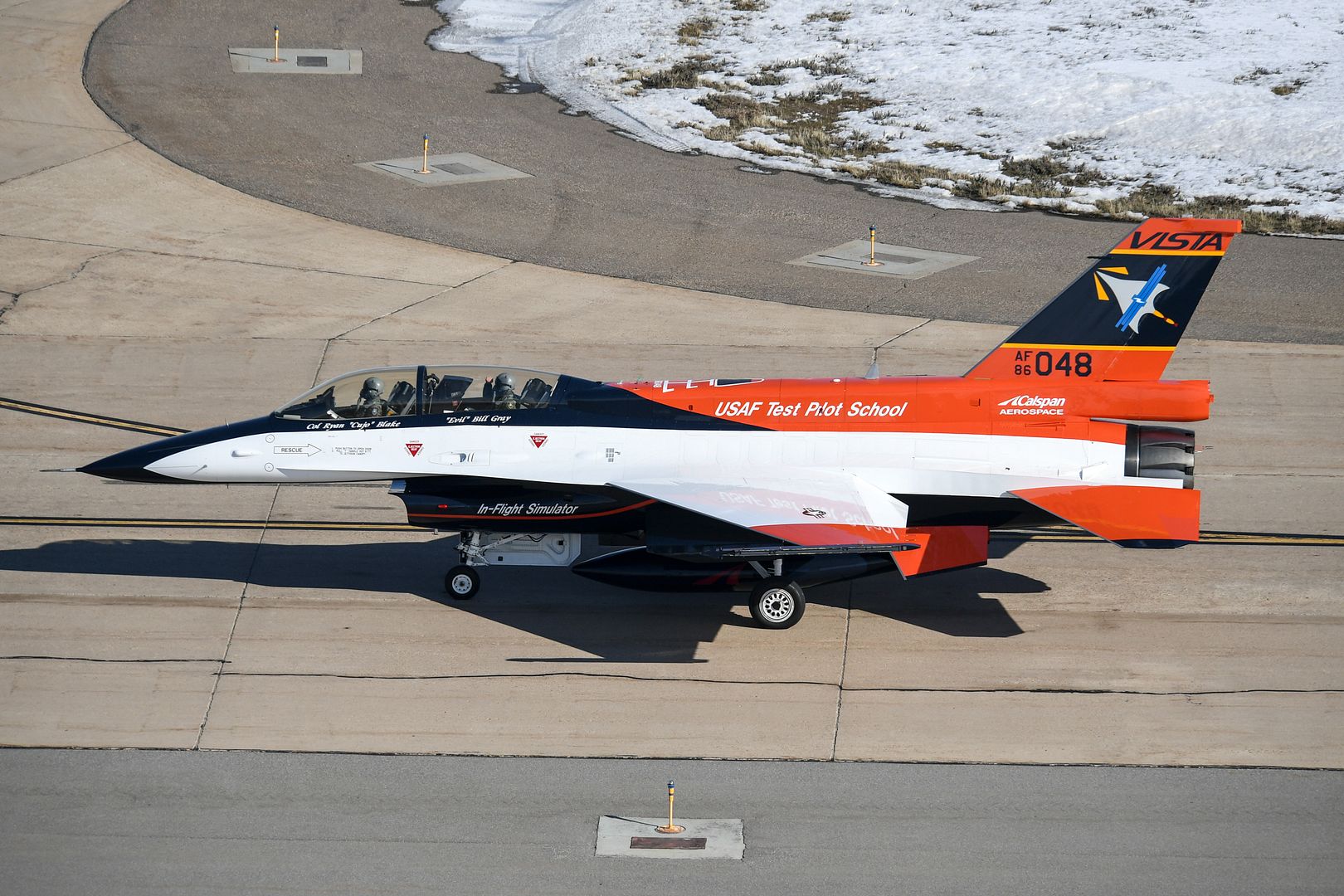
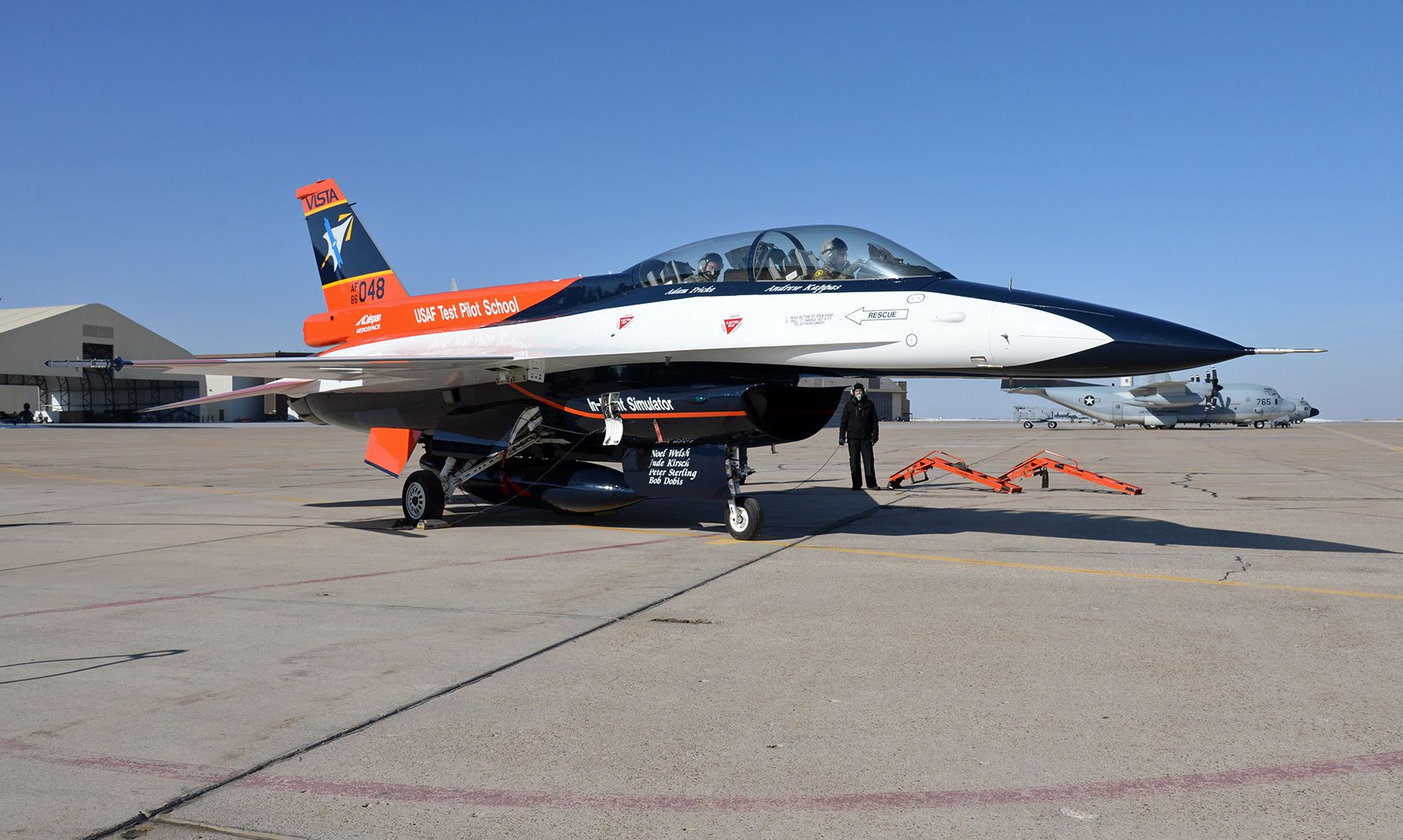
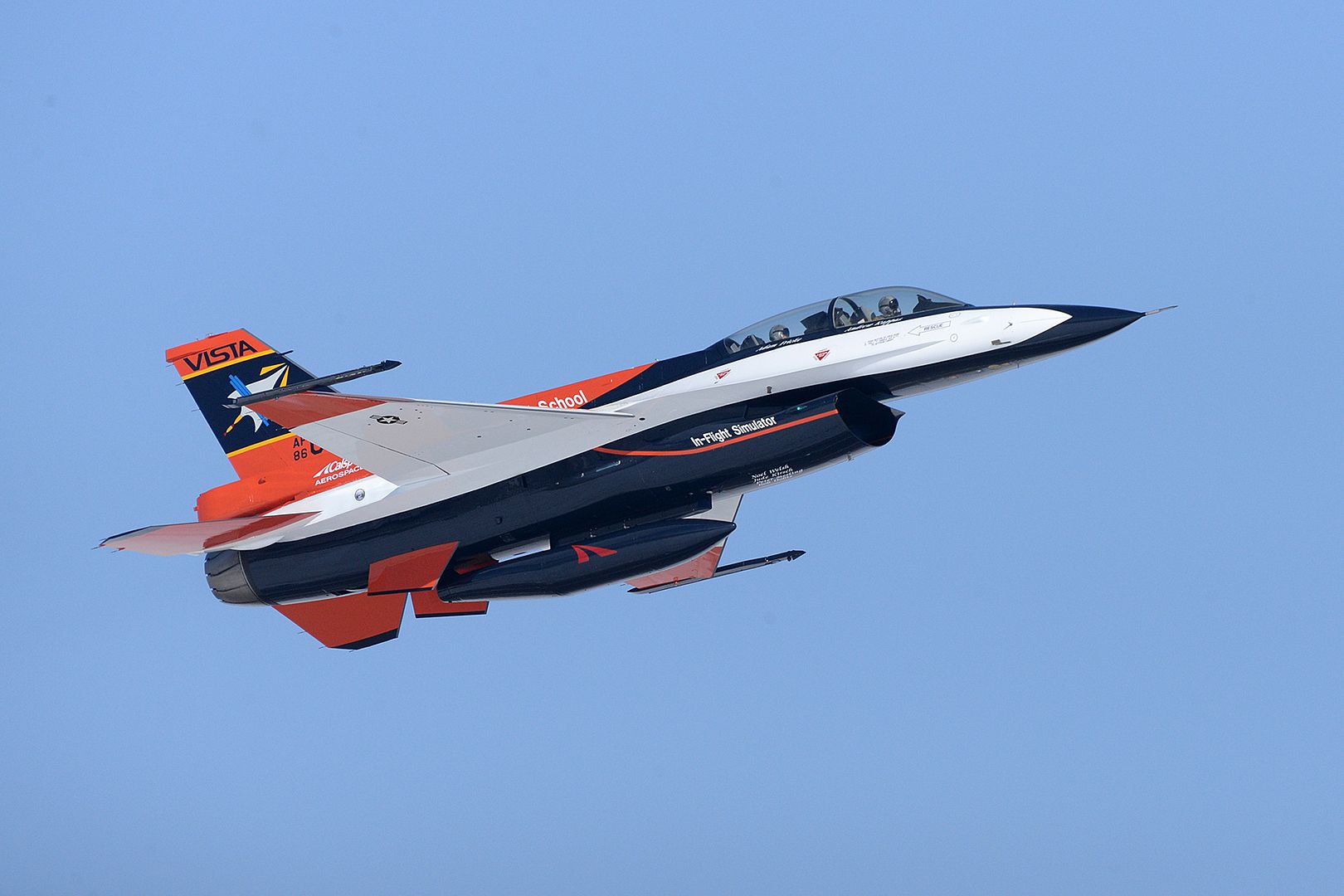
ATLANTIC OCEAN (Feb. 4, 2019) An F/A-18F Super Hornet assigned to the "Jolly Rogers" of Strike Fighter Squadron (VFA) 103 prepares to launch from the flight deck of the Nimitz-class aircraft carrier USS Abraham Lincoln (CVN 72). Abraham Lincoln is underway conducting a composite training unit exercise (COMPTUEX) with Carrier Strike Group (CSG) 12. The components of CSG-12 embody a "team-of-teams" concept, combining advanced surface, air and systems assets to create and sustain operational capability. This enables them to prepare for and conduct global operations, have effective and lasting command and control, and demonstrate dedication and commitment to becoming the strongest warfighting force for the Navy and the nation. (U.S. Navy photo by Mass Communication Specialist Seaman Michael Singley/Released)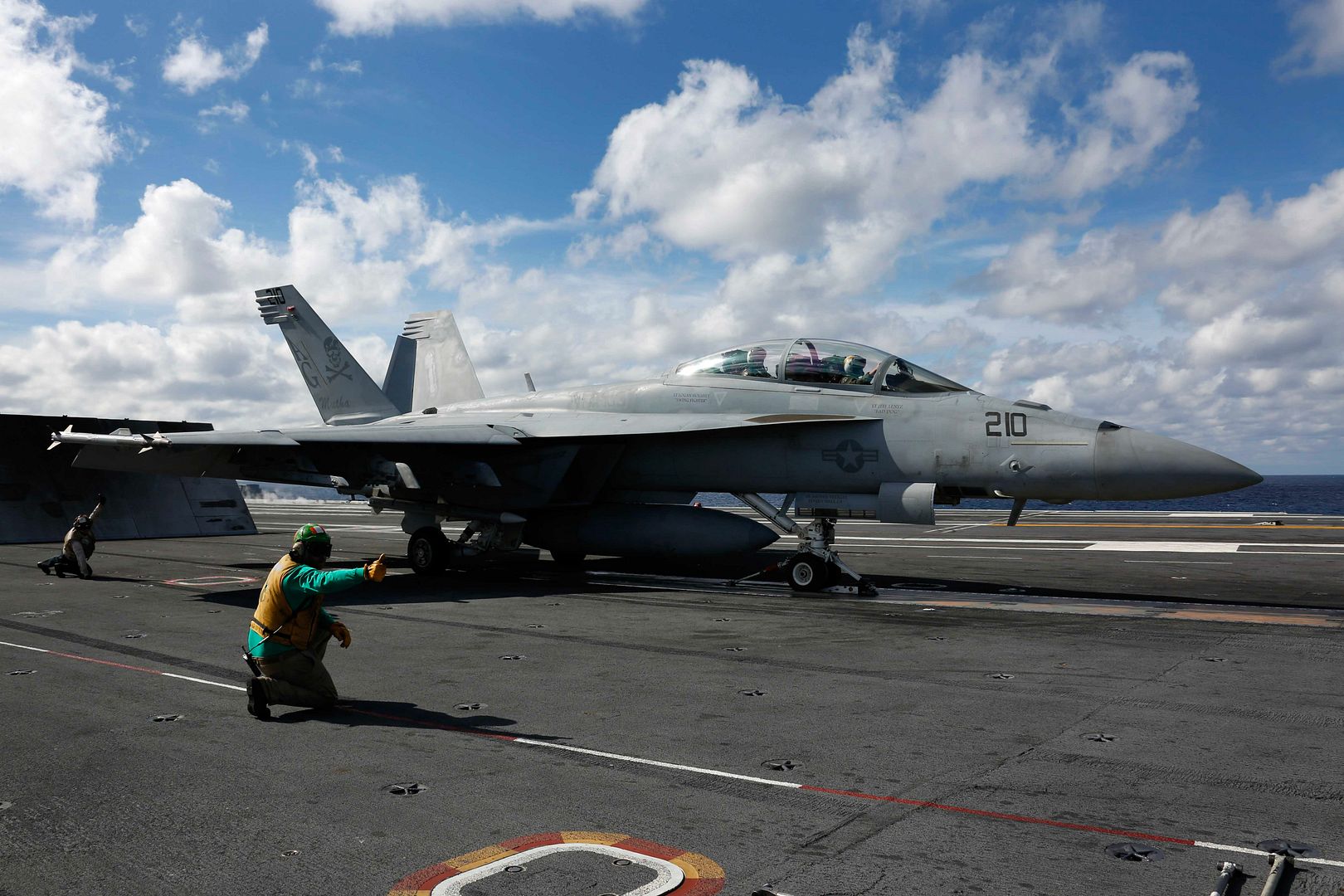
Amsterdam, The Netherlands, February 7th, 2019 ? Embraer and WDL Aviation GmbH, a German charter and ACMI airline headquartered at Cologne Bonn Airport and part of the Zeitfracht logistics group, have signed an agreement on a Flight Hour Pool Program to support the airline?s recently leased fleet of four used E190s.
WDL, which becomes a new Embraer E-Jet family customer in 2019, leased the aircraft to replace their current fleet. They will start flying the E190s from March 2019.
The Pool Agreement, which will be in effect during the duration of the lease, covers access to a large stock of components at Embraer?s distribution center in Paris (France), full repair coverage and a selected list of essential components, parts and services to support the start of aircraft operations.
WDL Aviation is a leading provider of ACMI (Aircraft, Crew, Maintenance, Insurance) services in Europe. With the Pool Program, part of the TechCare suite of services that Embraer offers to support the growing fleet of Embraer aircraft worldwide, WDL will have the flexibility to access the parts and support the fleet quickly.
?It?s great to welcome WDL Aviation and provide efficient services and support solutions to their Embraer fleet. Our mission is to keep our customer happy every day and to also ensure the satisfaction of their end customers. This makes our portfolio the most competitive, setting the market?s highest standards?, said Johann Bordais, President & CEO, Embraer Services & Support.
?Support directly from the OEM is a huge advantage and we are looking forward to working with Embraer. This partnership fits naturally with the company?s growth strategy as it leverages increased competitiveness providing repairable solutions through reduced lead times and costs, guaranteeing our daily operations and customer satisfaction?, said Walter B?hnke, managing director of WDL Aviation.
Embraer?s Flight Hour Pool Program, which currently supports more than 40 airlines worldwide, is designed to allow airlines to minimize their upfront investment on expensive repairable inventories and resources and to take advantage of Embraer?s technical expertise and its vast component repair service provider network. The results are significant savings on repair and inventory carrying costs, reduction in required warehousing space, and the elimination of resources required for repair management, while ultimately providing guaranteed performance levels.
This Pool Program is part of a suite of services that Embraer offers or has under development to support the worldwide growing fleet of Embraer aircraft through TechCare, the new Embraer platform that assembles the entire portfolio of products and solutions to deliver the best experience of services and support.
About WDL-Aviation
WDL-Aviation was founded in 1974 and is based at Cologne/Bonn Airport. The founder, Theodor W?llenkemper, took over the operation of working and training flights in 1955 ? immediately after Lufthansa and before LTU. Today, the company is a leading provider of aircraft leasing, commercial and private charter flights. WDL-Aviation was recently taken over by the Zeitfracht Group and is a member of the Federal Association of German Airlines (BDF) and the Board of Airline Representatives in Germany (Barig).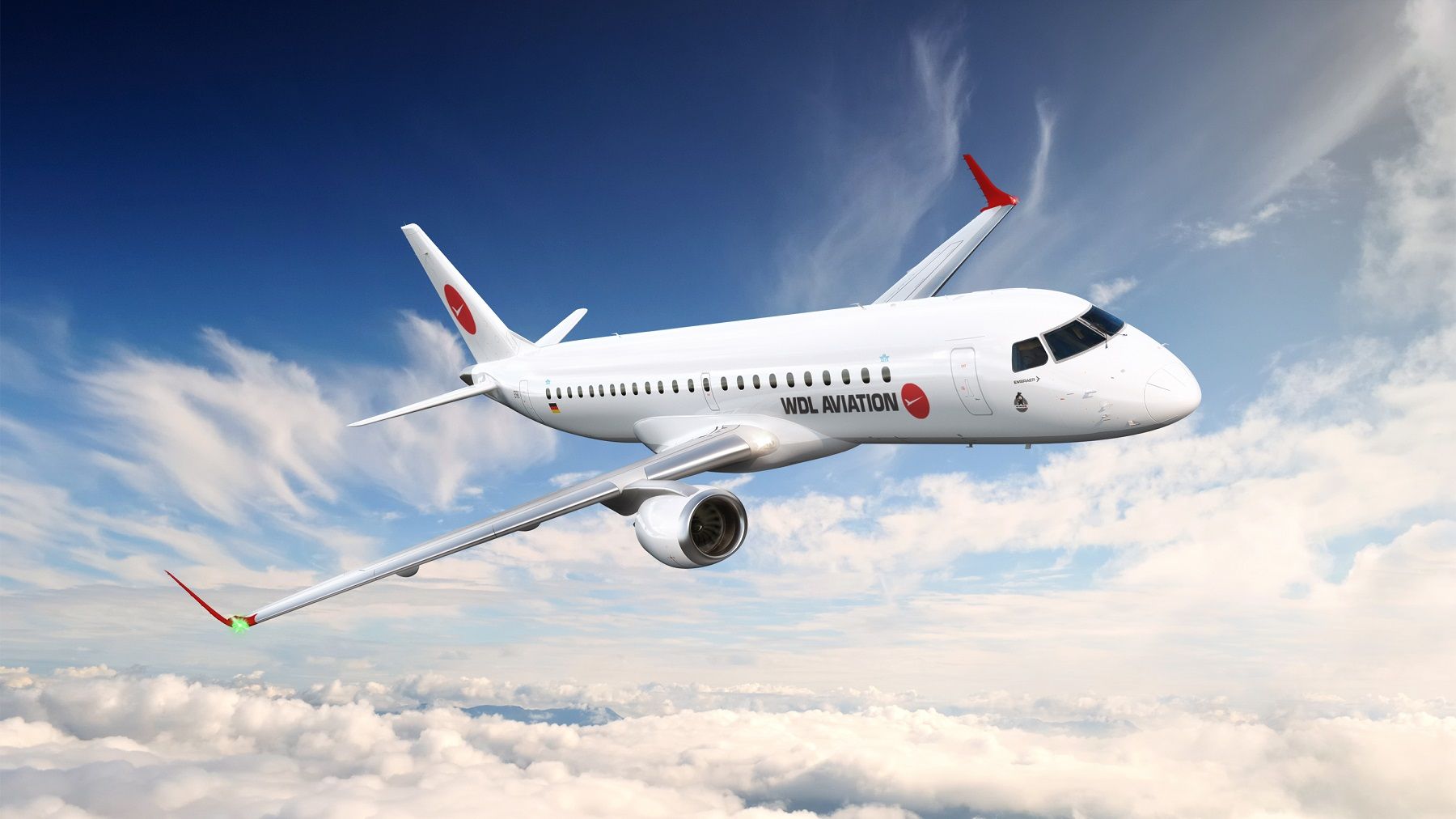
February 7, 2019 Montr?al Business Aircraft, Press Release
Bombardier is proud to announce that the industry flagship business jet, the Global 7500 aircraft, has received European Aviation Safety Agency (EASA) certification, validating the requirement for the aircraft?s operation in Europe.
?We?ve transformed business aviation with the Global 7500 jet,? said Michel Ouellette, Senior Vice President, Program Management and Engineering, Bombardier Business Aircraft. ?With the longest range in the industry, the aircraft can connect more international cities nonstop, opening many destinations to our customers.?
The Global 7500 business jet earned its type certification from Transport Canada in September 2018, followed by the U.S. Federal Aviation Administration (FAA) in November 2018, both within only 24 months after the first flight of FTV1. The aircraft entered service in December 2018.
The Global 7500 aircraft has demonstrated its ability to fly further than any other business jet by expanding its advertised range to 7,700 nautical miles, a full 300 nautical miles further than initial commitments. Not only does the Global 7500 aircraft provide more range than any other competitor, it can do so from the most difficult locations around the world: the Global 7500 jet exceeded takeoff and landing performance commitments, allowing for exceptional capability from Europe?s most desirable and challenging destinations such as Sion and St. Moritz, Switzerland*. These achievements have enabled the Global 7500 aircraft to push the boundaries of business travel by resetting the bar for long-haul missions in the industry. The Global 7500 aircraft is the only business jet that connects New York to Hong Kong and Singapore to San Francisco nonstop, flying eight passengers with standard NBAA IFR fuel reserves.*
The Global 7500 aircraft offers not only its signature smooth ride, but also an elevated cabin experience, with spaciousness that is unique among business jets, and its award-winning interior featuring a full-size kitchen and four true living spaces. The Global 7500 aircraft also debuts Bombardier?s patented Nuage seat, which was meticulously designed for maximum comfort and will be exclusive to the new Global family of aircraft.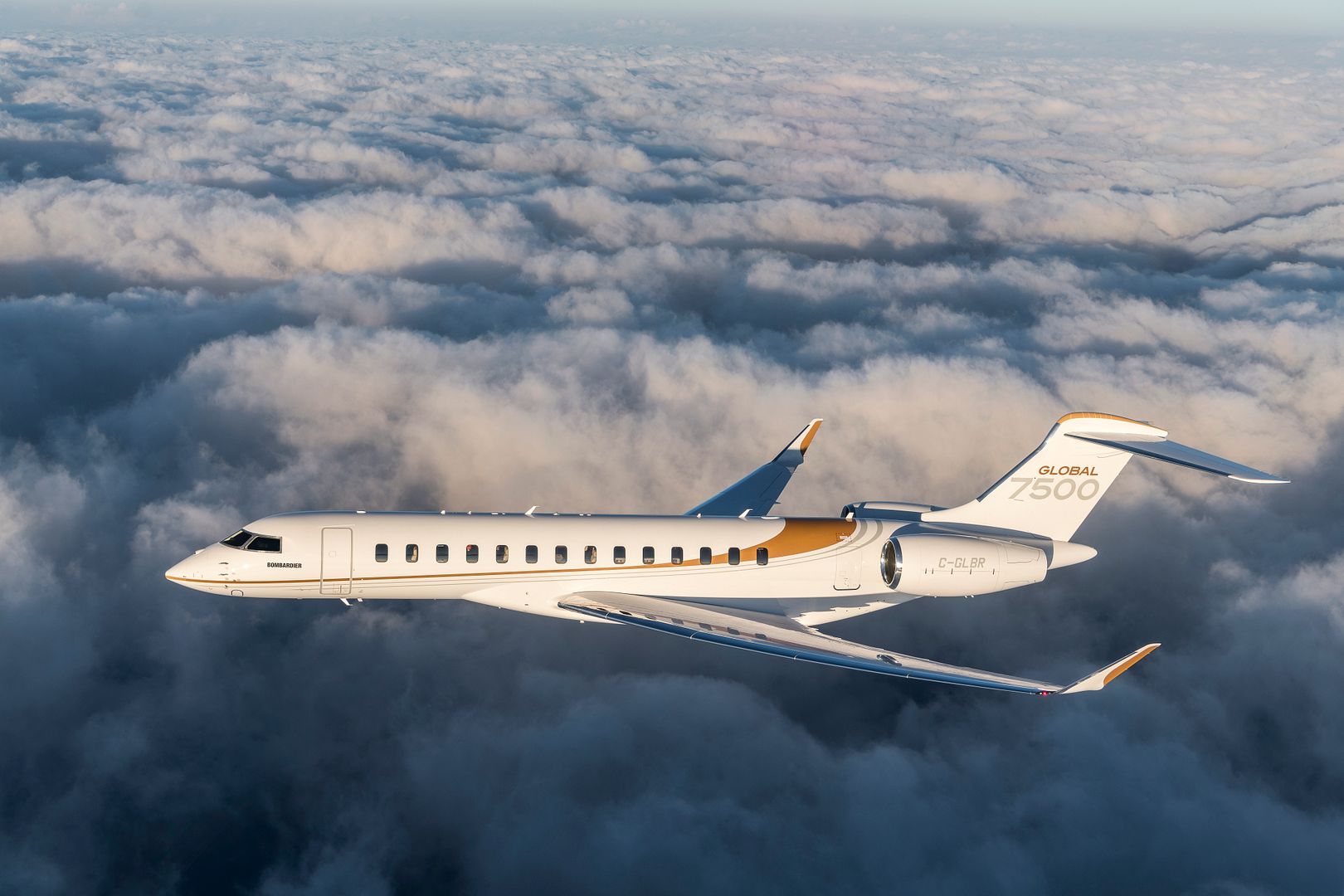
Post a reply
- Go to Previous topic
- Go to Next topic
- Go to Welcome
- Go to Introduce Yourself
- Go to General Discussion
- Go to Screenshots, Images and Videos
- Go to Off topic
- Go to Works in Progress
- Go to Skinning Tips / Tutorials
- Go to Skin Requests
- Go to IJAAF Library
- Go to Luftwaffe Library
- Go to RAF Library
- Go to USAAF / USN Library
- Go to Misc Library
- Go to The Ops Room
- Go to Made in Germany
- Go to Campaigns and Missions
- Go to Works in Progress
- Go to Juri's Air-Raid Shelter
- Go to Campaigns and Missions
- Go to Works in Progress
- Go to Skinpacks
- Go to External Projects Discussion
- Go to Books & Resources
